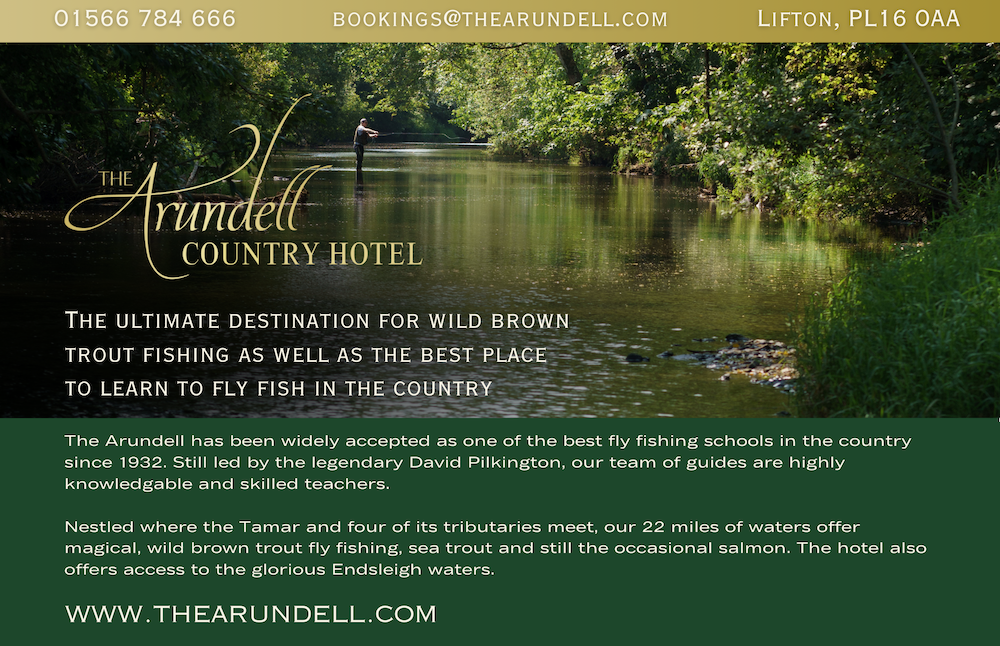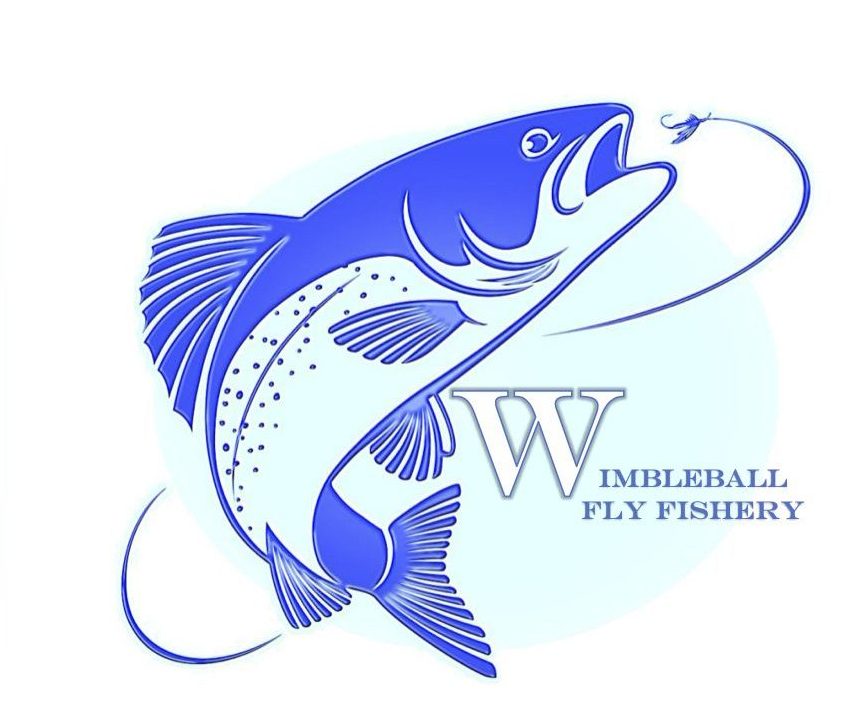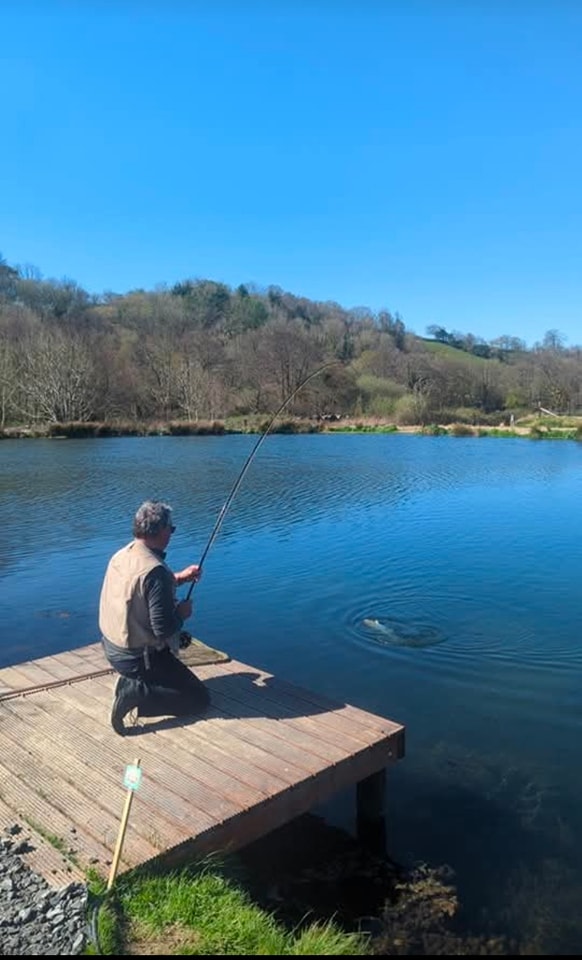
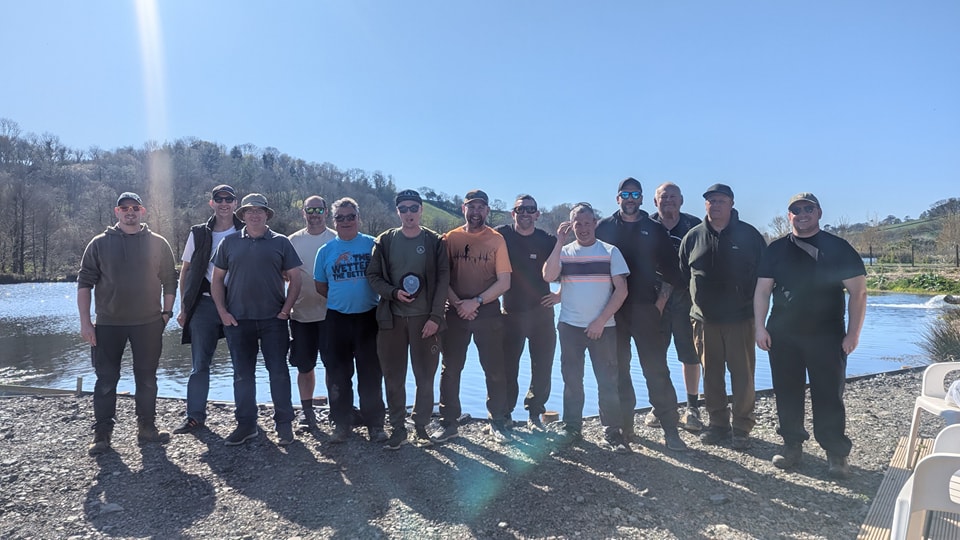
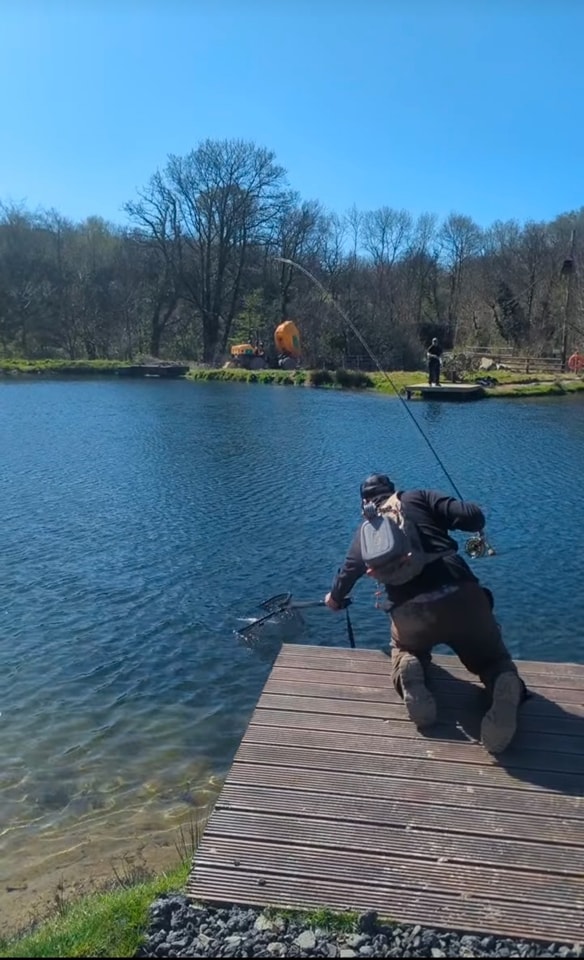
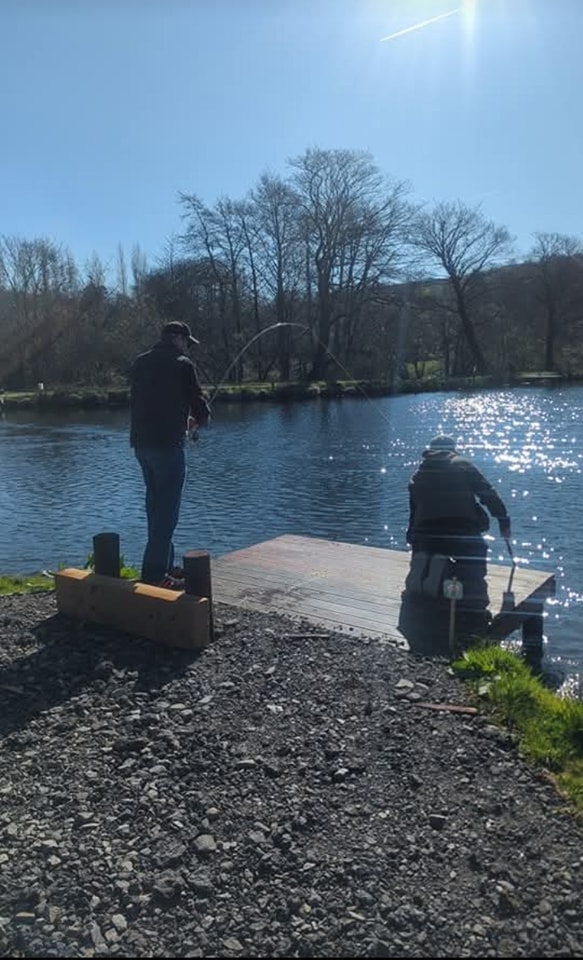
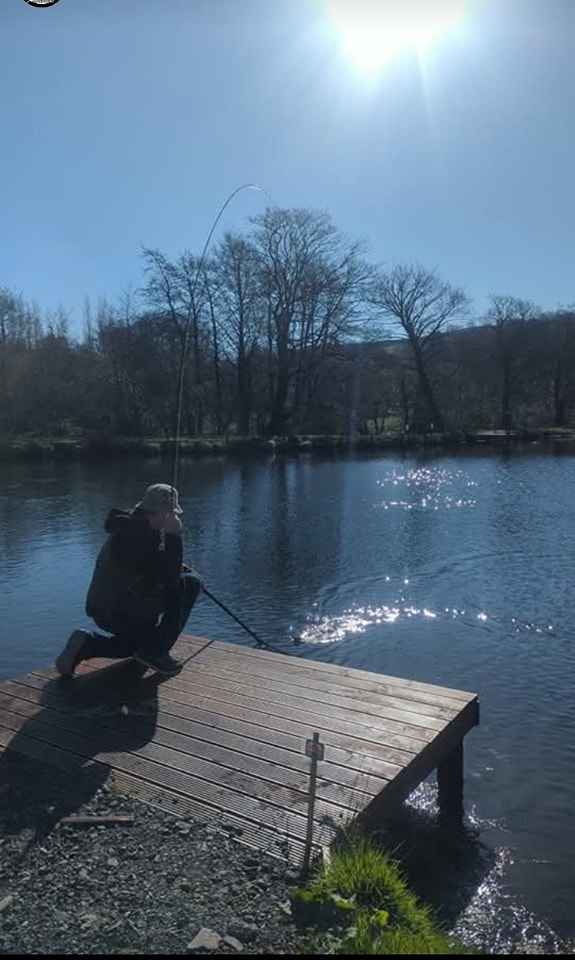
The first round of the Fluff Chuckers / SWLT Brown Trout Masters 2025
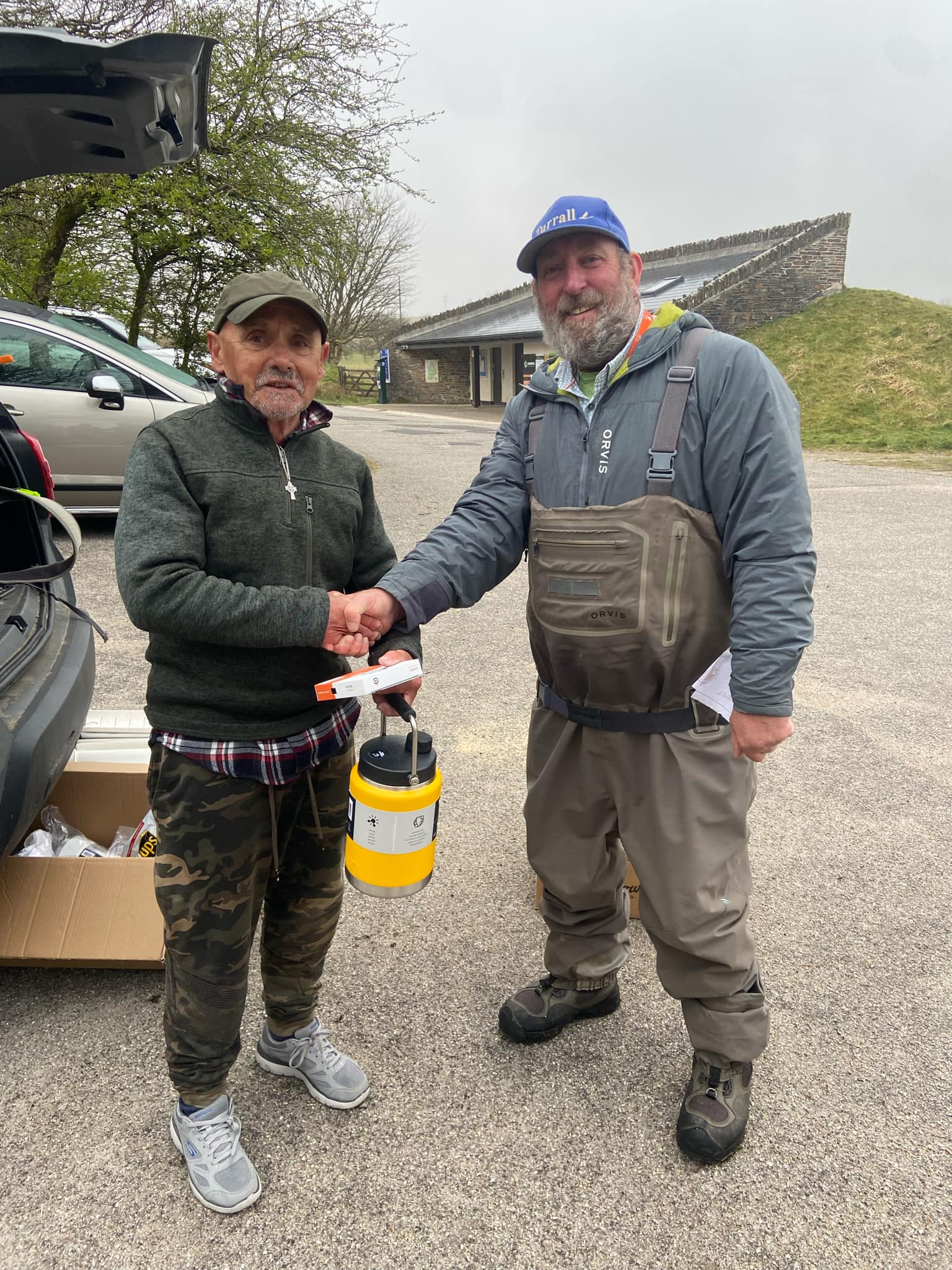
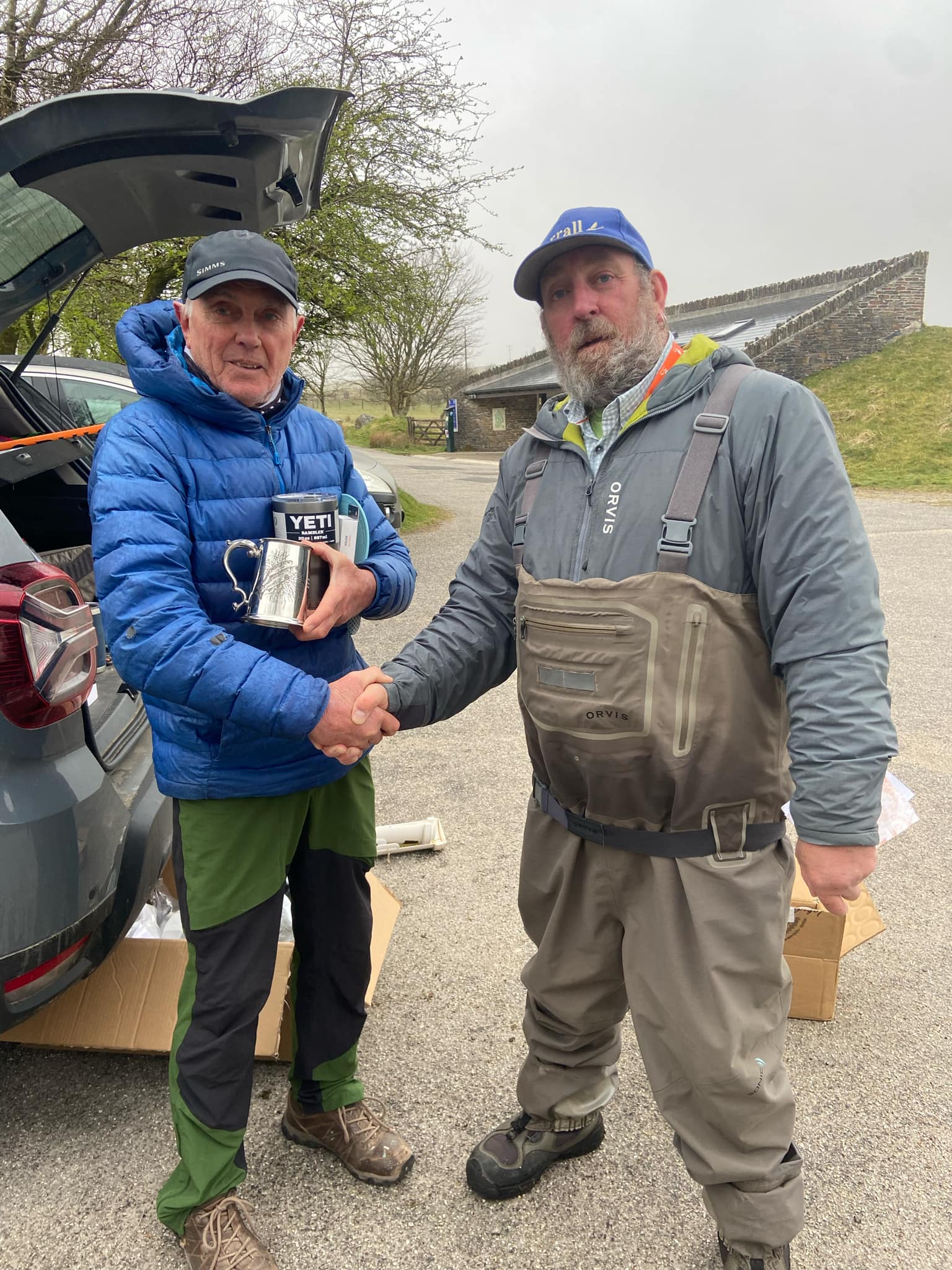
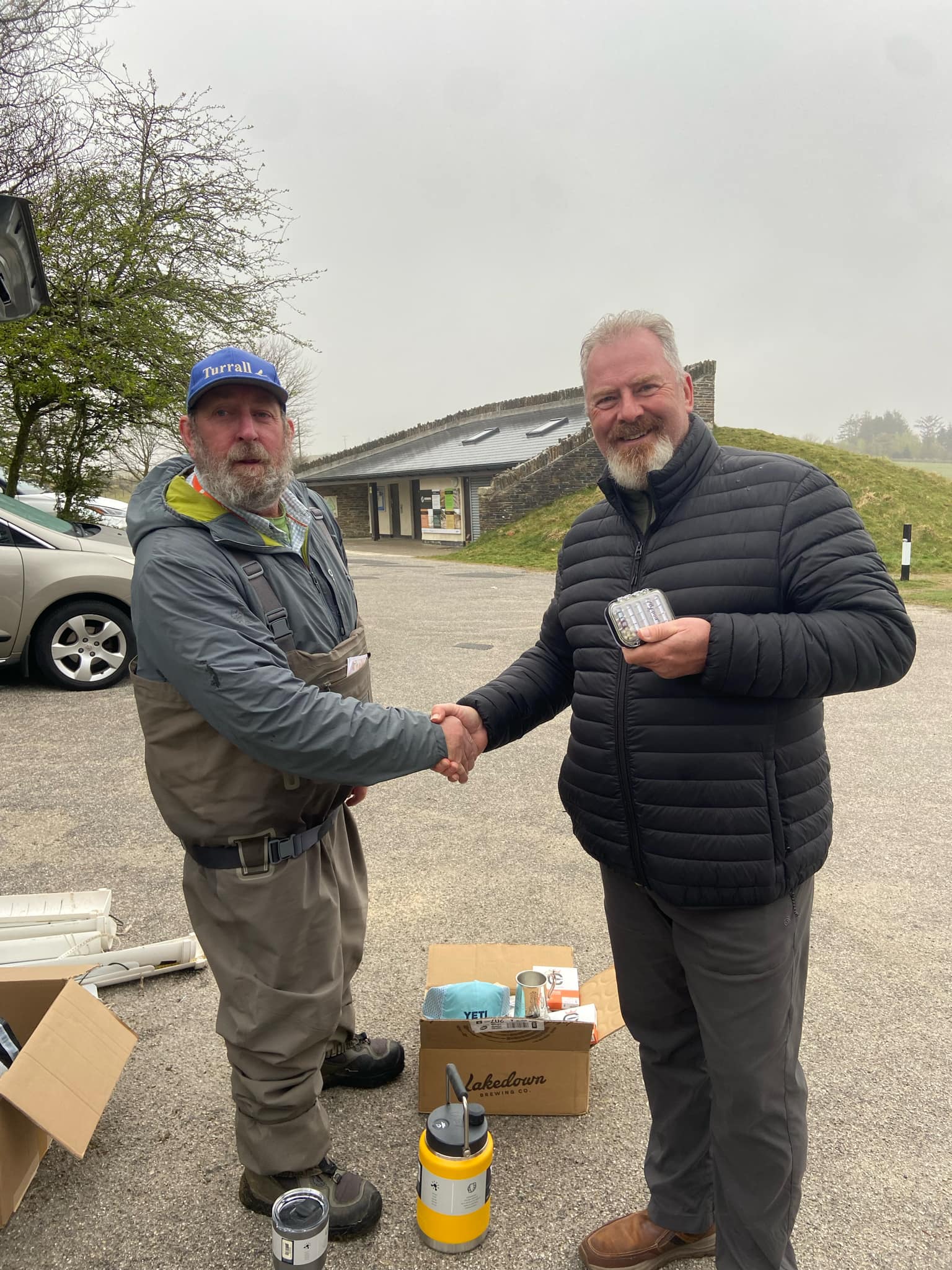
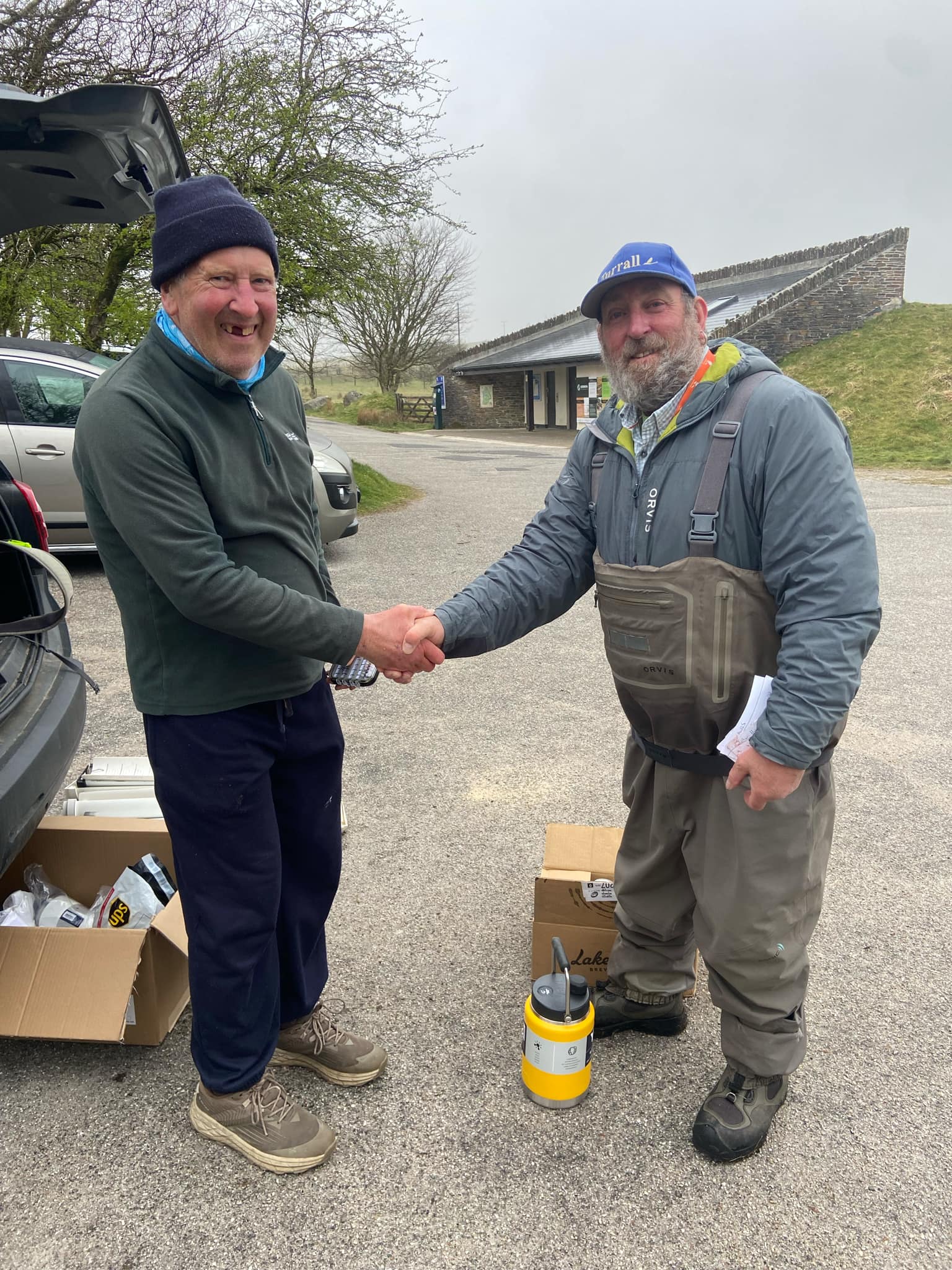
-
John Huckings 286 cm 2
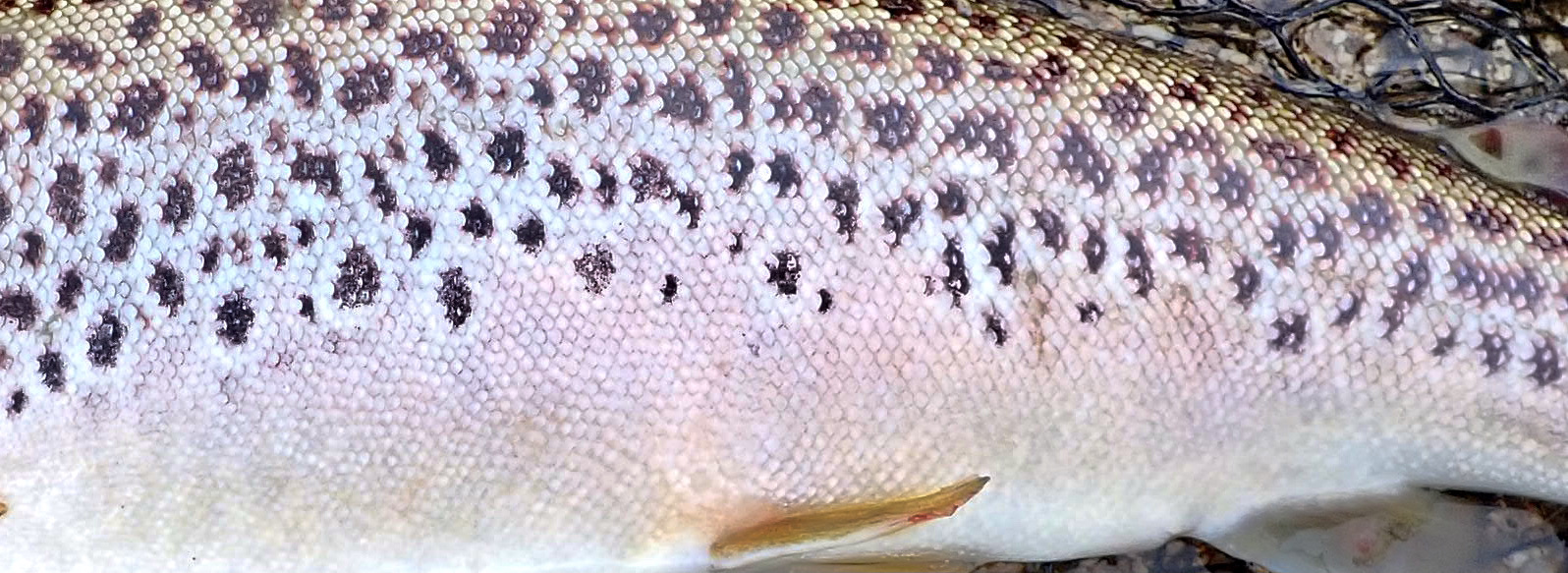
It hardly seems possible that another twelve months have passed since I joined the Fluff Chucker’s at Colliford high on Bodmin Moor. Fortunately I had learnt a valuable lesson that despite the favourable weather forecast it gets cold up there on the Cornish highlands. It seemed relatively mild and with a light breeze I pondered for moment before donning a thick fleece under my fly fishing vest and waders. Familiar faces were gathered around Rodney Wevills car as we collected our measuring gutters and received our goodie pack from sponsors Turral Flies.
We all headed eagerly to the water’s edge with competitors heading to their favoured areas. I had a cunning plan to head to where I had fished before and with a gentle breeze blowing into the bay I felt sure a few fish would be present close in. I had set up with my new Snowbee Floating Line and leader with three flies. A black bead headed tadpole on the point, Black spider on the middle dropper and a black and red Zulu on the top dropper a combination that I would have confidence to fish most days in early spring.

The first hour proved difficult as I searched the water contacting a decent trout after ten minutes that threw the hook after a few seconds and a spectacular somersault!
A short while later the line again tightened and for a second or two I thought I had hooked the bottom; that slowly started to move followed by a glimpse of a thick spotted flank that erupted from the water in a flurry of spray! This was a beauty I thought but elation turned to despair as the hook hold gave way the big brown trout disappearing from whence it had come. Another tale of the one that got away added to life’s toll!
The leader was left tangled requiring a re-tying. This was not a brilliant start, then the wind started to strengthen and I nearly lost my cap the fastening button failed. I pulled my buff up over my cap and soldiered on as the wind picked up. I persisted for a while but no more takes followed and a move seemed a good idea. I walked a half a mile or so to an area I had caught from on my last two visits.
First cast and I hooked a trout that came detached after a brief leap from the lake. Fifty yards further along the bank and I hooked a brown trout of 36cm. Two casts later a beauty of 42.5 cm was safely in the net. Things were starting to come right and I fished on now with renewed confidence.
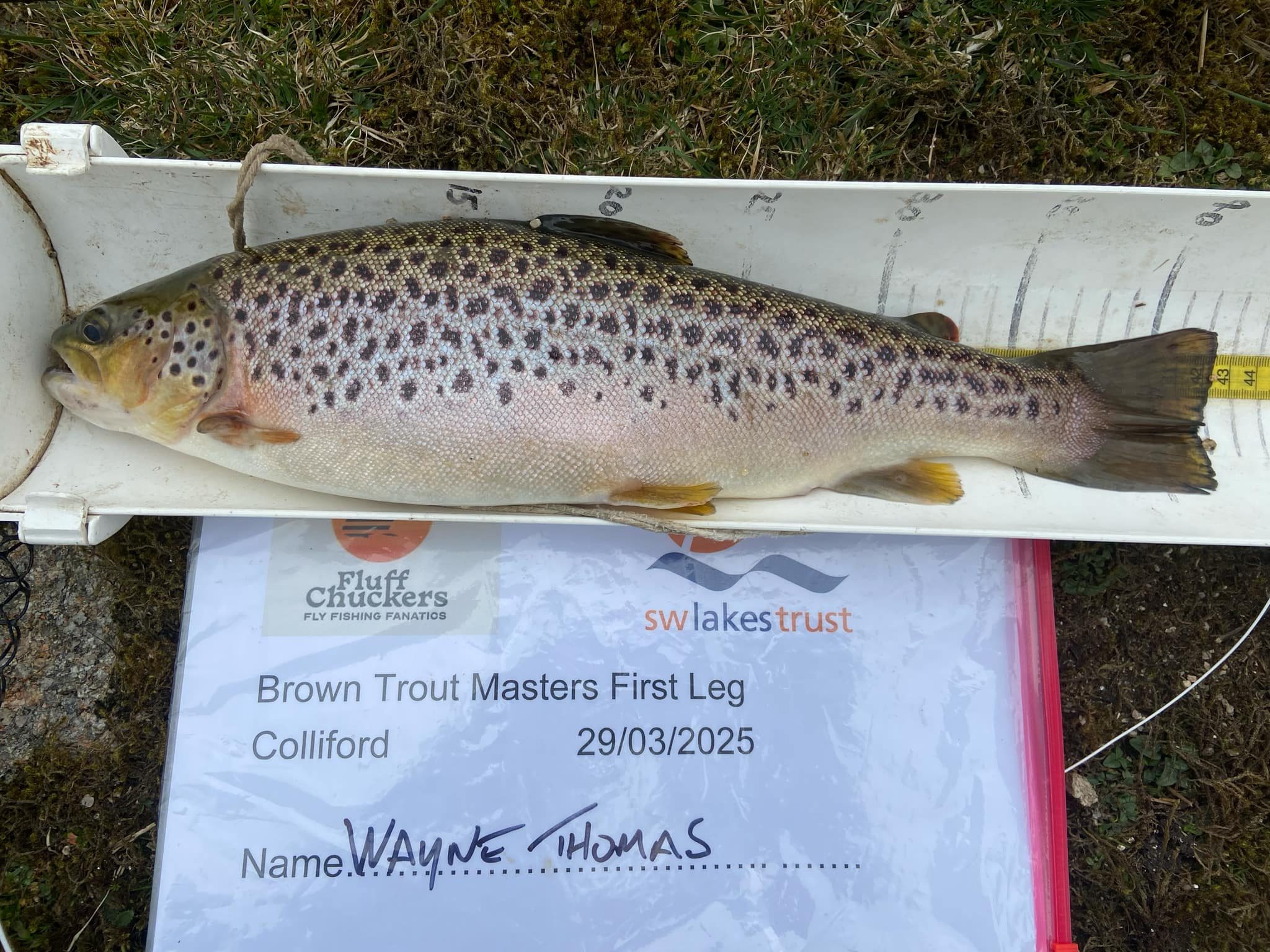
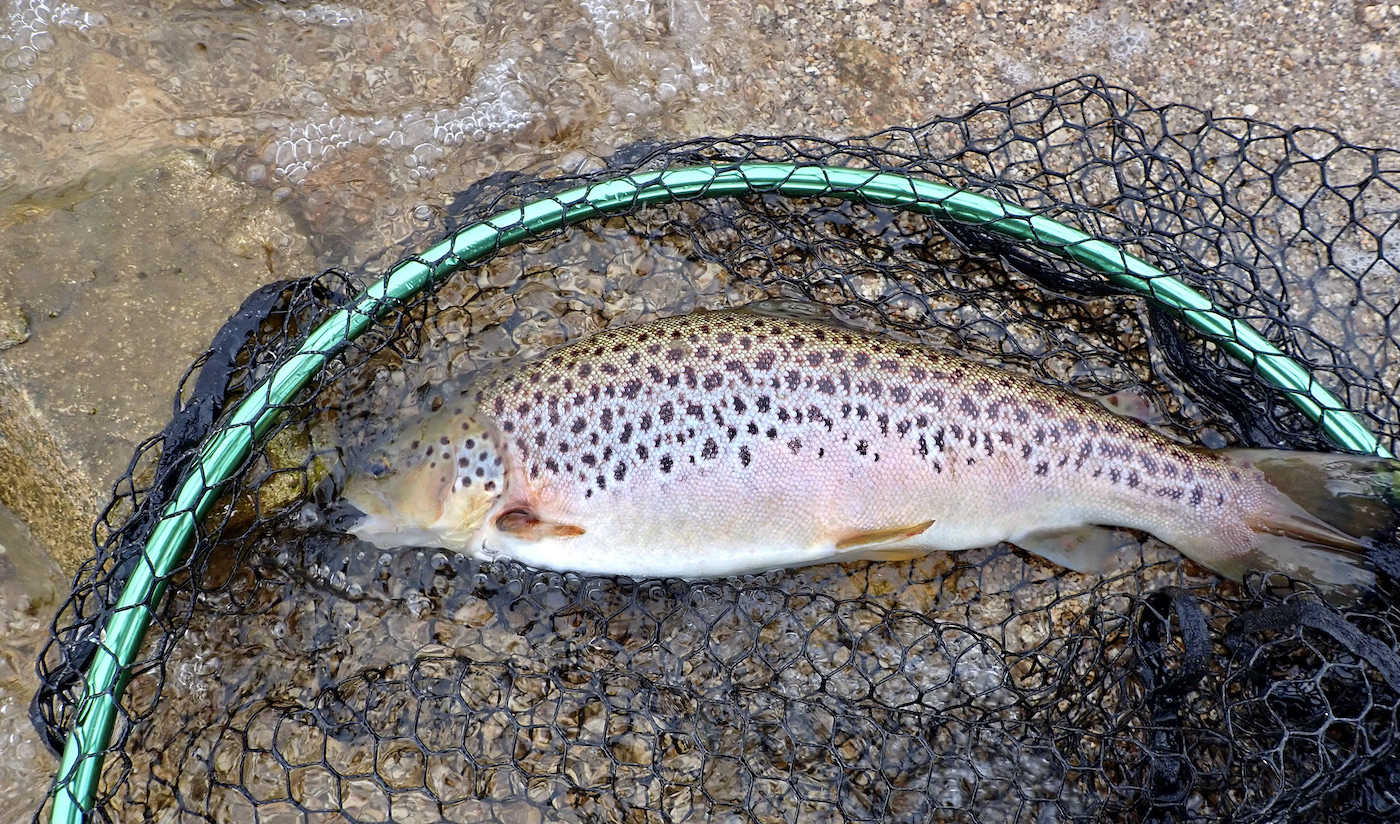
The wind was by now strong and bitter cold with the sun hiding behind grey clouds making it a rather bleak and inhospitable environment.
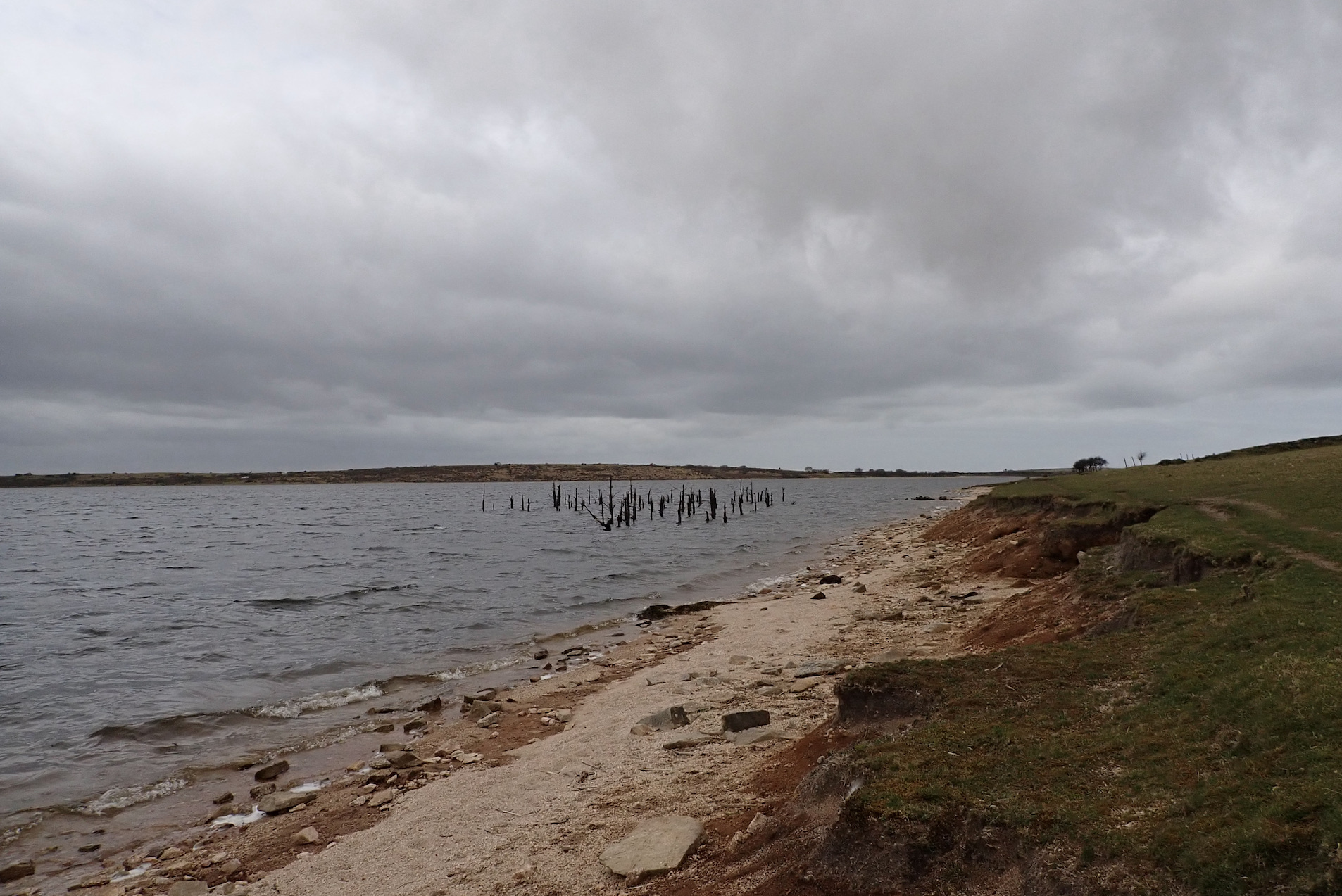
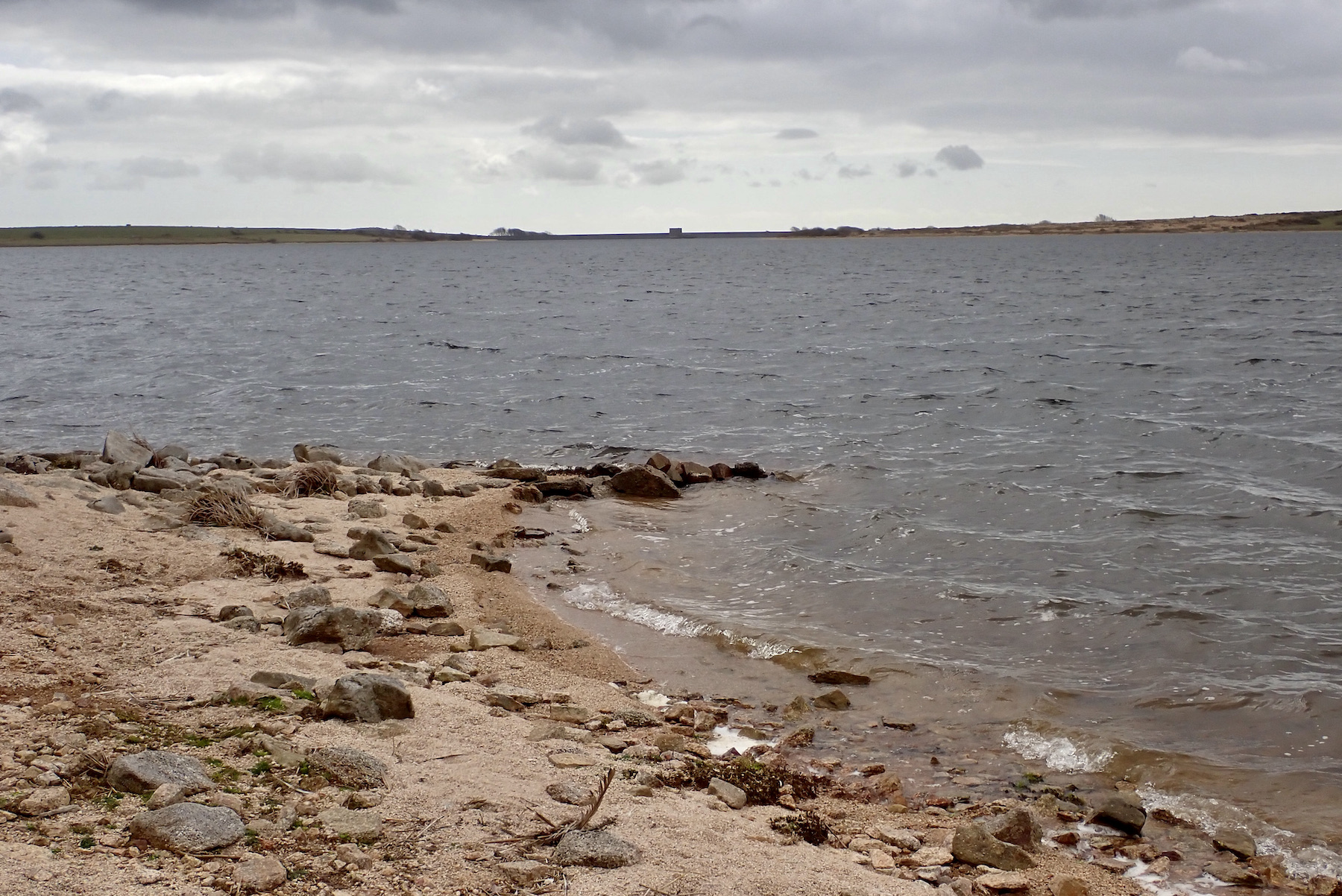
I added another small brown before deciding to head back to where I had started the day adding another two trout to end the day with five trout. In truth I wasn’t to disappointed to reel in at 5.00pm and leave the cold water behind for a while.
Back at the end of competition meet up Rodney worked out the results and I listened as tales of the day were told. The cold wind had resulted in widespread chilling to the bone, slip and trips, bloodied fingers from stray hooks and plenty of tales of escaping trout. All agreed through chattering teeth that it had been a great day and that the next event is eagerly awaited.
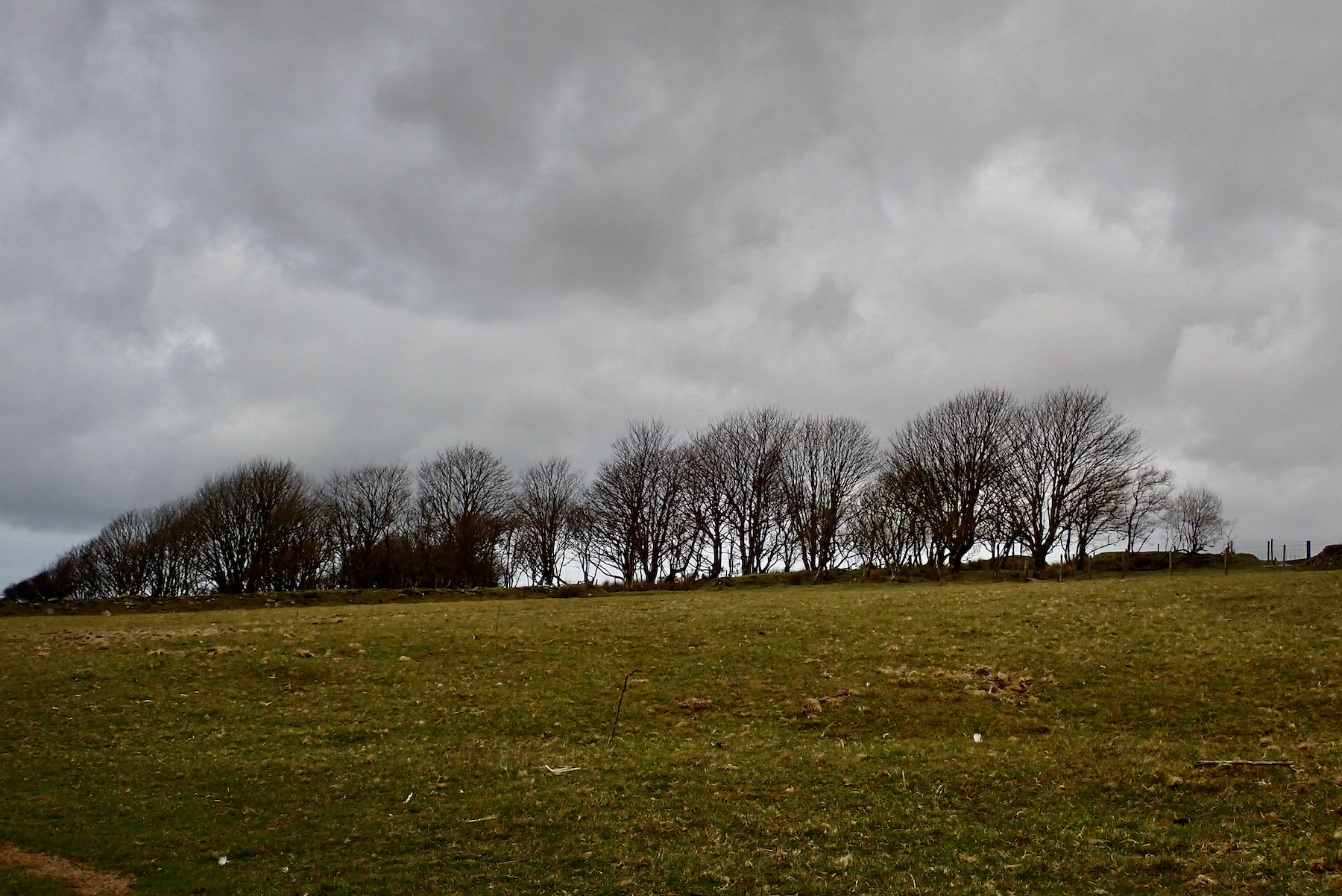
Wistlandpound Reservoir – Early season catches
Many thanks to Rodney Wevill for allowing me to reproduce his Facebook write up on his recent trip to Wistlandpound
I was surprised how low the reservoir is so early in the season. This gives more open bank to fish but is perhaps concerning for the summer ahead.
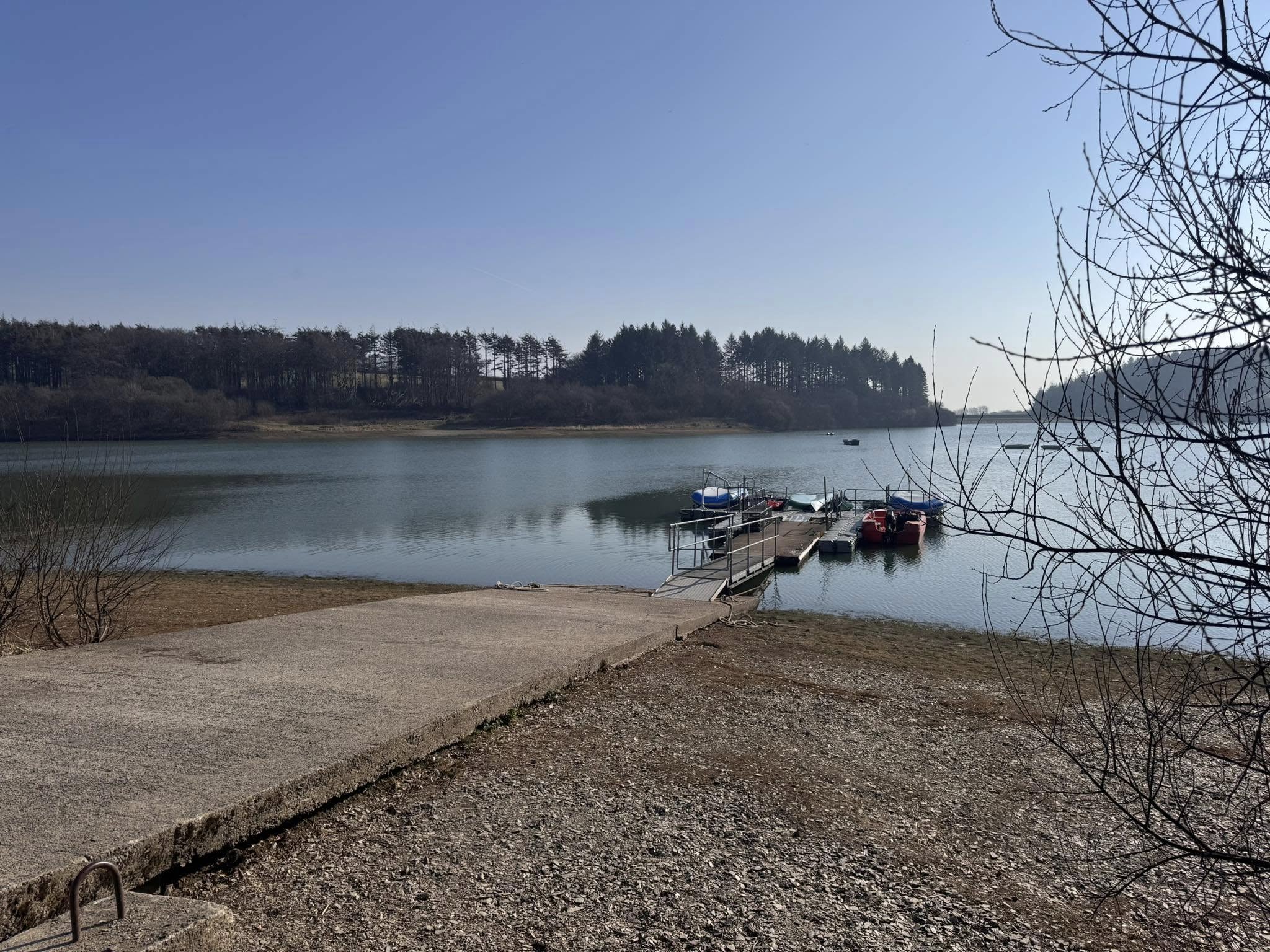
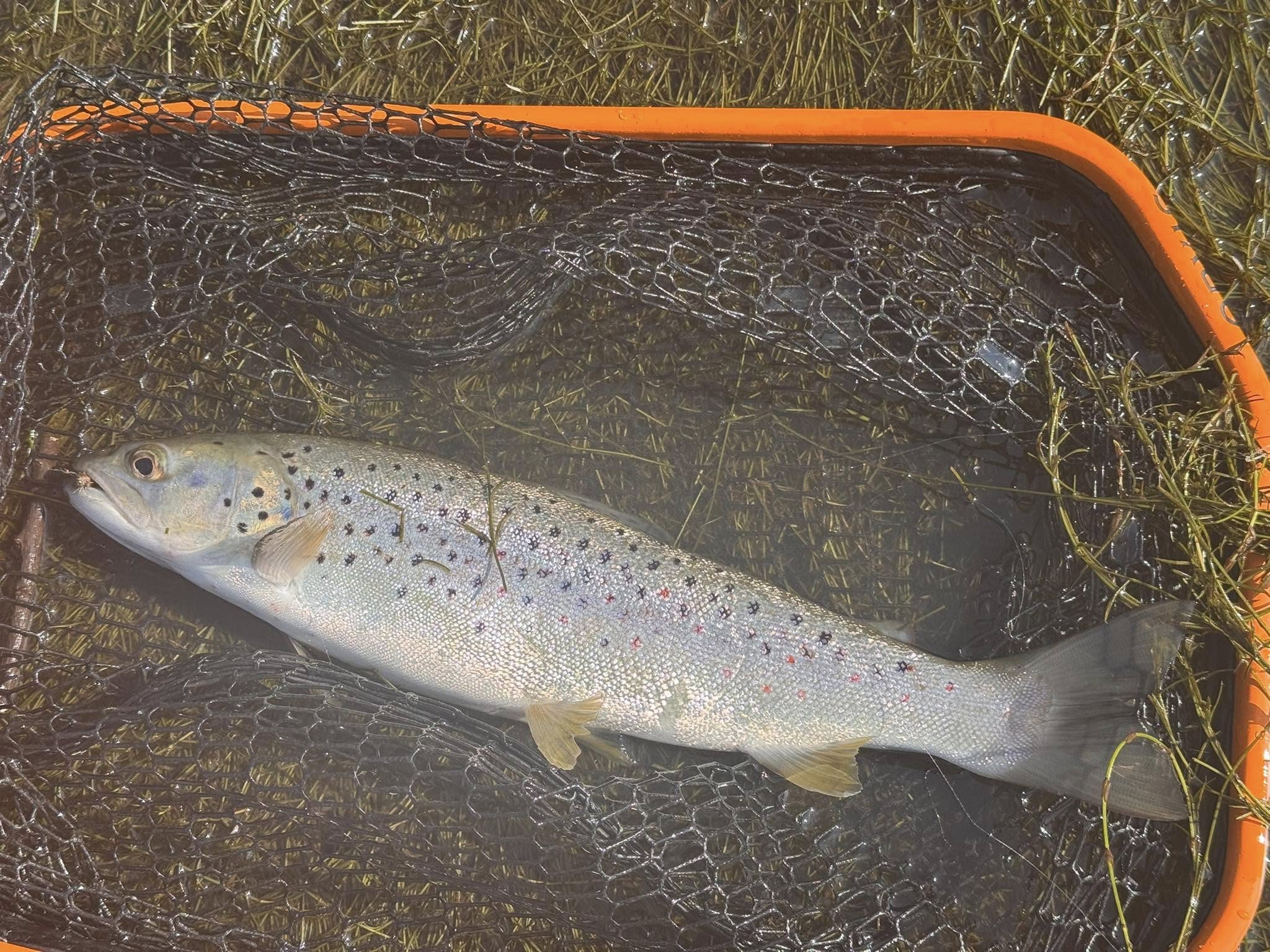
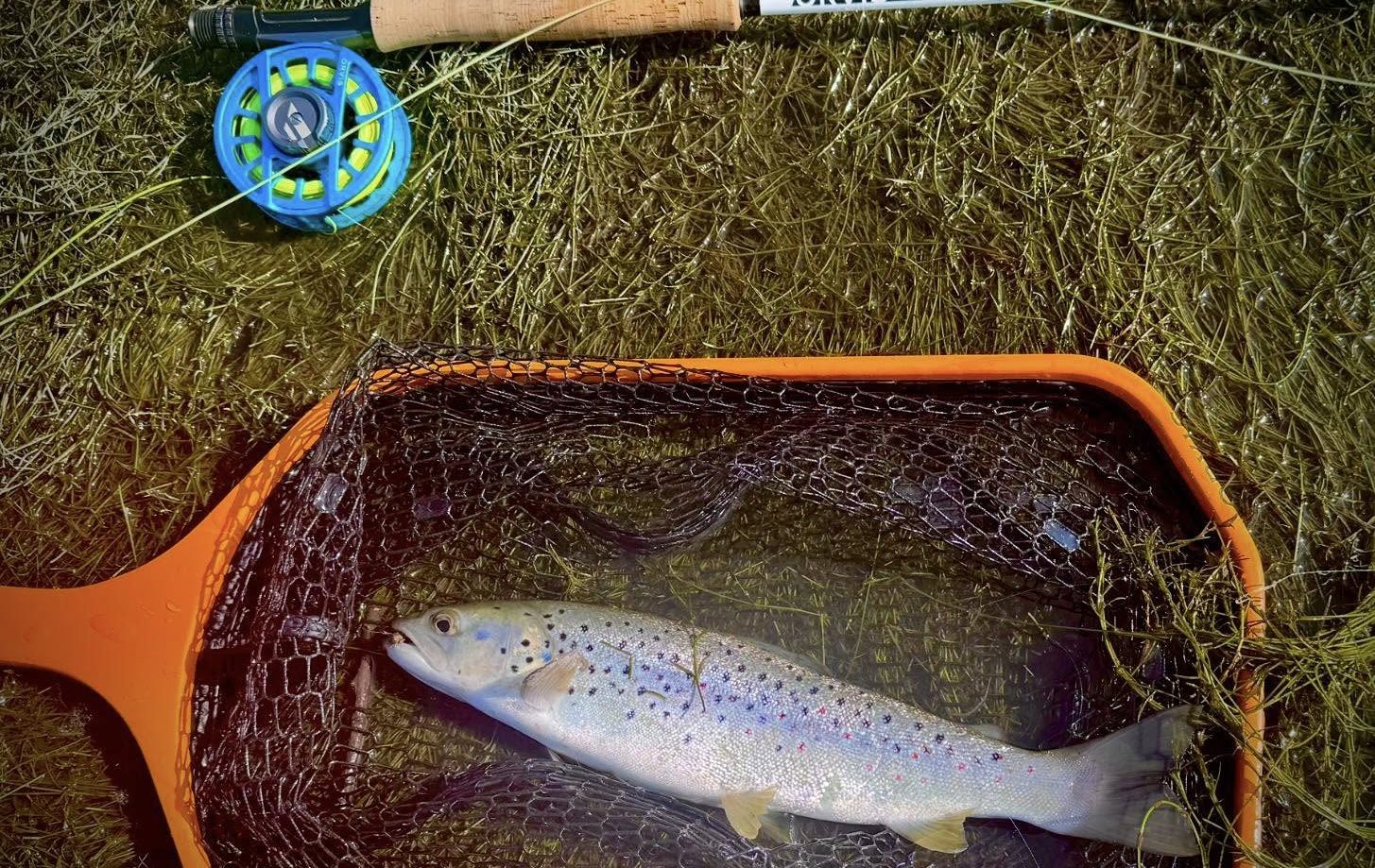
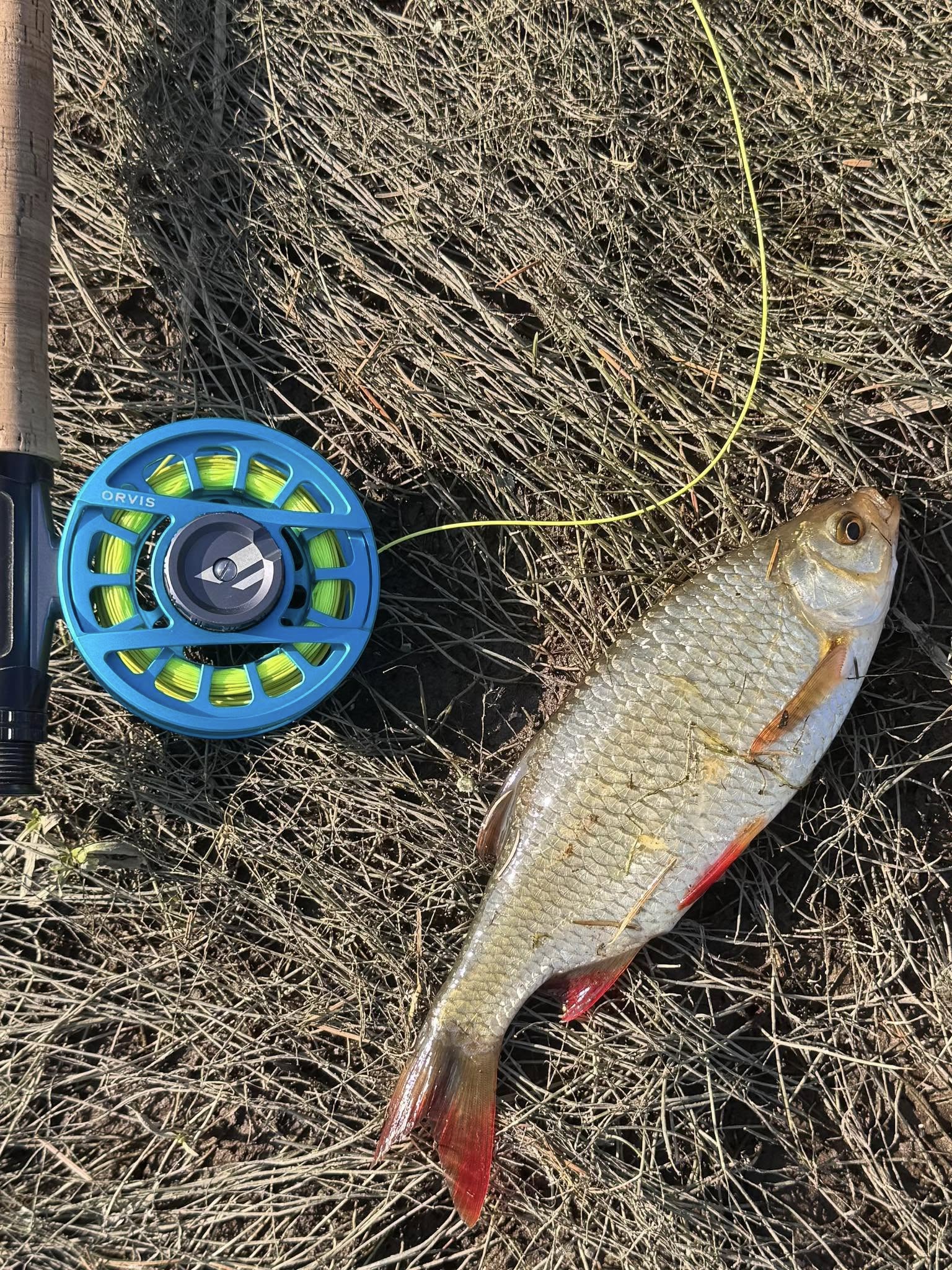
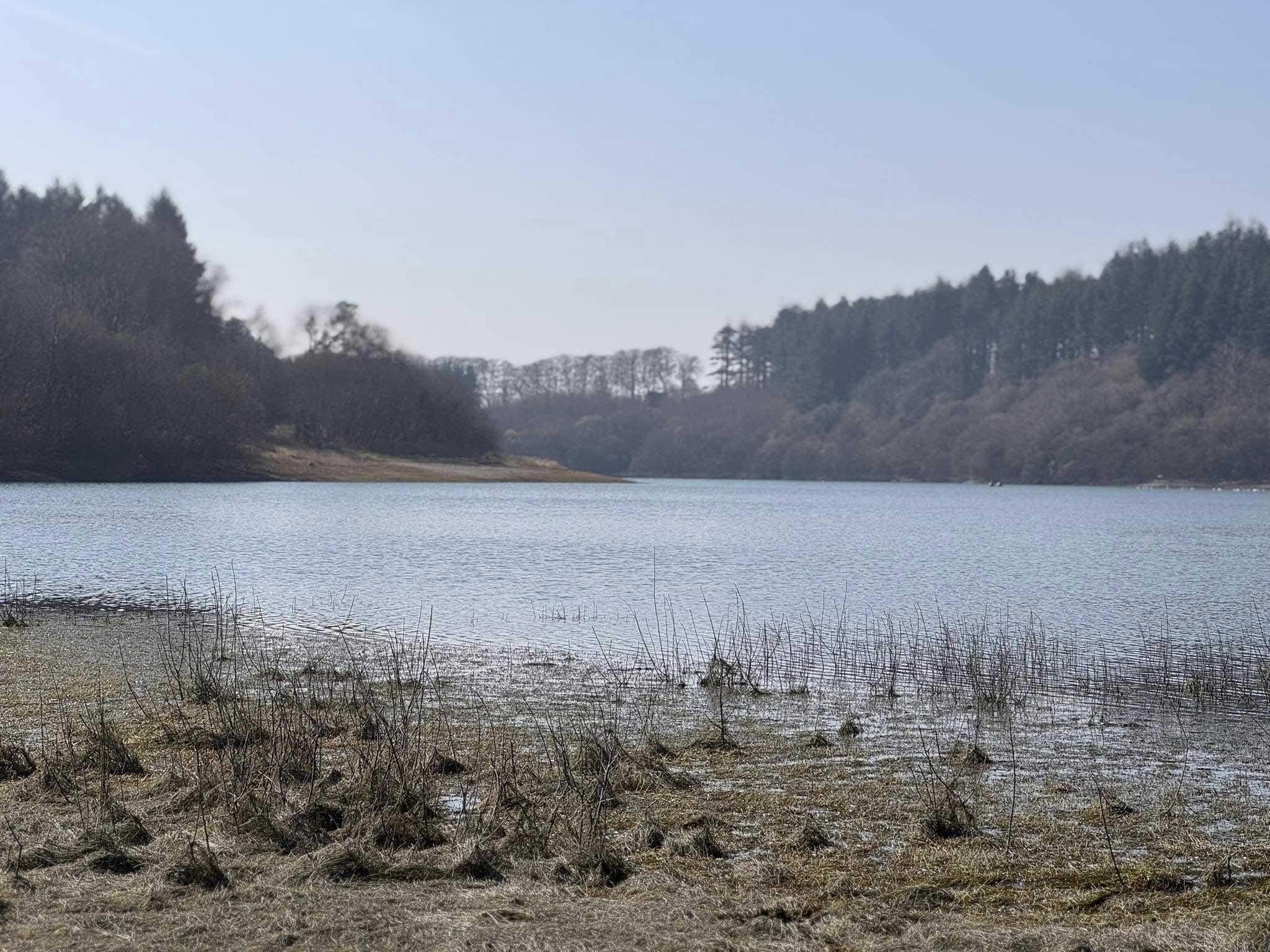
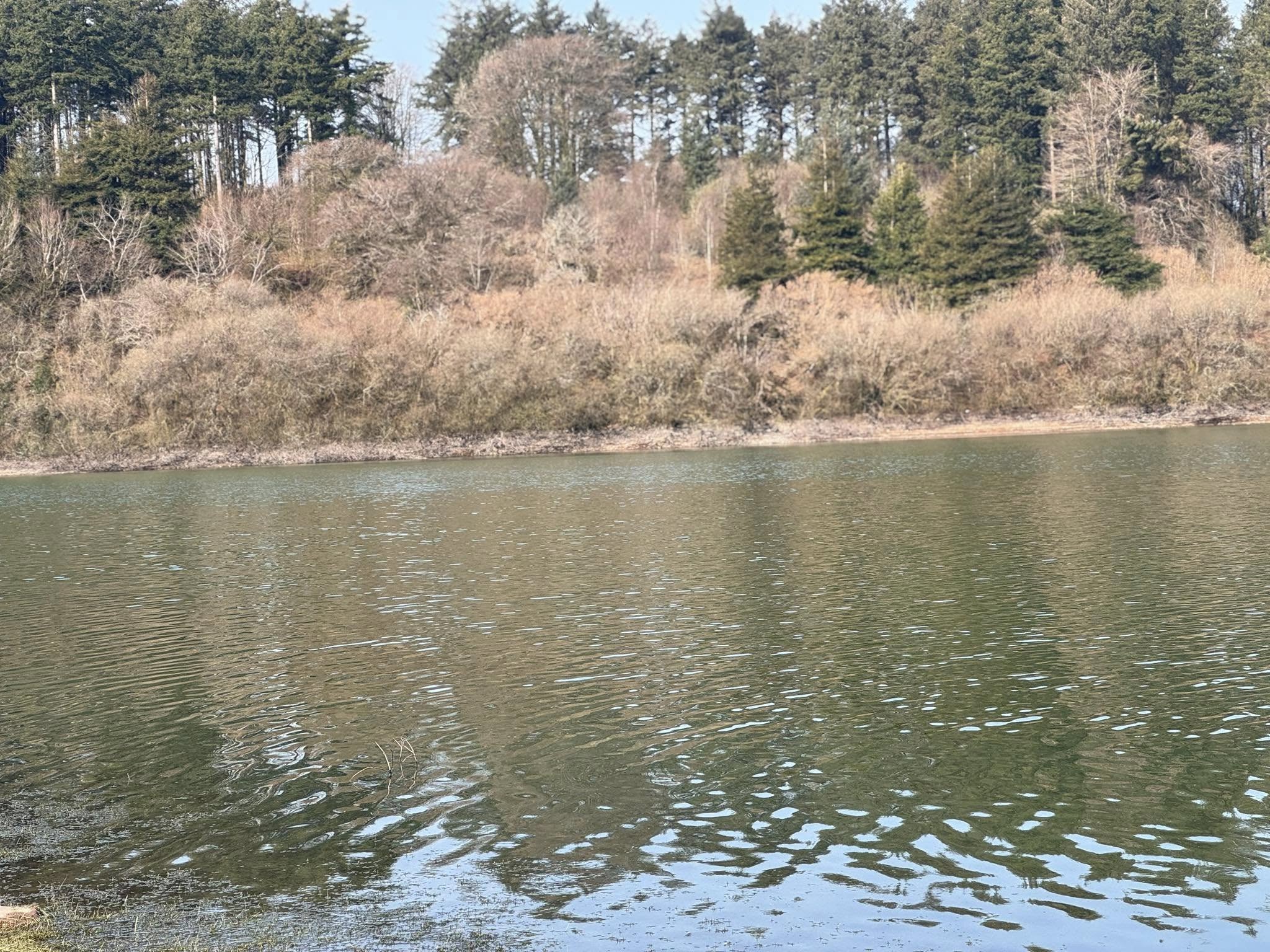
Full Report from Bulldog Fishery
Full Report from Bulldog Fishery
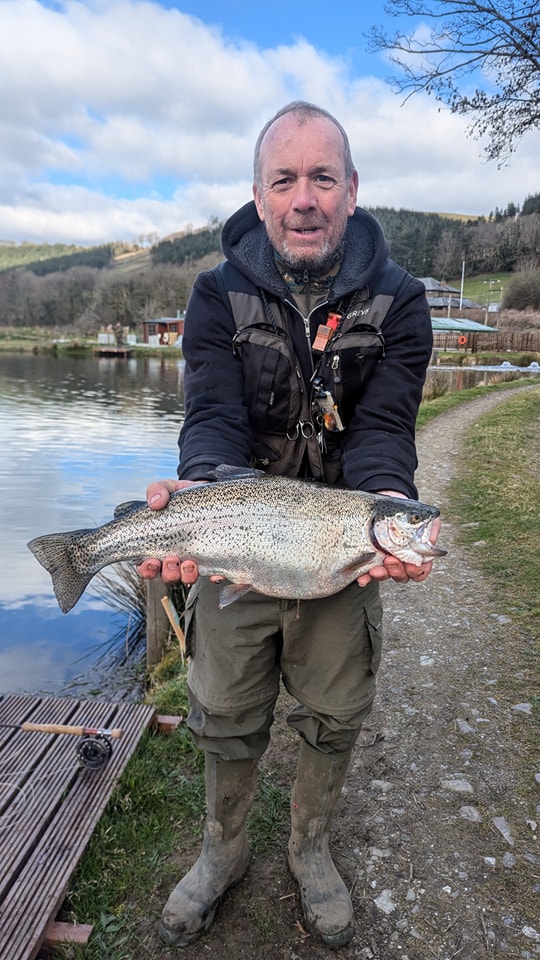
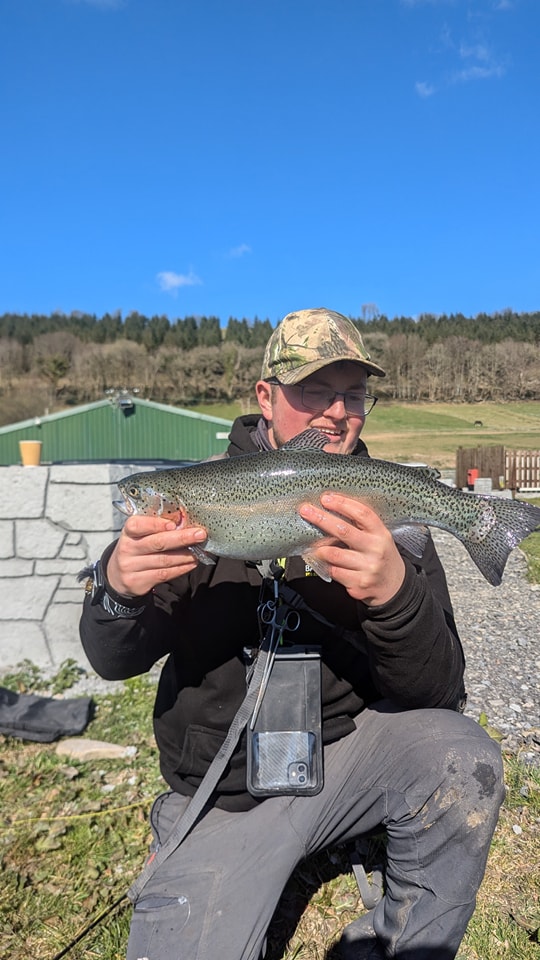





ARUNDELL – SPRING GRAYLING DAY
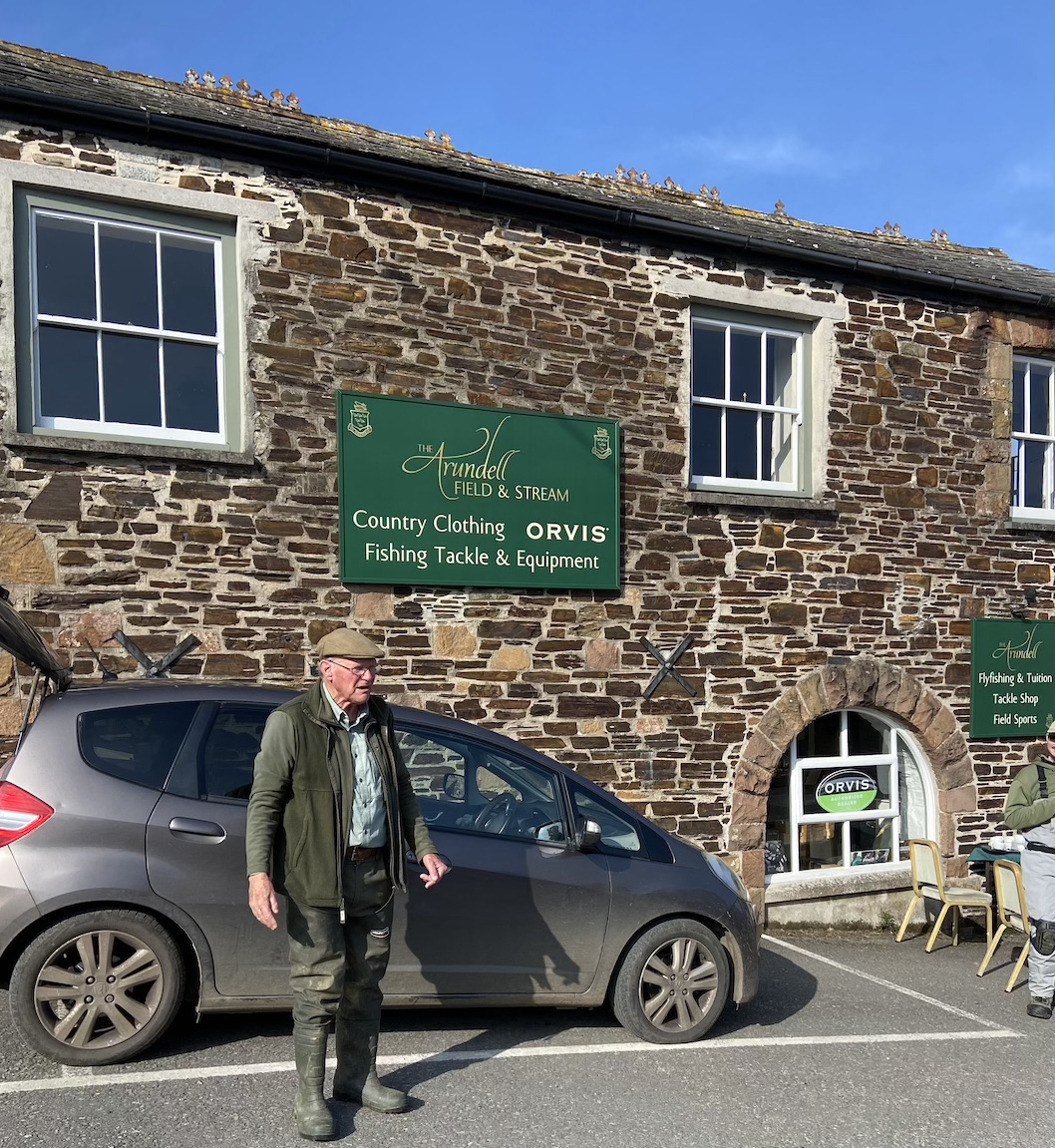
Meet in the tackle shop for complimentary tea, Coffees and a bacon roll followed by a day learning about fishing, fishing and then a film on the fish. All at one of the West Country’s most revered Country Hotels THE ARUNDELL located on the Devon Cornish Border. A great agenda for a day for sure, what’s not to like?.
Early March and grayling and nymph fishing tactics were top of the agenda. Though an early salmon from the River Torridge headed the early discussion as anglers from far and wide chatted over warm drinks. The tackle shop provided plenty of quality products for the fly angler and I took the opportunity to buy a few heavy nymphs as recommended by James Christoforou and Lewis Hendry. Our expert tutors for the morning session.
Spring sunshine soon cleared the early frost and mist from the rolling hills and valleys revealing a bright blue sky and roadsides brightened with yellow daffodils and primroses.
Close to twenty anglers were booked into the mornings tutorial on Euro Nymphing tactics and after a lengthy time of chatting and mingling we head for the river some of us enjoying a pleasant stroll the river situated half a mile from the hotel whilst others jumped into cars and Landrover’s.
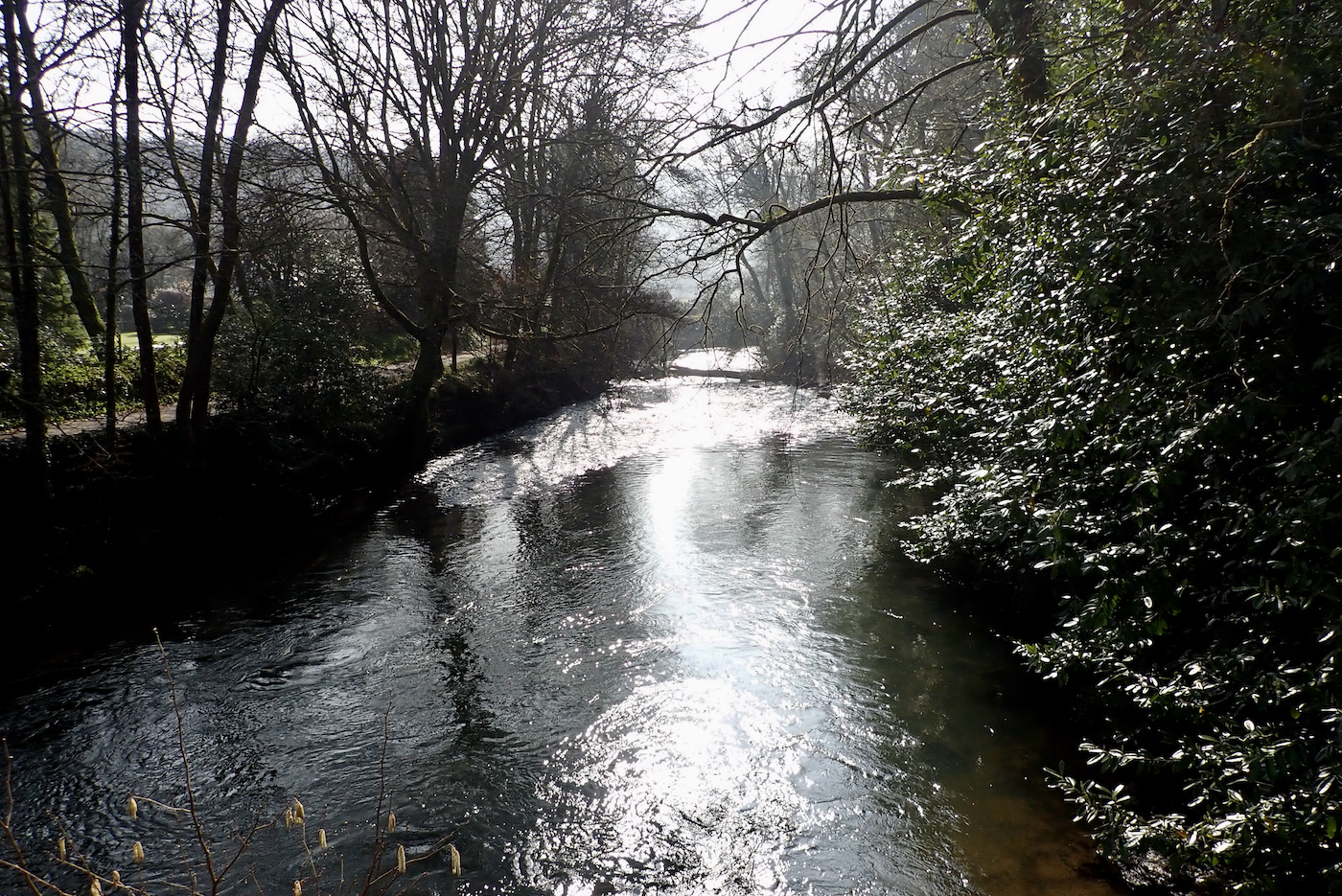
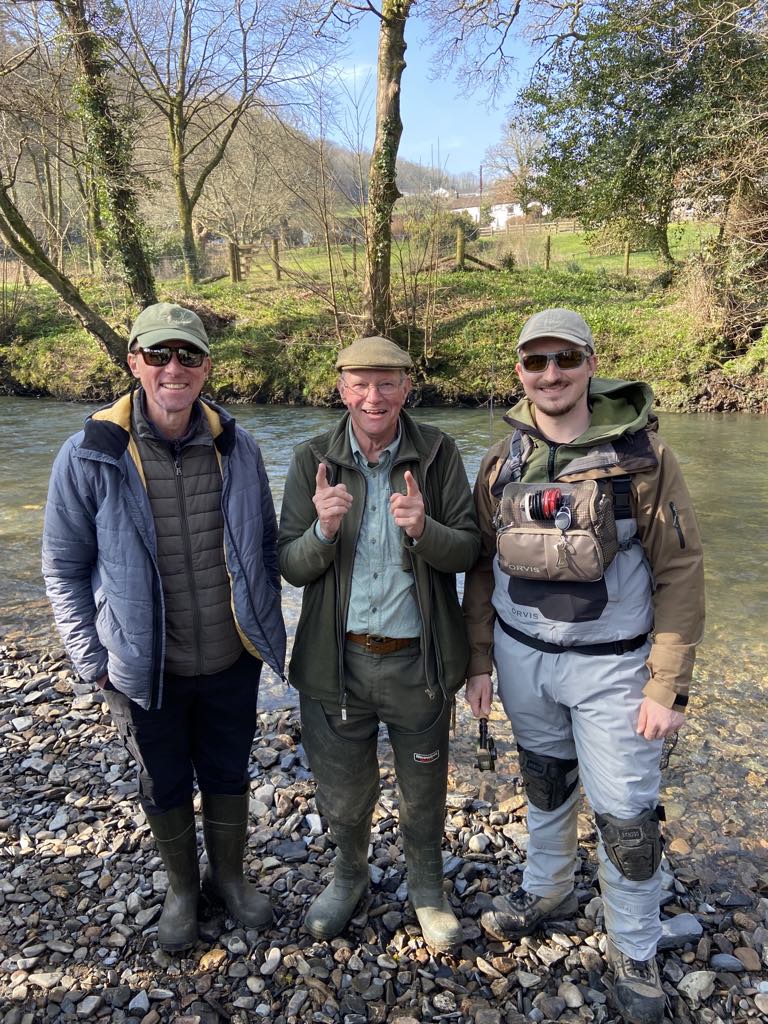
We all gathered beside the River Lyd that was looking in fine trim; its clear water glistening in the bright morning light. The Arundell team was headed by James Christoforou accompanied by fly fishing guru Lewis Hendrie and long-time Arundell stalwart and much respected David Pilkington.
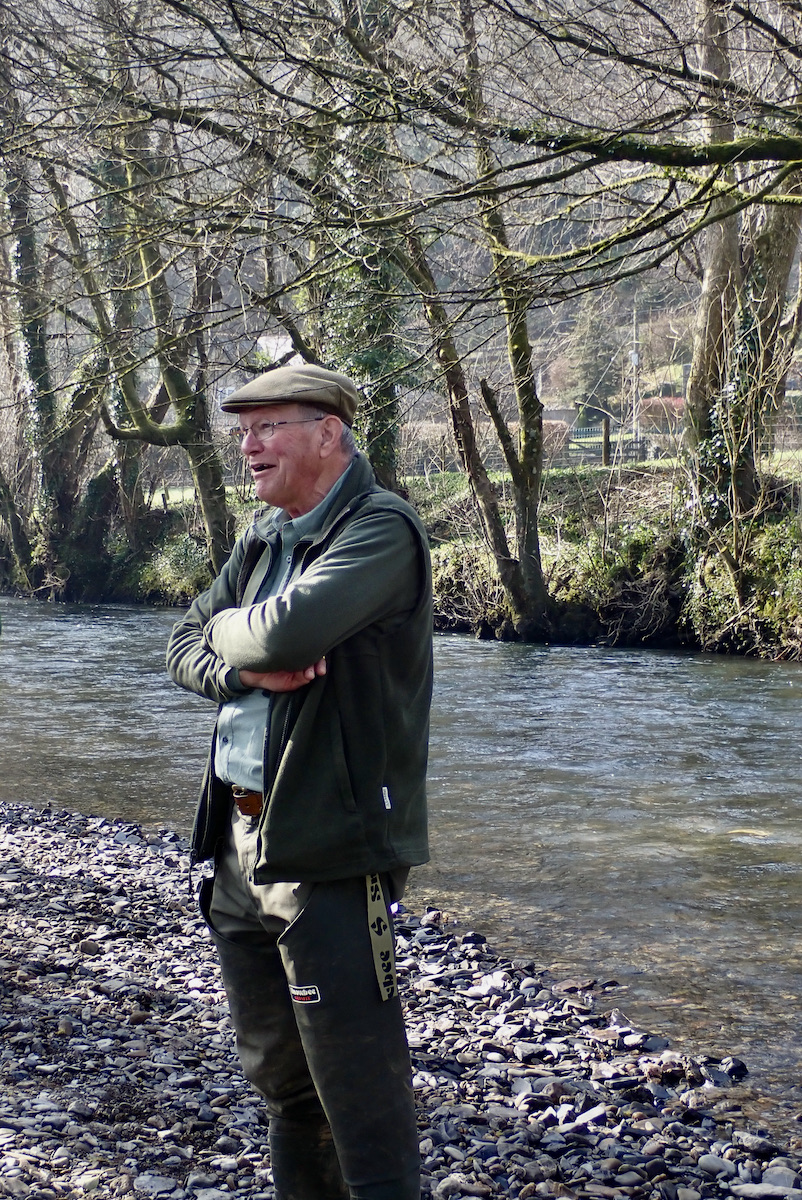
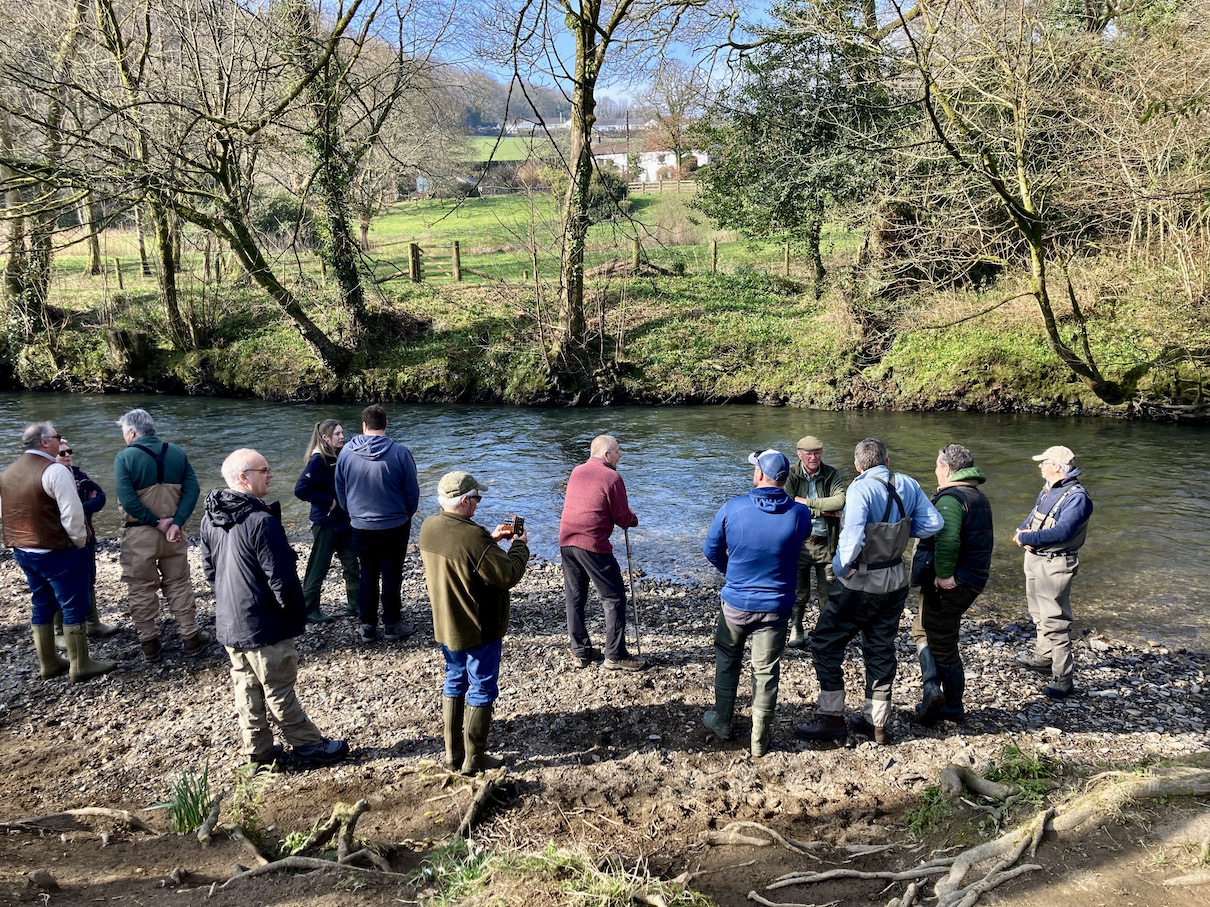
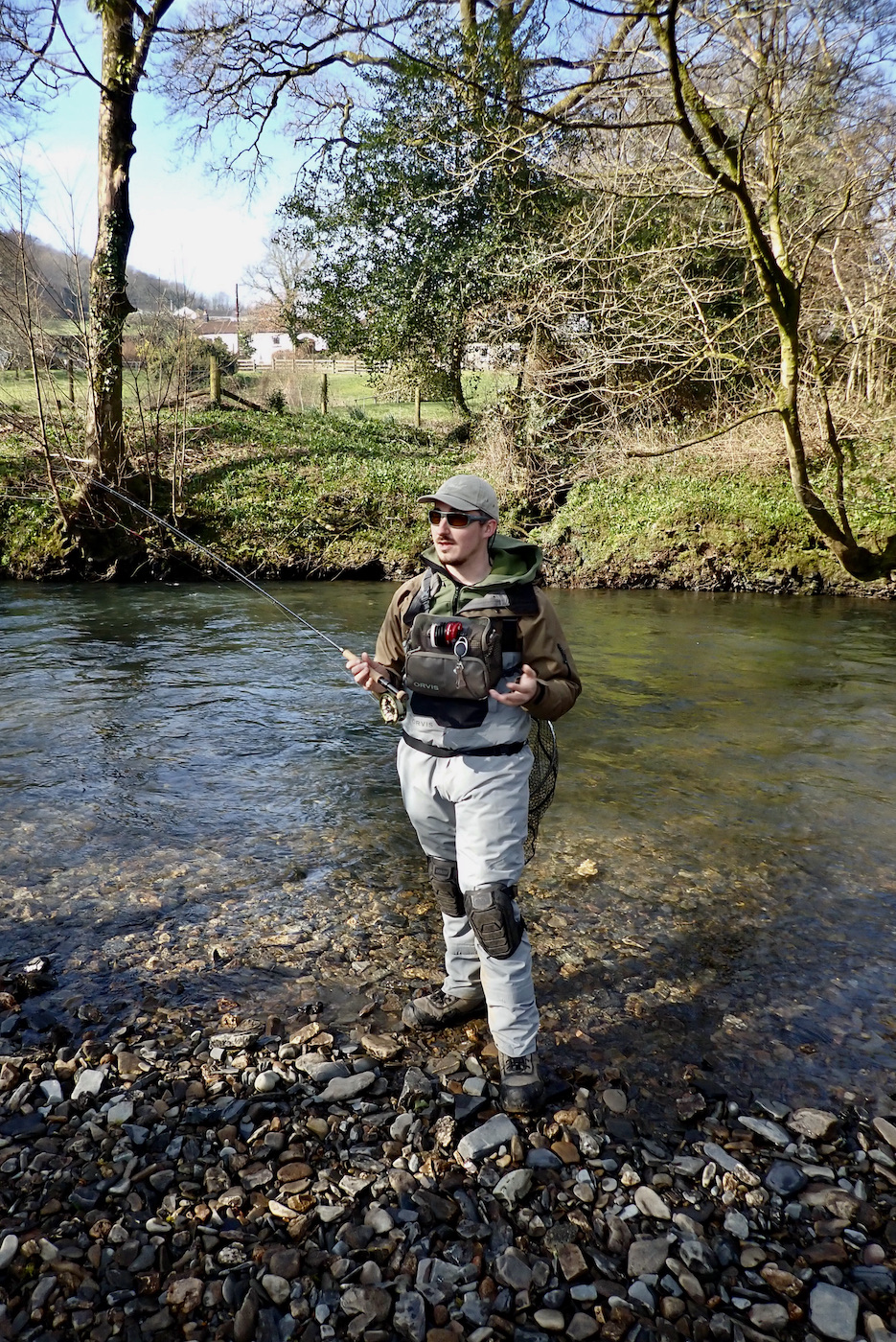
James waded out into the clear waters and started to explain the basics of modern Euro Nymphing. It was explained that Euro Nymphing is a phrase coined to describe a range of nymphing tactics created primarily by anglers from Poland, Czechoslovakia and France. The technique basically embraces the use of long light rods paired with a very light line and heavy nymphs that are propelled into the river using their weight instead of the line as is the case with traditional fly fishing.
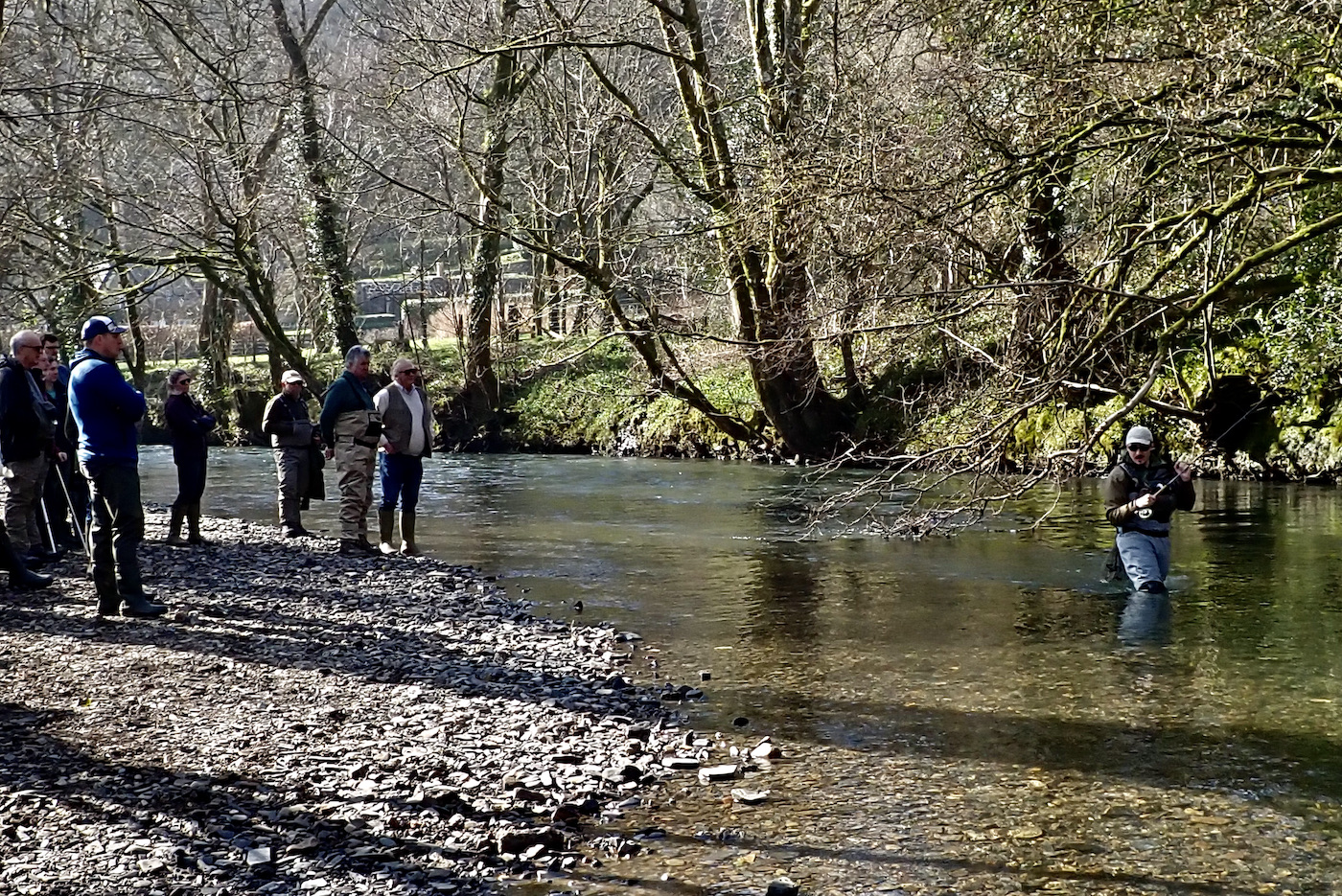
The approach to the river is vital if success is to be enjoyed the first objective being to get close to the fish without alerting them. Slow and low was the motto; a useful tip being to use knee protectors available from builders merchants to protect those knees and expensive waders from wear tear, brambles and barbed wire.
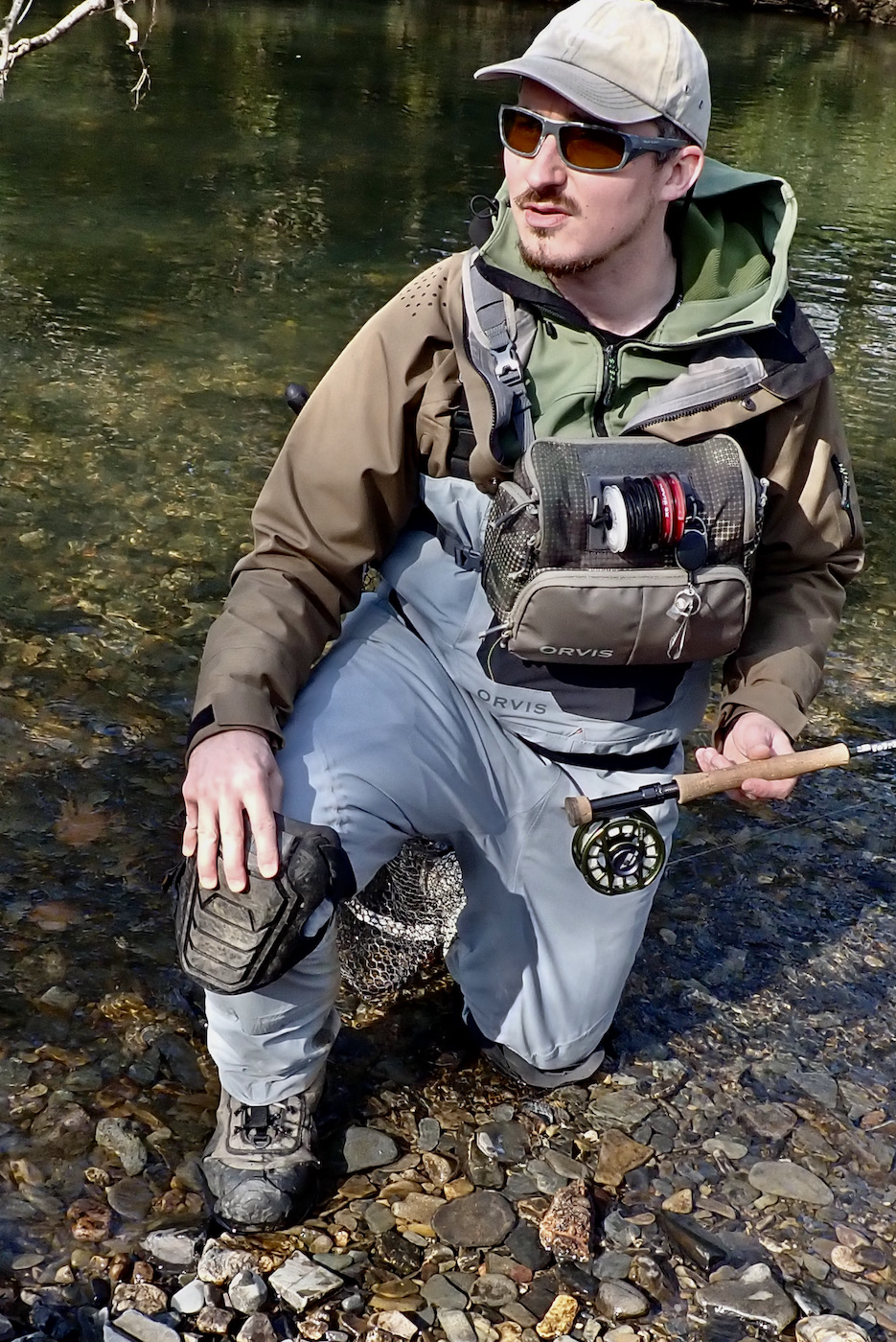
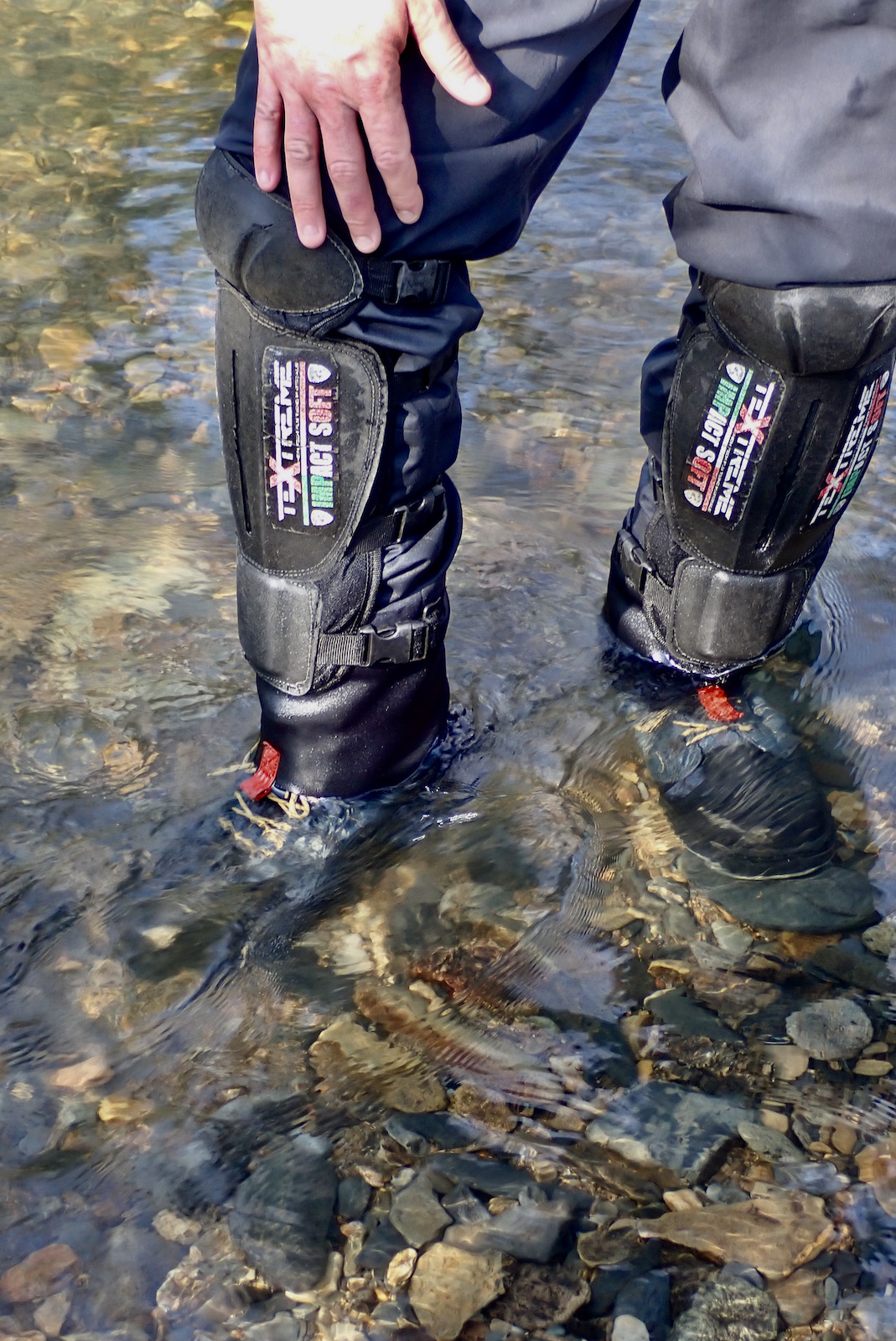
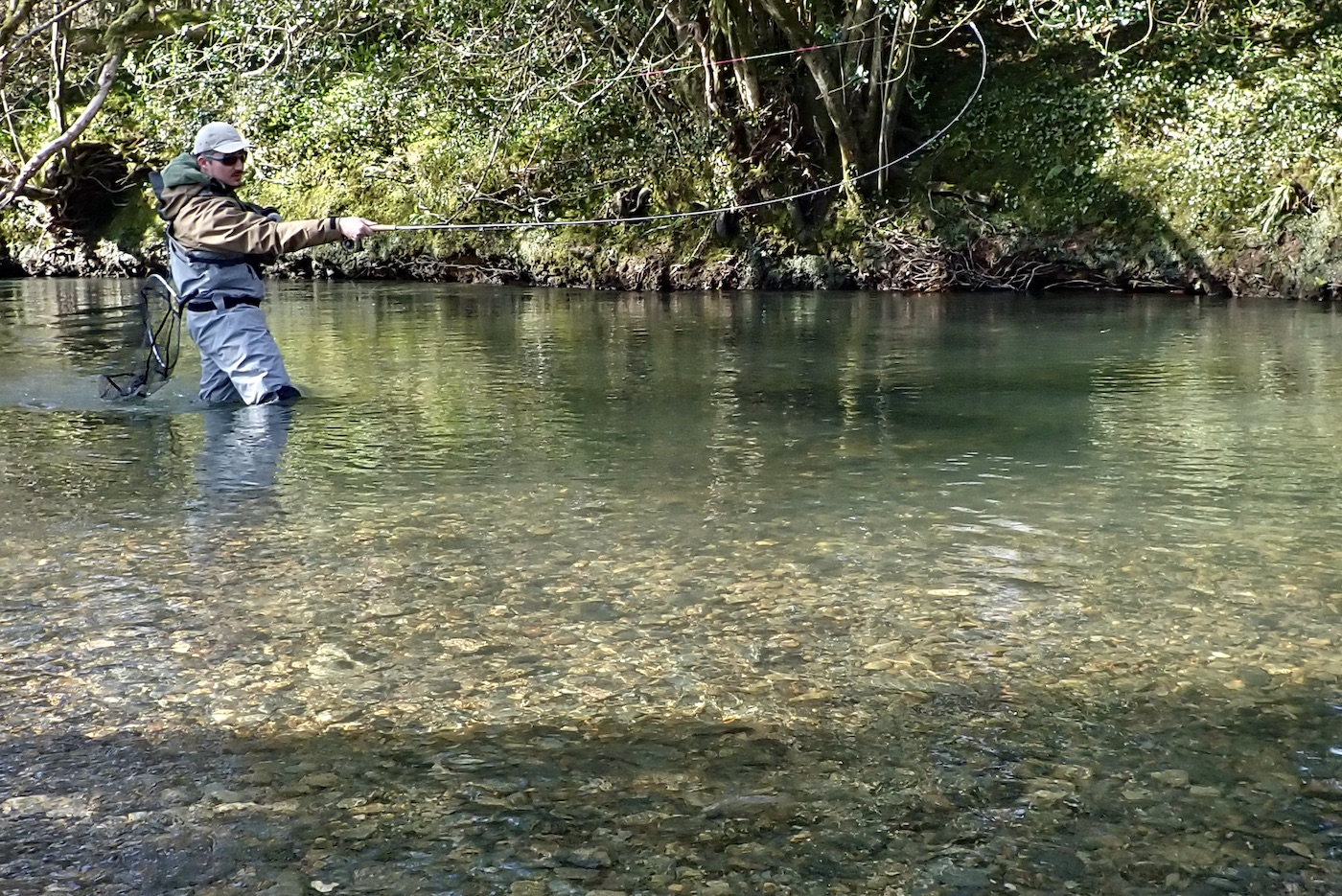
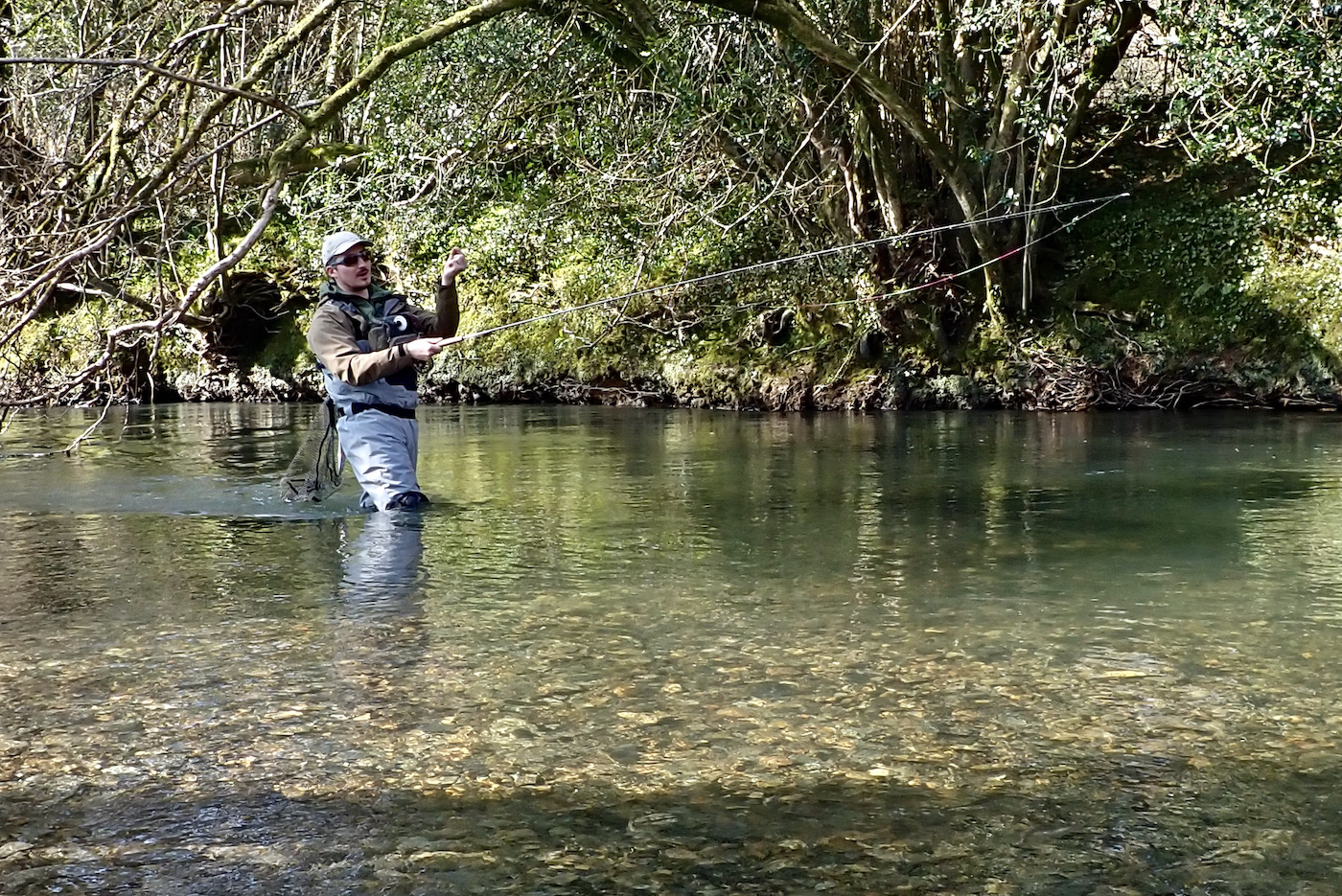
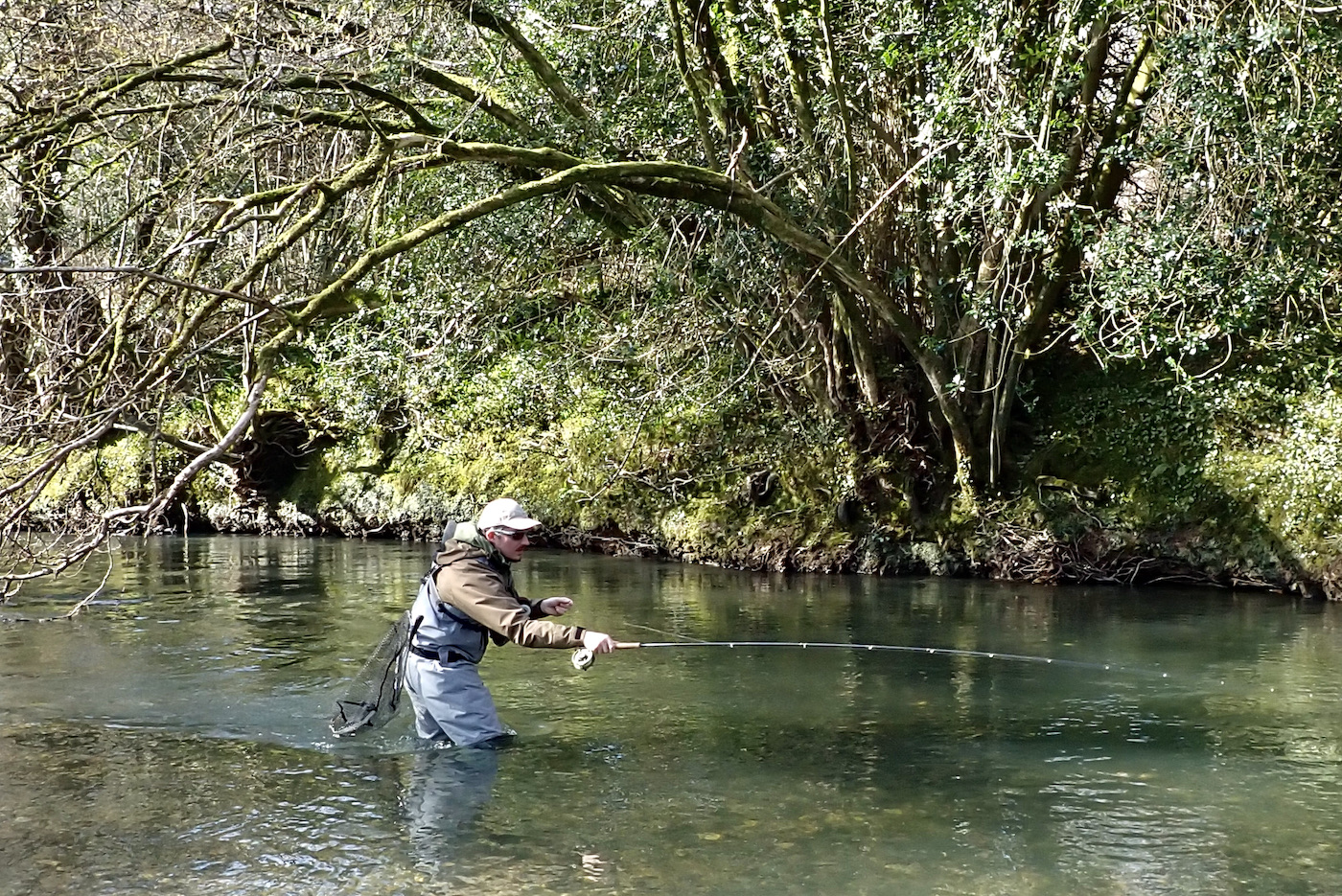
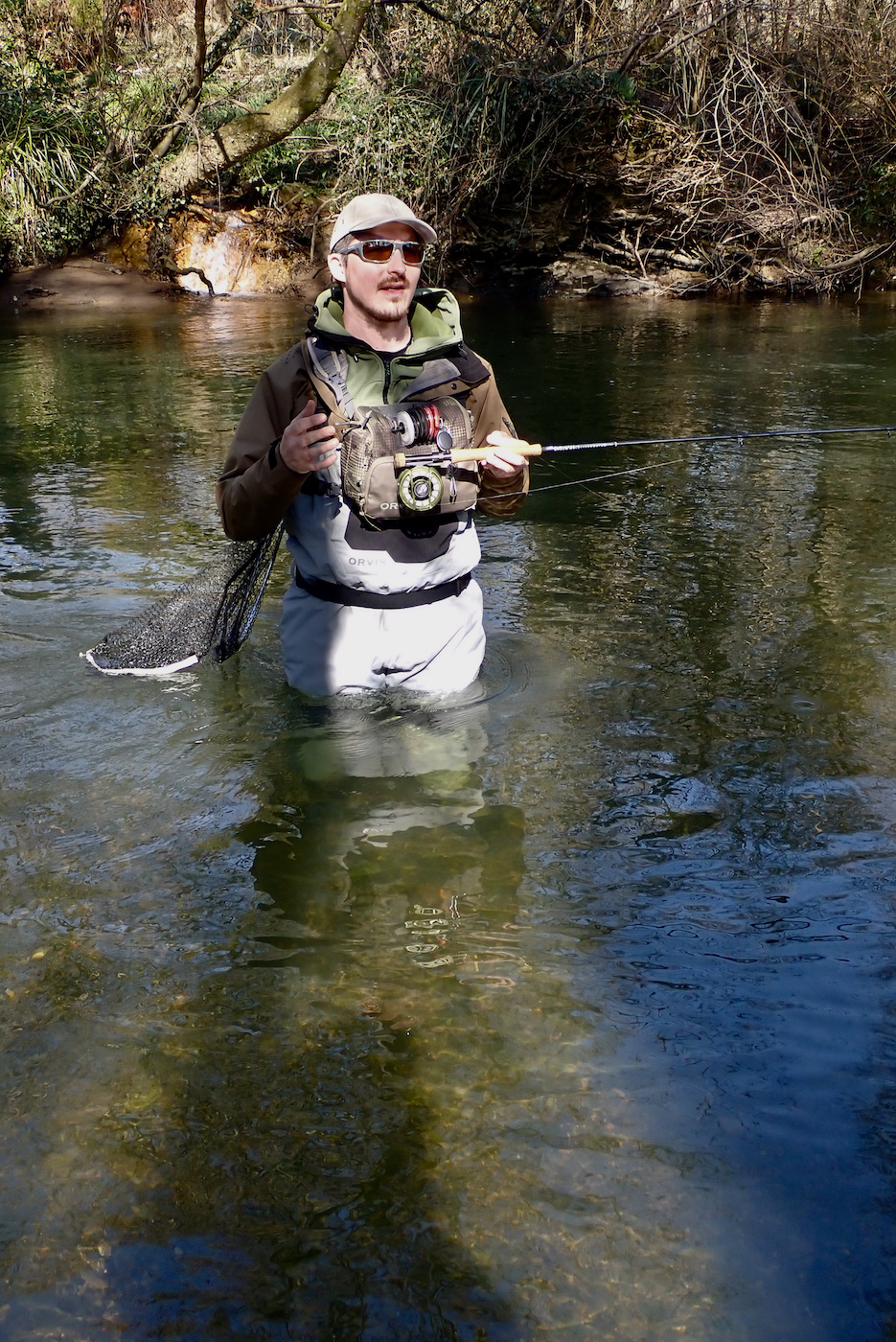
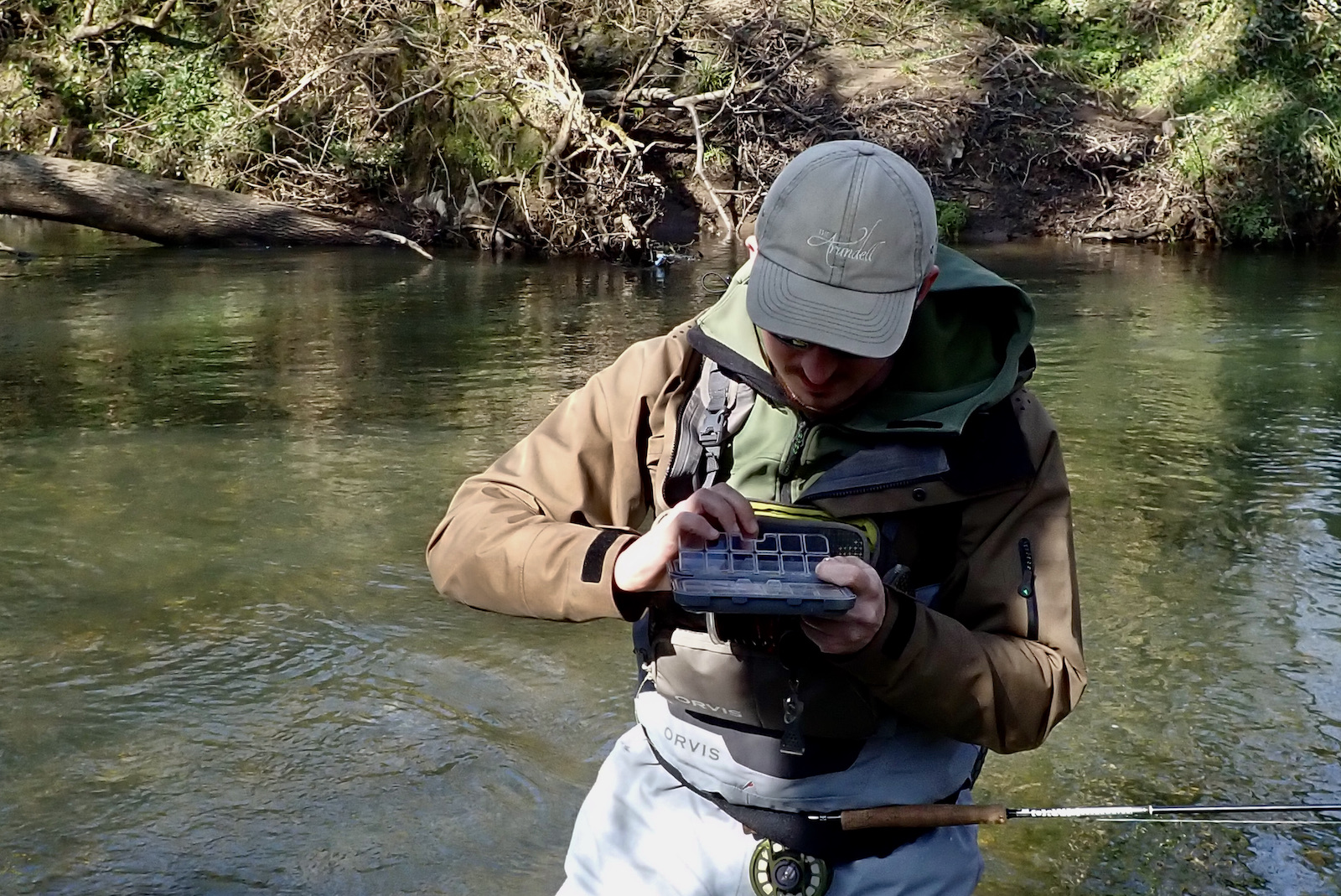
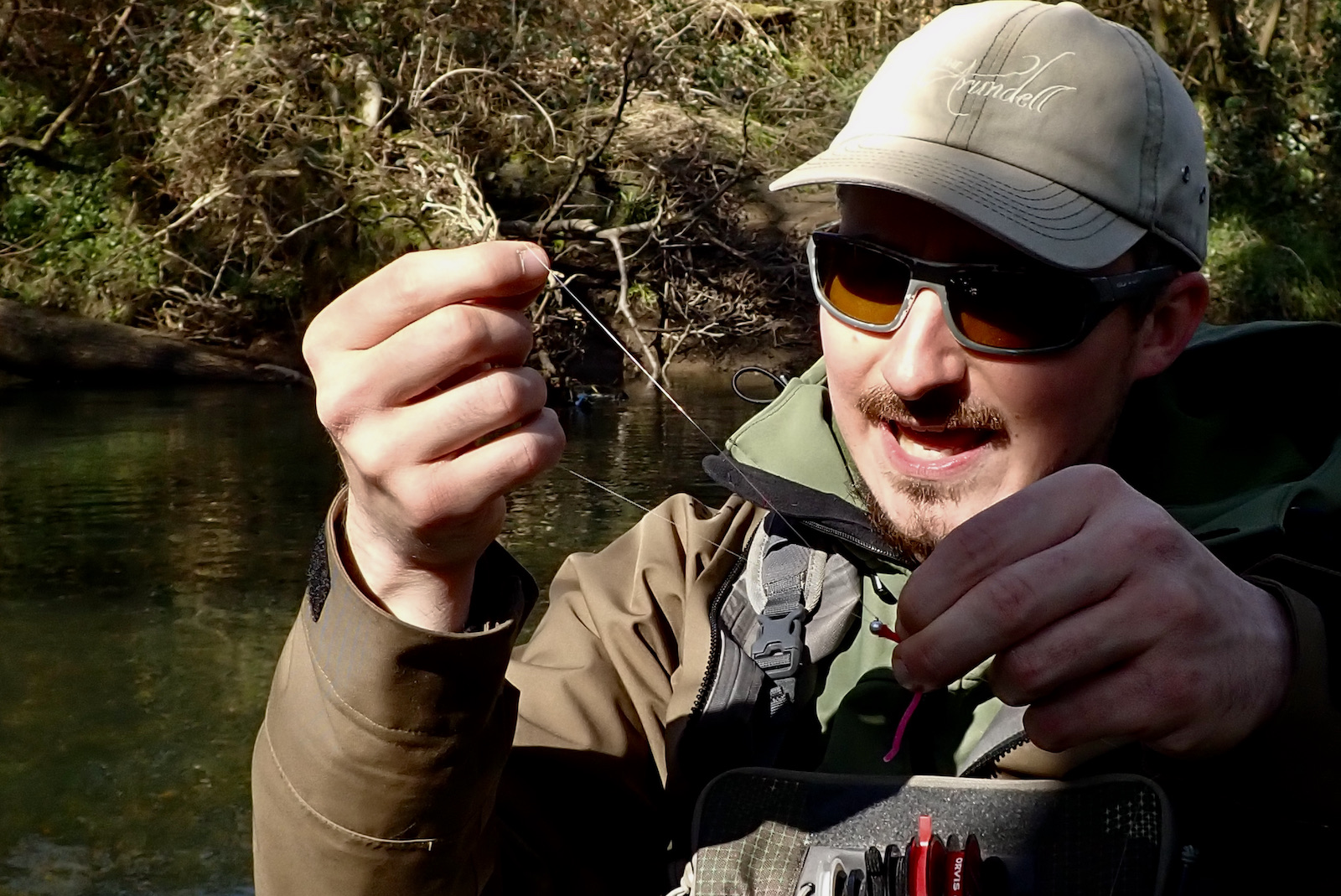
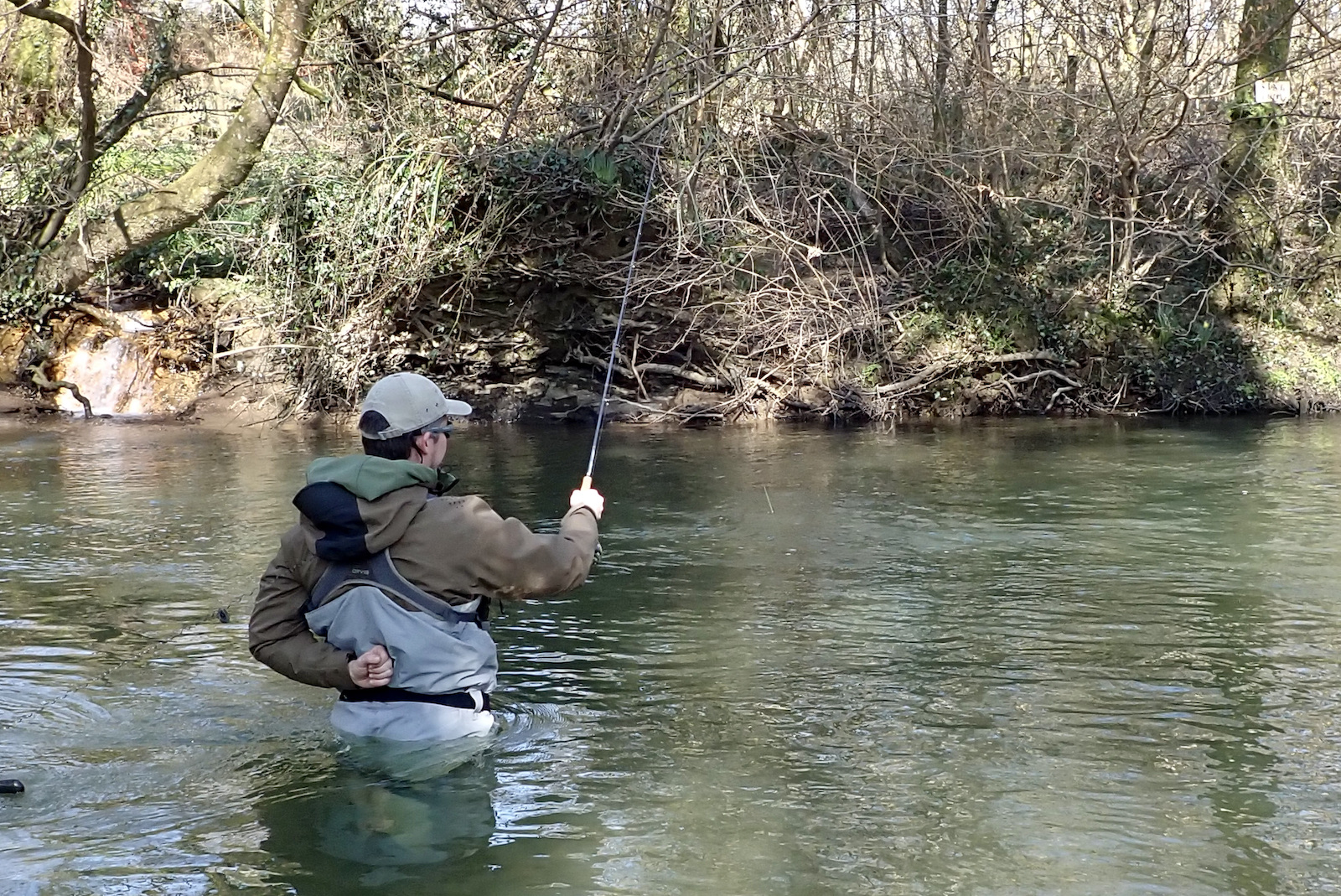
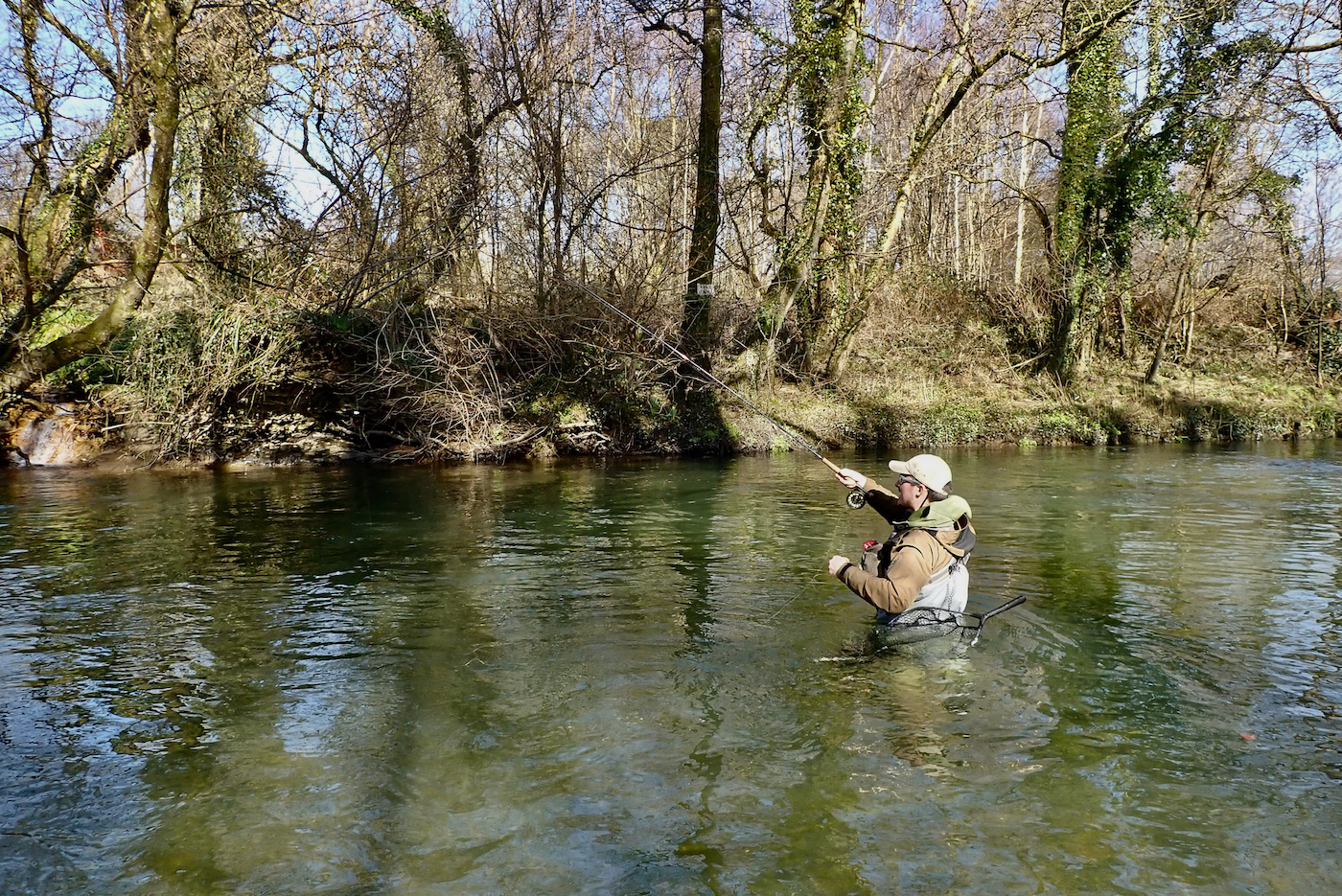
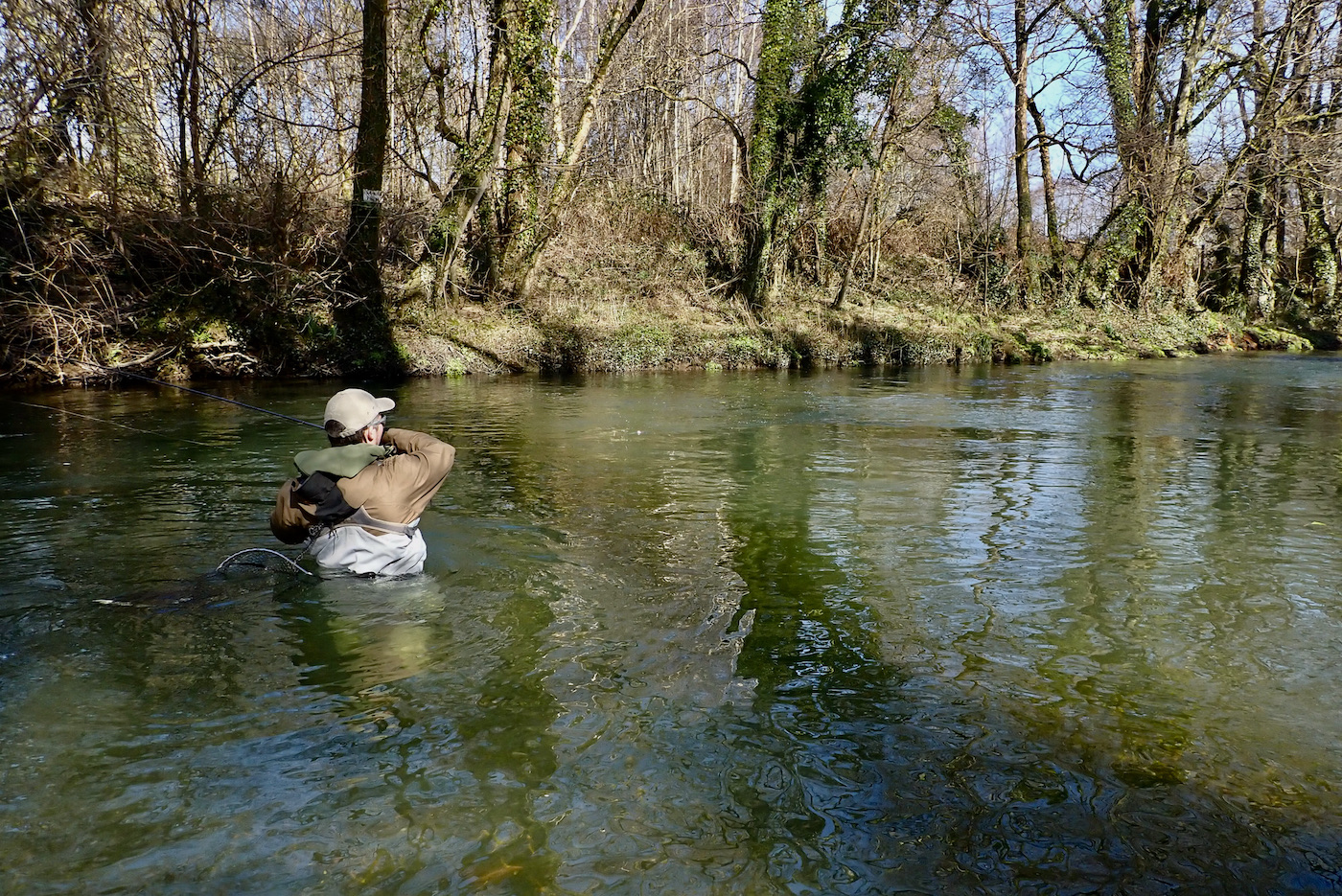
Lewis Hendry followed on bringing even more in depth advice on tactics frequently driving home points already made earlier by James in his own enthusiastic and unique style.
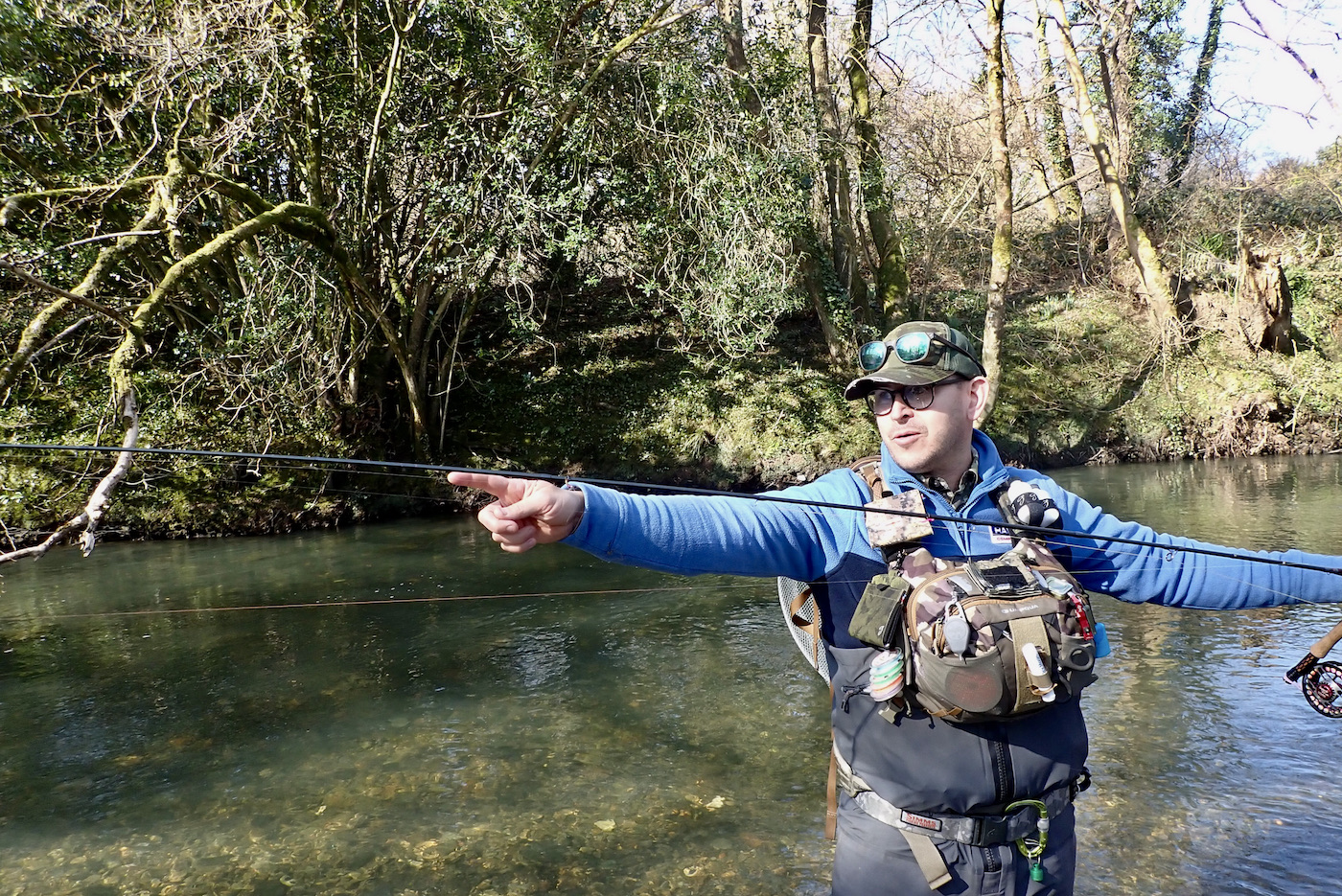
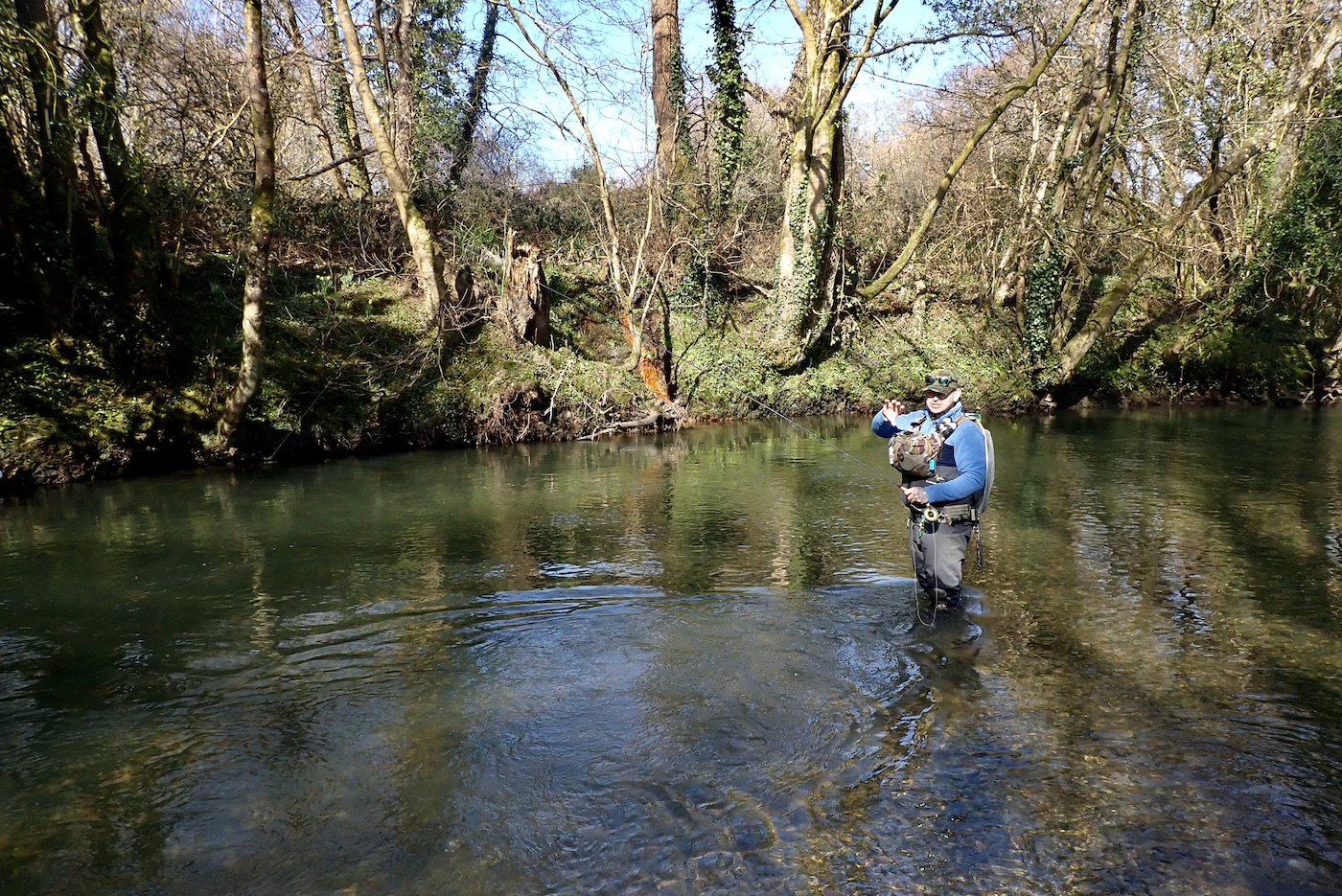
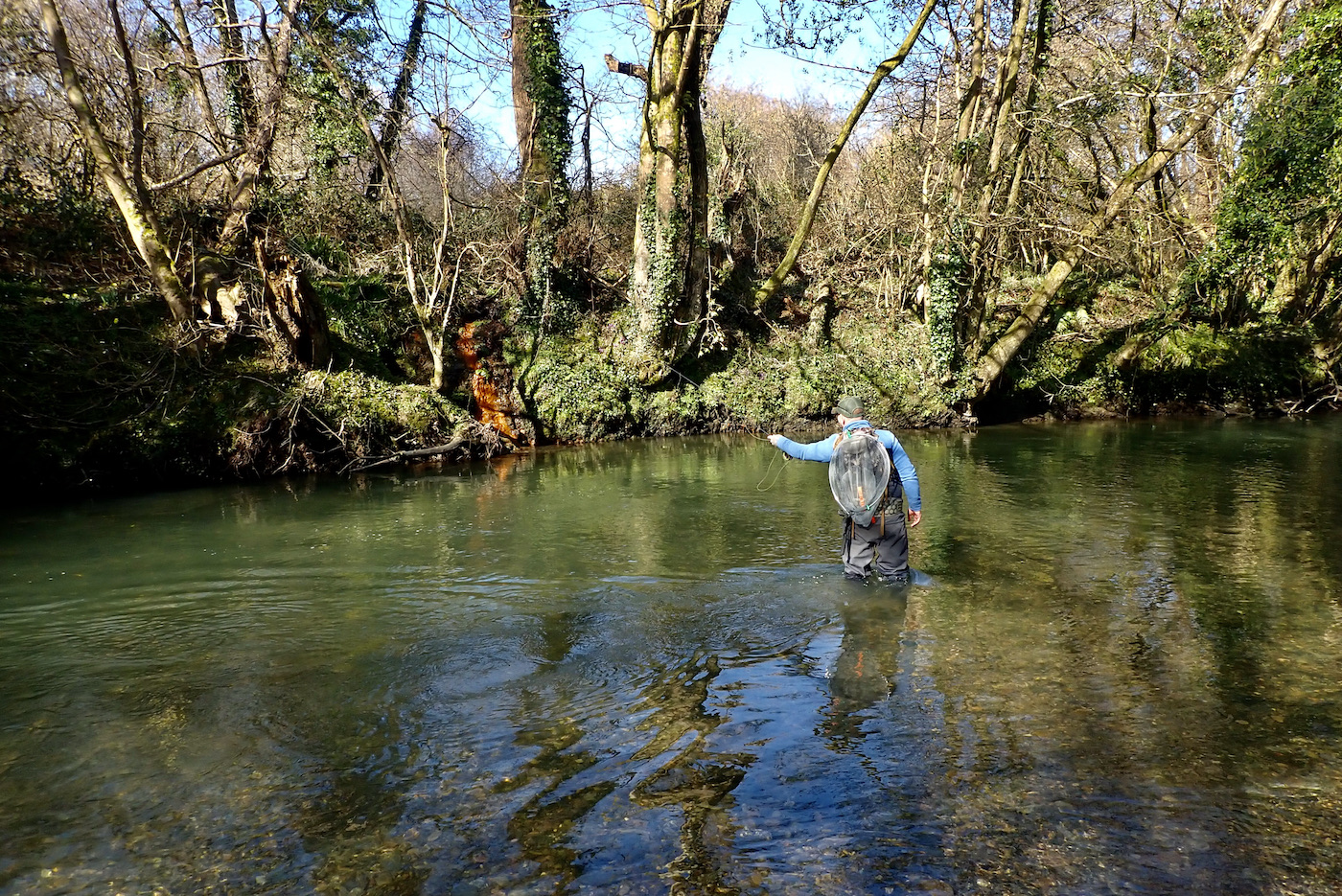
Take a note of where the light is shining from, read the water to guess where the fish lie and pause to look around for those fly hungry trees.
The intricacies of sight leaders, nymphs and how to present them were explained with passion, humour and clarity. The main thrust is that tradition is largely forgotten in this refreshing and enlightening approach to catching trout, grayling and even salmon and sea trout.
The key is to present the nymph to where the fish are lying, into the taking zone, offering an easy meal a tactic that can very often tempt a big wily fish lurking in the deep waters of the river when traditional dry or downstream wet fly tactics pass over the fish.
I personally found the whole tutorial enlightening picking up various tips as is always the case when hanging around with highly experienced anglers. It was also very reassuring to learn that my own tactics were pretty sound even if my delivery sometimes goes astray. Though we were assured that even they get hung up in the odd branch and that losing the occasional nymph to a snag on the riverbed is par for the course if you are searching for the feeding zone correctly.
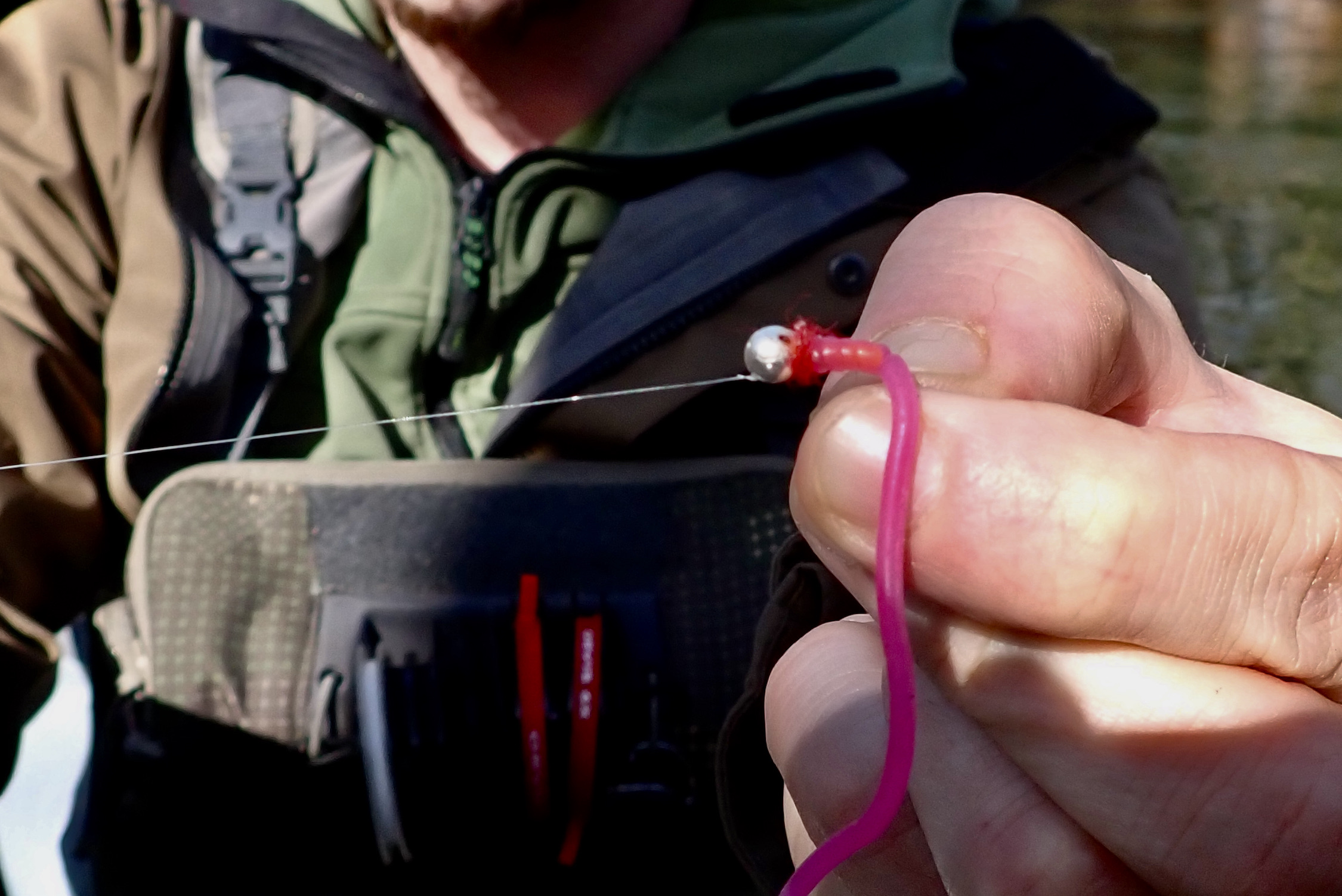
Wiggly worm nymphs jigged deep are far from traditional tactics and those from an older generation would undoubtedly frown upon these tactics that I felt had much in common with LRF fishing tactics. There are undoubtedly those who would say it’s not cricket but if we want young anglers to come into the sport perhaps we need to adapt and learn fun new tactics.

Lunch time and my friend Jeff Pearce and I headed back to the Arundell to enjoy a coffee and cake from the deli before heading off to beat 3 on the River Lyd for a couple of hours late afternoon fishing.
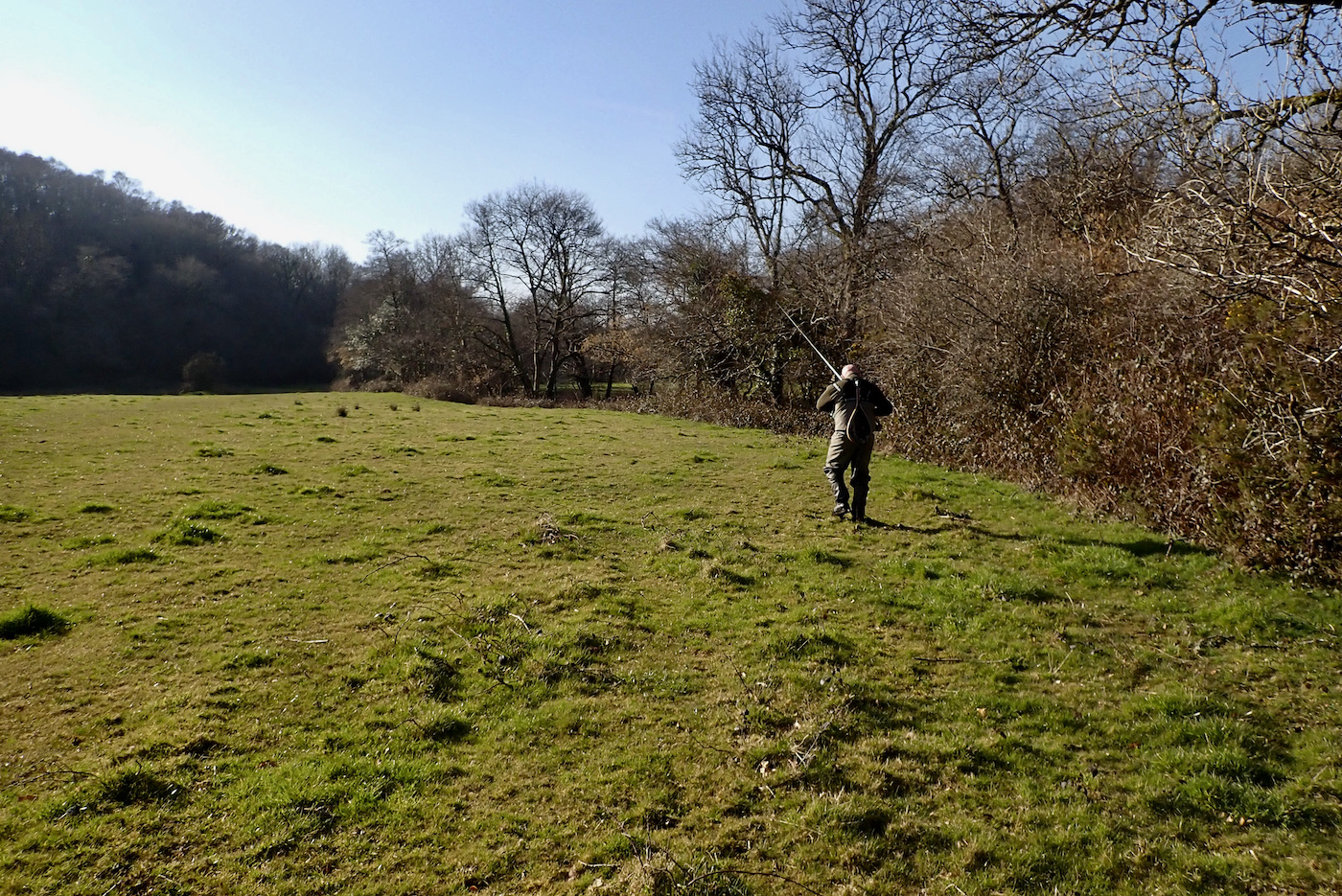
It was a joy to walk across the fields to explore the River and try to locate those hot spots where the grayling dwell. Inspired following the mornings tuition we sent our nymphs plopping into deep pools and promising runs.
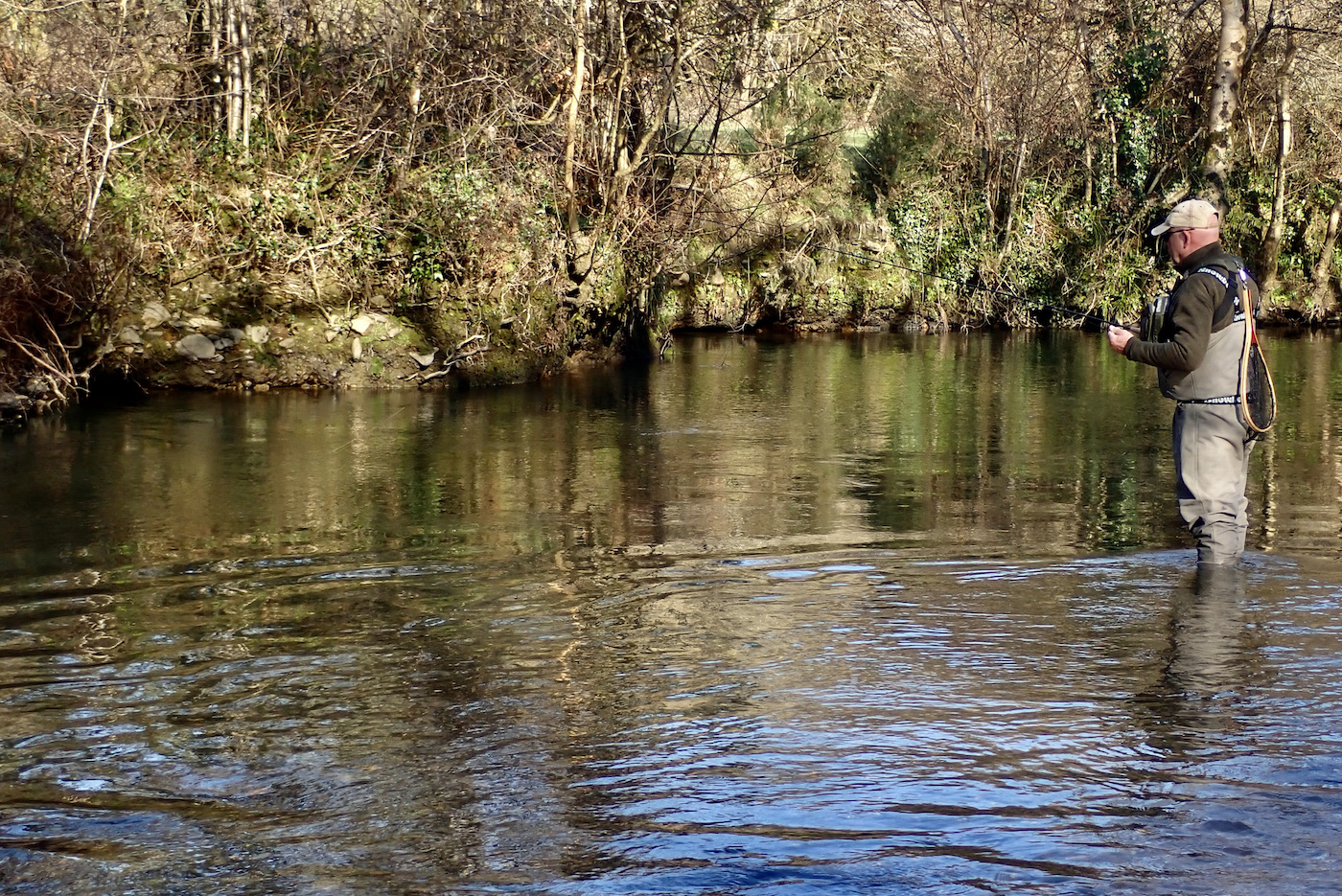
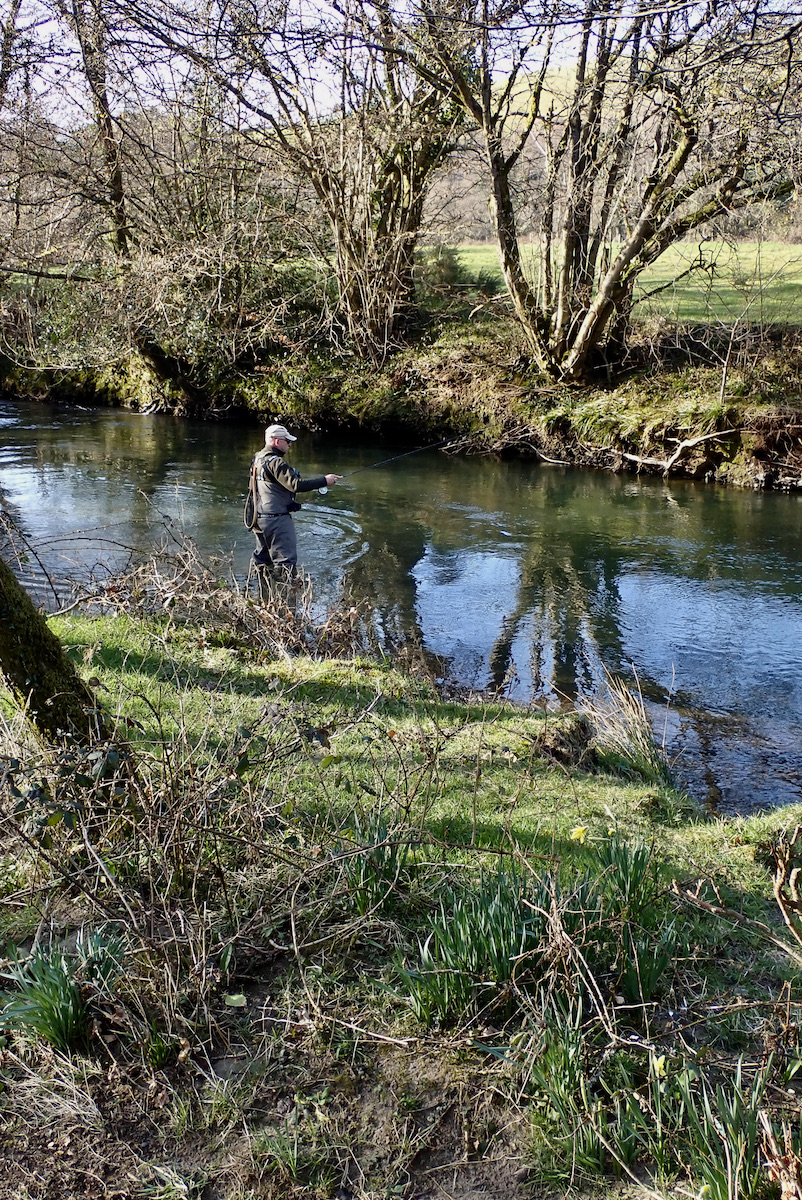
The afternoon sun illuminated the bankside trees, spring flowers and the bright clear sparkling waters are a perfect tonic to this increasingly troubled world.
I watched my bright orange leader, it stabbed down, I lifted the rod and a good sized grayling splashed and twisted in the strong current. Sadly it came off after a few seconds but at least I knew I was doing something right.
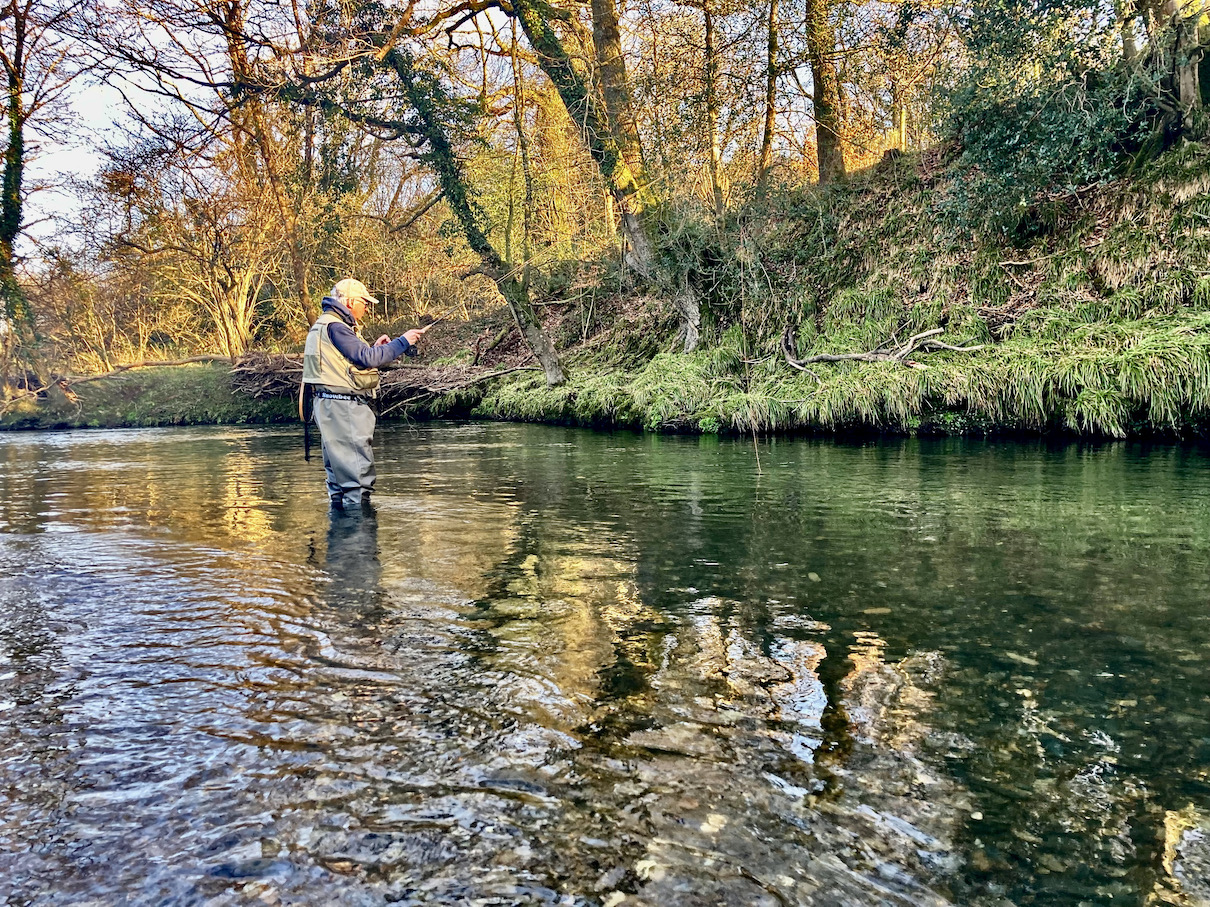
We left the river as the sun slowly sank and returned to enjoy a delicious meal in the bar before heading to the Tamar room to watch the film.
The angling world is undoubtedly a very connected community I observed as we chatted with fellow angling guests. Plotting future excursions and debating various aspects of this fascinating piscatorial world.
Close to forty assembled for the showing of Jack Perks acclaimed film Britain’s Hidden Fishes.
“Britain’s Hidden Fishes” is a not-for-profit documentary by Jack Perks, a renowned British Wildlife videographer. This captivating film explores the fascinating underwater world of the UK. From chalk streams to the open sea, the documentary shines a spotlight on some of the UK’s most overlooked and underrated wildlife, fish.
Narrated by Jeremy Wade ( Of River Monsters), Britain’s Hidden Fishes was filmed over two years to capture never-before- seen stories, behaviours, and footage of British fish.
The film is undoubtedly an outstanding insight into the precious and spectacular world of UK fish. It is hoped that the film will eventually be shown on mainstream television where it deserves to be aired to a far wider audience.

The talk was followed by an enlightening question and answer session with Jack Perks whose passion for fish and fishing was plain to see.
South West Lakes Trust Trout Fisheries Report

Rainbow Trout Waters Opening Weekend – March 2025
The new season is now firmly under way at the South West Lakes Trust Rainbow trout fisheries, opening on 1 March (with prior preview days for season ticket holders). Brown Trout fisheries are due to open on 15 March. Where available, boats are now on the water, and should be pre-booked (online or via the telephone). The weather was perfect for the start of the season, with blue skies, a gentle breeze and some warmth in the air. All of the lakes are now at full capacity.
Fishing:
Kennick – Rods averaged over 3.7 fish per angler during the opening sessions, with fish generally located off The Lawns, The Narrows, Clampitts Bay, East Wall and Bracken Point. The fish were well down in the water column, with sinking or sink-tip lines locating fish, with a slow figure-of-eight retrieve. A selection of lure patterns (Green Boobies, Goldhead Blobs, Cats Whiskers, Black Tadpoles) as well as some nymphs (Goldhead Montana, Damsel, Red Montana) and the occasional Buzzer all caught fish. Most fish averaged around 2lb, with Darren Penfold catching the best fish of the weekend, at 3lb.
Siblyback – The season opened on excellent form – anglers averaged 5.95 fish per rod, with fish mainly located along the North Bank, Two Meadows, West Bank and Stocky Bay. While some fish were caught on Montana and Damsel Nymphs, most were caught on a variety of lure patterns (Orange FAB, Kennick Killer, Snake, Black and Green Fritz, Orange Blob and Humungous) fished on Intermediate or Sink-tip lines (at between three and four metres depth) with a slow retrieve. Ethan Price caught the largest fish, at 3lb.
Burrator – Here the season opened with a flying start, with anglers averaging 4.6 fish per rod, mainly from Longstone, Pig’s Trough, Lowery Point, Back Bay and Bennetts. Intermediate or floating lines with a long leader (at about one metre depth) with a fast retrieve proved to be the most successful method, with fish taking Nomads, Blue Flash Damsels, Red Diawl Bachs, Cormorants and Orange Fritz lures. Most fish averaged around 2lb, with Ian Foxley catching the best fish, at 56cm, or 3lb 14oz.
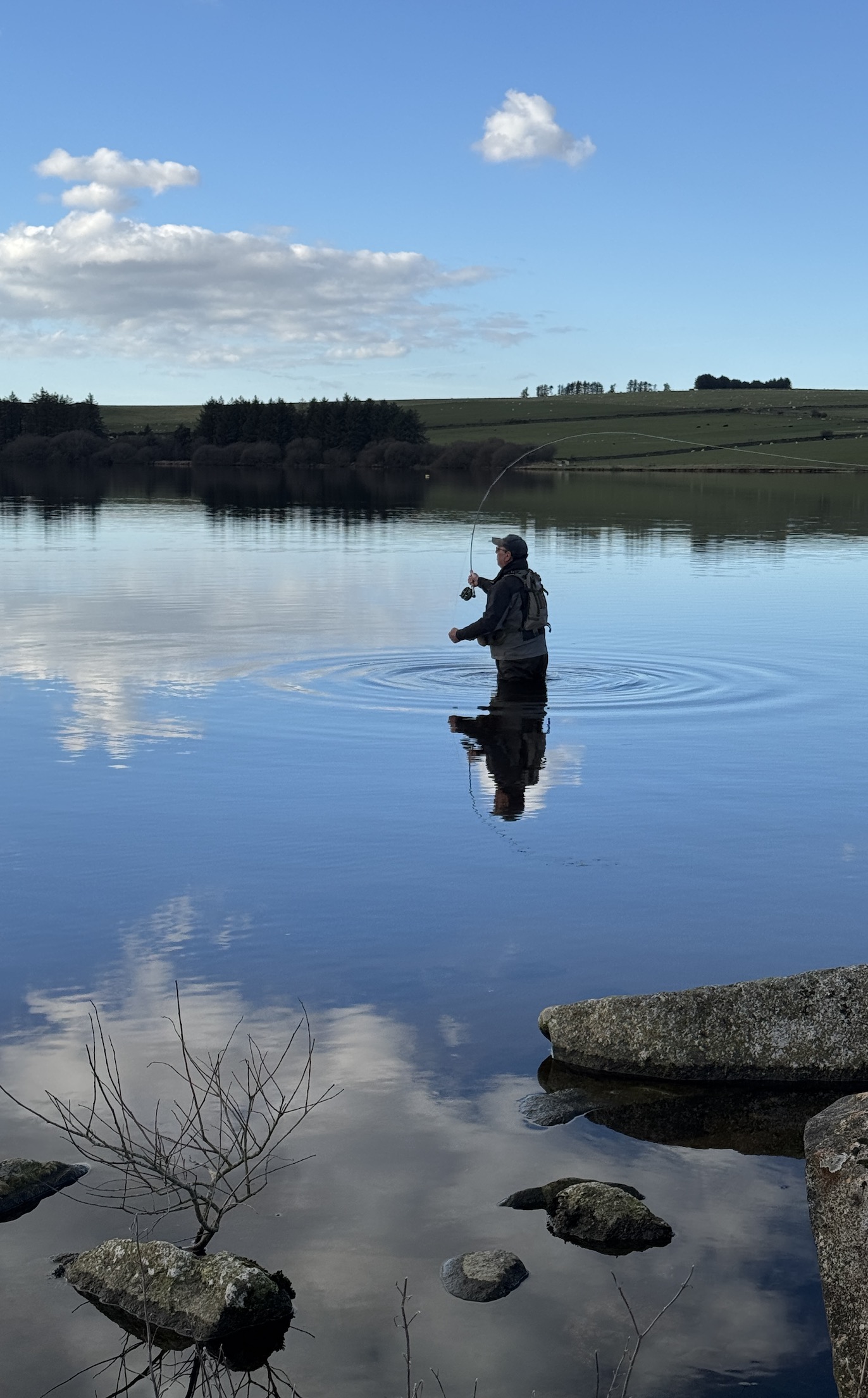
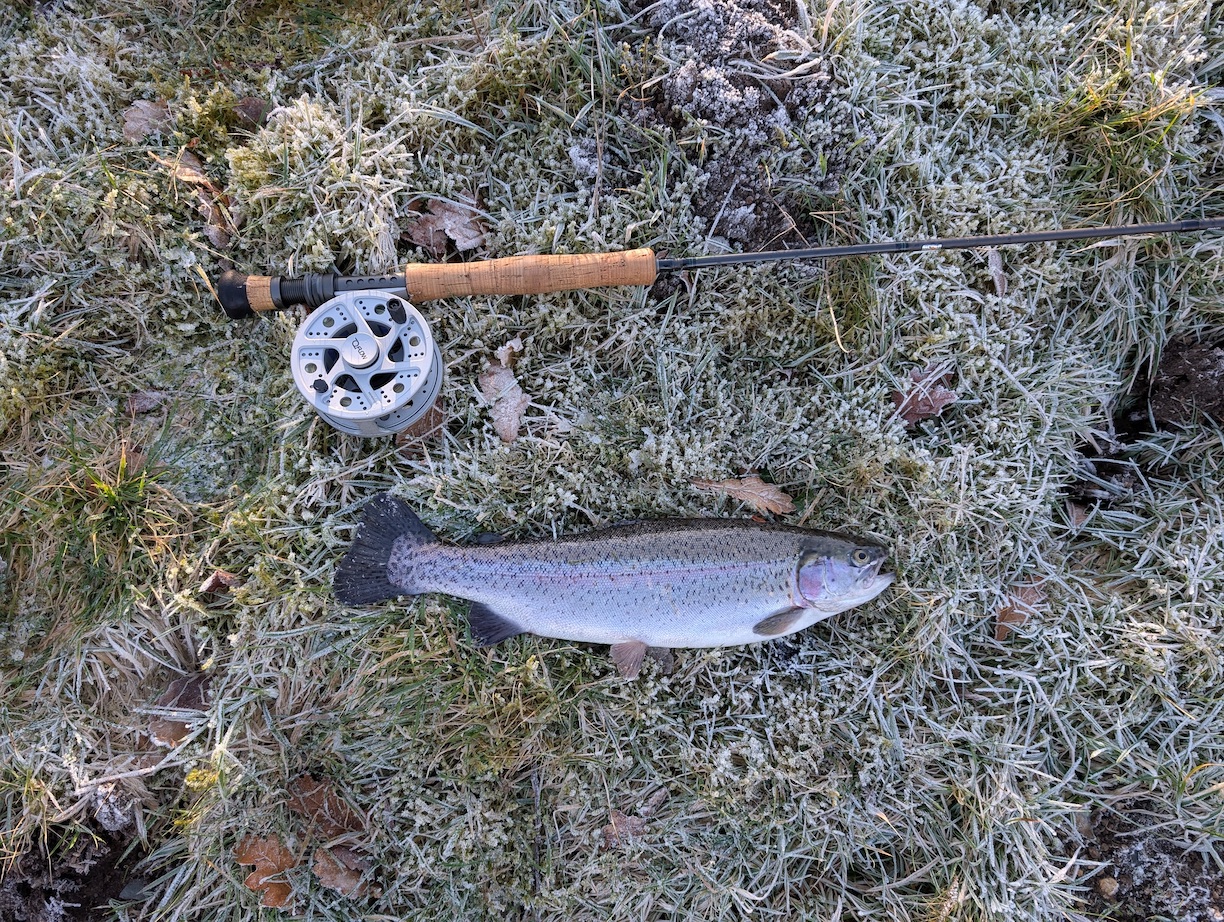

Stithians – Here the fishing was slower, with anglers averaging 1.1 fish per rod over the opening weekend. Fish were well spread out around the fishery, notably at Yellowort, Goonlaze, Ray’s Beach, Hollis and the deeper water by the dam. Most feeding fish were around two metres down, and were mainly caught on Intermediate or Sink-tip lines, with a slow retrieve. Successful flies included Black and Peacock Spiders, Hares Ears, Montanas and Damsel nymphs, as well as Orange Blobs, Cormorants and Tequila FABs. Simon Peters managed a couple of fish at 1lb 8oz casting into the wind off Deep Bank.
Another successful Fly Fair was held at Roadford Lake on 23 February, with fly-tying demonstrations, casting lessons, and trout cookery demonstrations. Charles Jardine opened the event, which also included a variety of tackle and fly-tying suppliers, as well as the chance to meet local clubs and talk fishing with old friends, and some bargains to be had on the Kennick Club used-tackle stand.
Please see the Trust’s website (www.swlakestrust.org.uk/trout-fishing) for more information on buying tickets, boat availability and booking, and forthcoming events.
Chris Hall (March 2025)
DULVERTON AGM and Fishing Talk
Dulverton Anglers Association AGM was held on Friday, February 21st in the Anchor Inn at Exebridge. I have been a member of the club for a couple of years and have enjoyed a few pleasurable days exploring their extensive waters on the Upper Exe and its tributaries.
The club is a long established one and its committee undoubtedly hard working and committed to providing good fishing, protecting the environment and nurturing a friendly network of anglers. The AGM was conducted in a calm professional manner with those friendly moments of warm banter that make all feel welcome and relaxed.
It is fair to say looking around the room that the majority of members fit the expected dynamic of a fly fisher pursuing the gentle art. Most with a few exceptions are of an older generation with greying or thinning hair with the occasional ache and pain. There is however no lack of passion for the river environment its fish and the desire to cast a line. I state this ageing dynamic as there is often a debate around the future with a lack of younger generation anglers. More on that later.
Catch returns show that brown trout and grayling fishing remains good with no significant concerns. The acquisition of Old Woman’s Beat is a significant milestone for the club and its first season saw many members fishing this historic beat. Over 250 brown trout were registered, close to 90 grayling and one sea trout. It is sad that no salmon were caught as this was once regarded as one of the prime salmon beats on the Upper Exe. Sea trout have never been a significant catch on the Exe system which is strange as the river shares many characteristics of other West Country Rivers that still boast good sea trout runs.

One member present was Nicholas Fitton who has recently had his second book published, ‘Gently Down the Stream’. The Forgotten Art of Downstream Wet-Fly Fishing. ( his first book was ‘In Search of Wild Trout , Published in 1992) I asked Nicholas if he would kindly sign my recently purchased copy of the book and he duly obliged. His opening question to me was; Are you a downstream or upstream man? I replied that I cast to the fish where they lie be that upstream or down. In many of our wild rivers with overhanging tree’s there is surely no room for dogma and outdated tradition.
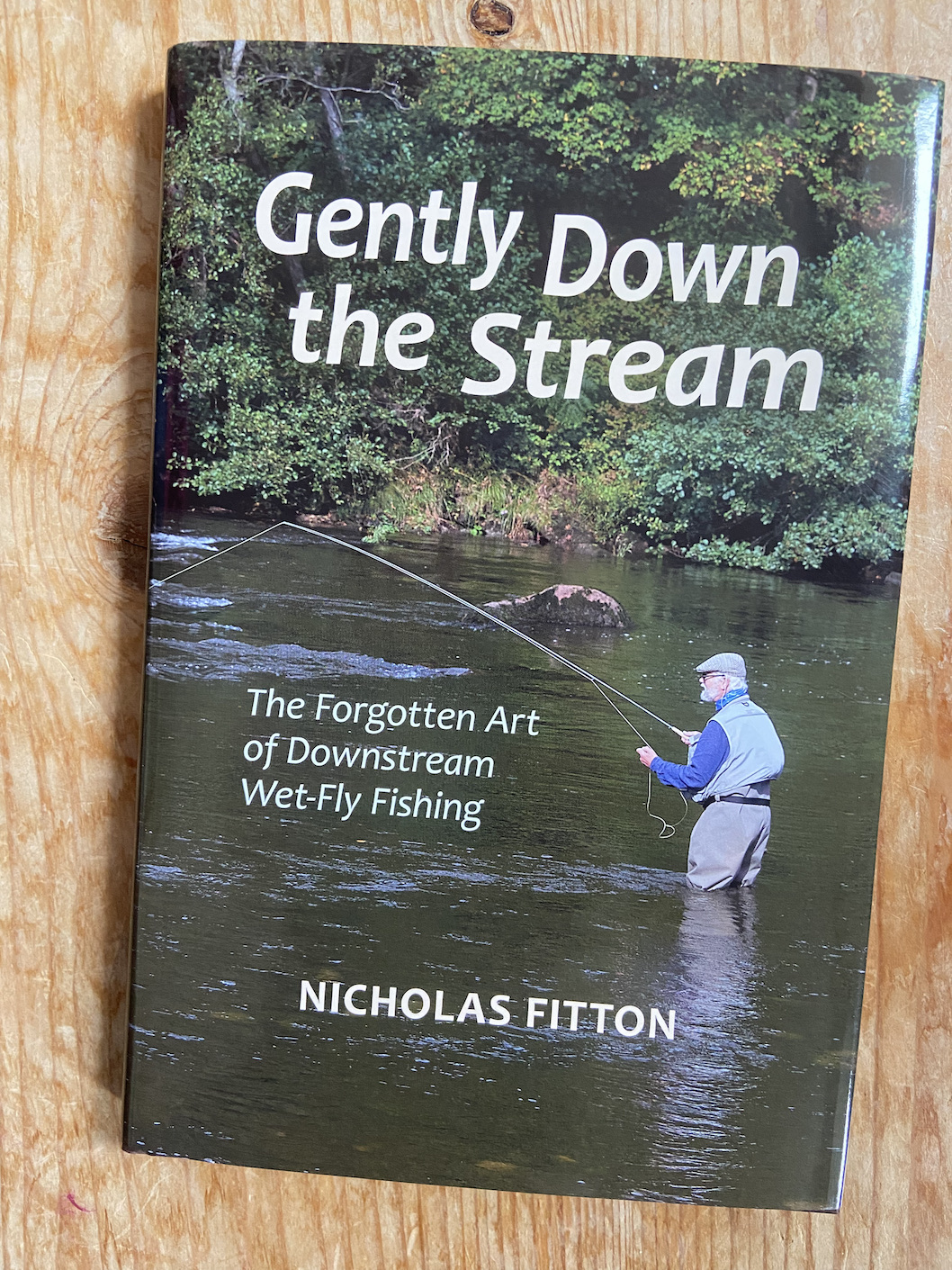
In so called liberated days it is perhaps strange that many still hold onto traditions of the past. It is perhaps a contradiction in stating this that I admit to a great fondness for angling literature from the early days of the last century and savour the words of some of the sports greatest writers. H T Sheringham, George A B Dewar, Sir Edward Grey, E. A. Barton, G.E.M Skues and of course F.M. Halford. These great writers hale from what was perhaps the golden age of angling when fly fishing traditions were established.
We chatted at length about fishing and Fly-fishing and reminisced about a time when we were young and commenced our angling journey. Freedom to explore the countryside and fish are common themes I have discussed with many anglers who shared those same decades. As young anglers we of course followed no rules drifting worms to catch wild trout and only learning the delights of fly-fishing as we progressed. I sometimes wonder if we should have open stretches of rivers where junior anglers can fish without the restraints of rules. Young anglers are the future and it is imperative that we engage them in fishing and nature. In the old days I feel sure the keepers of the river would occasionally turn a blind eye to the young child flicking a worm or knub of cheese to trout. Primula soft cheese worked for me, along with grasshoppers and flakes of mothers pride.
I am looking forward to reading Nicholas’s book and learning more of the art of downstream flyfishing. ( Will write a review on the book on here in due course) The complete fly angler will surely be adept at all methods dictated to by the flow of the water and the ways of the trout.
The official meeting business was followed by a talk from Angling Trust representative Alex Van Wienen who highlighted the many services, avenues for advice and funding the Angling Trust offers to member clubs.
A delicious and plentiful buffet was provided to close the meeting the remains of which fed the associations habitat working party the following day as they cleared paths of debris on one of their beats in accordance with the landowners wishes. The association organise various working parties throughout the year and plans to work with the Environment Agency later in the summer to help tackle invasive Himalayan balsam.
A NEW SEASON UNDERWAY AT WONDERFUL WIMBLEBALL
A NEW SEASON UNDERWAY AT WONDERFULL WIMBLEBALL
The Exmoor landscape glistened with frost as the sun climbed in the clear sky. I negotiated the icy roads on my way to Wimbleball on the last day of metrological winter.
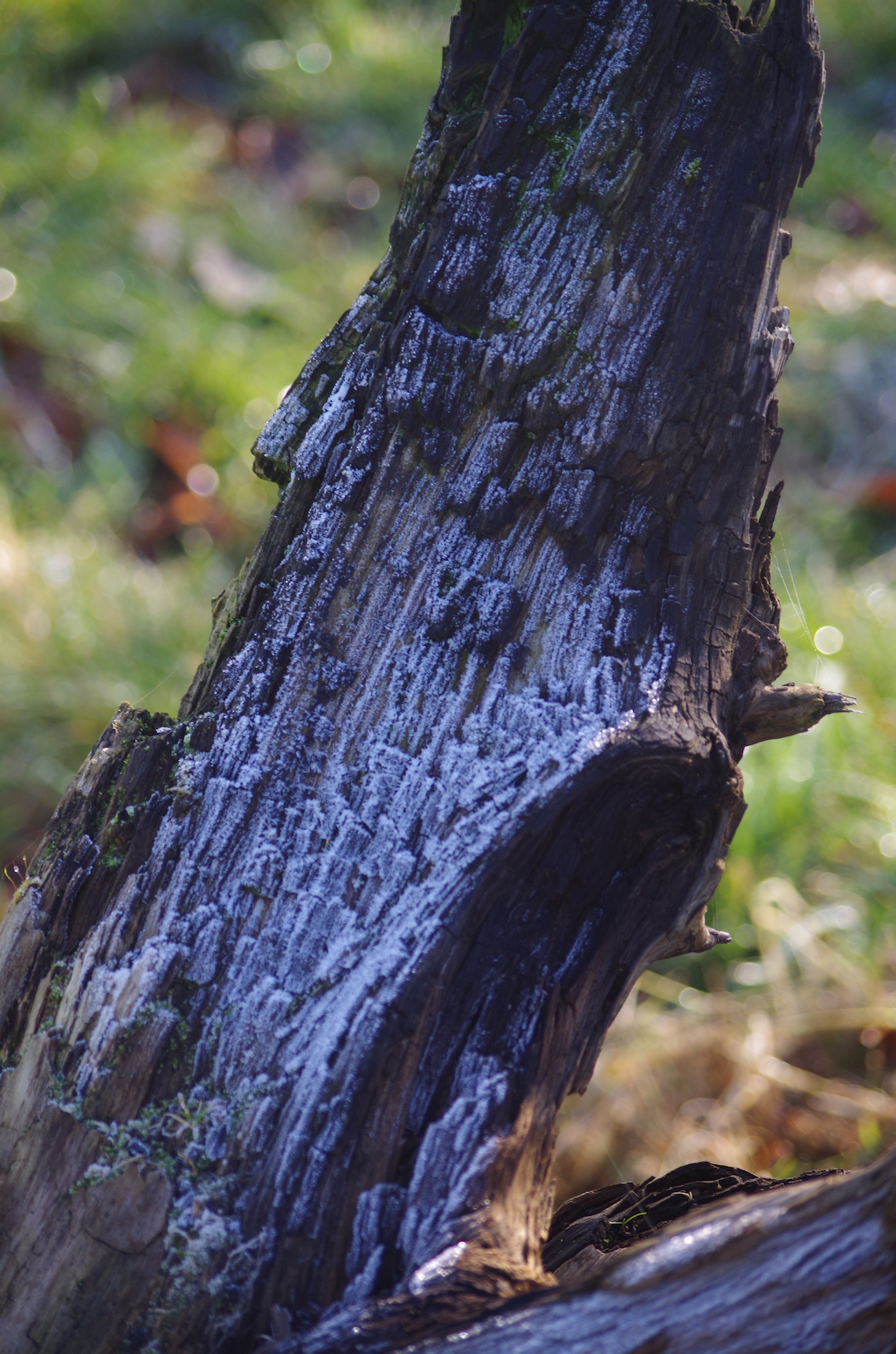
A veil of white mist hid the reservoir from view as I approached with not a breath of wind.
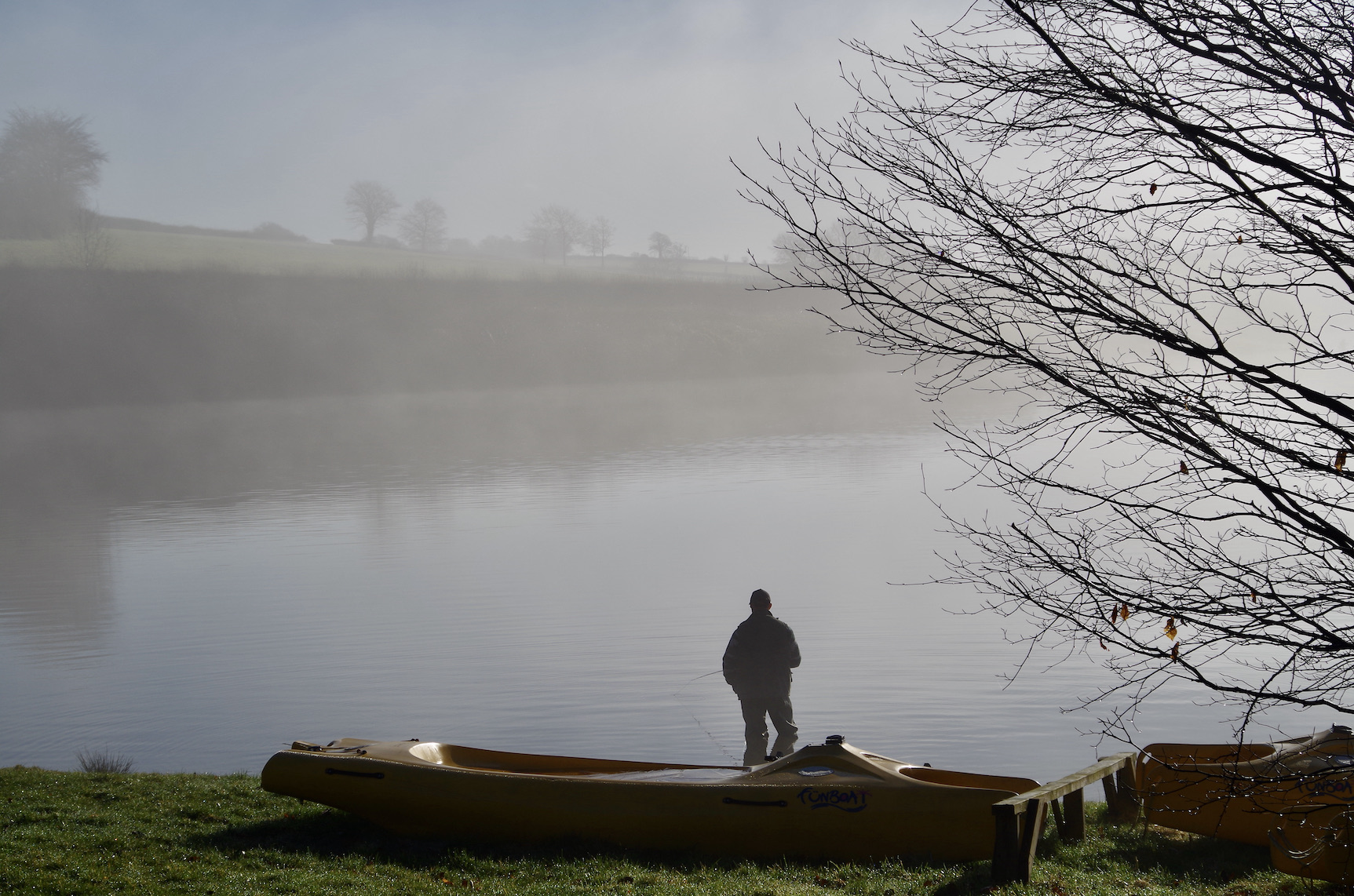
Several anglers were already at the water’s edge and had enjoyed early success. I was meeting with my good friend Jeff Pearce who had assisted with the launching of several boats offering advice based on the previous days opening.

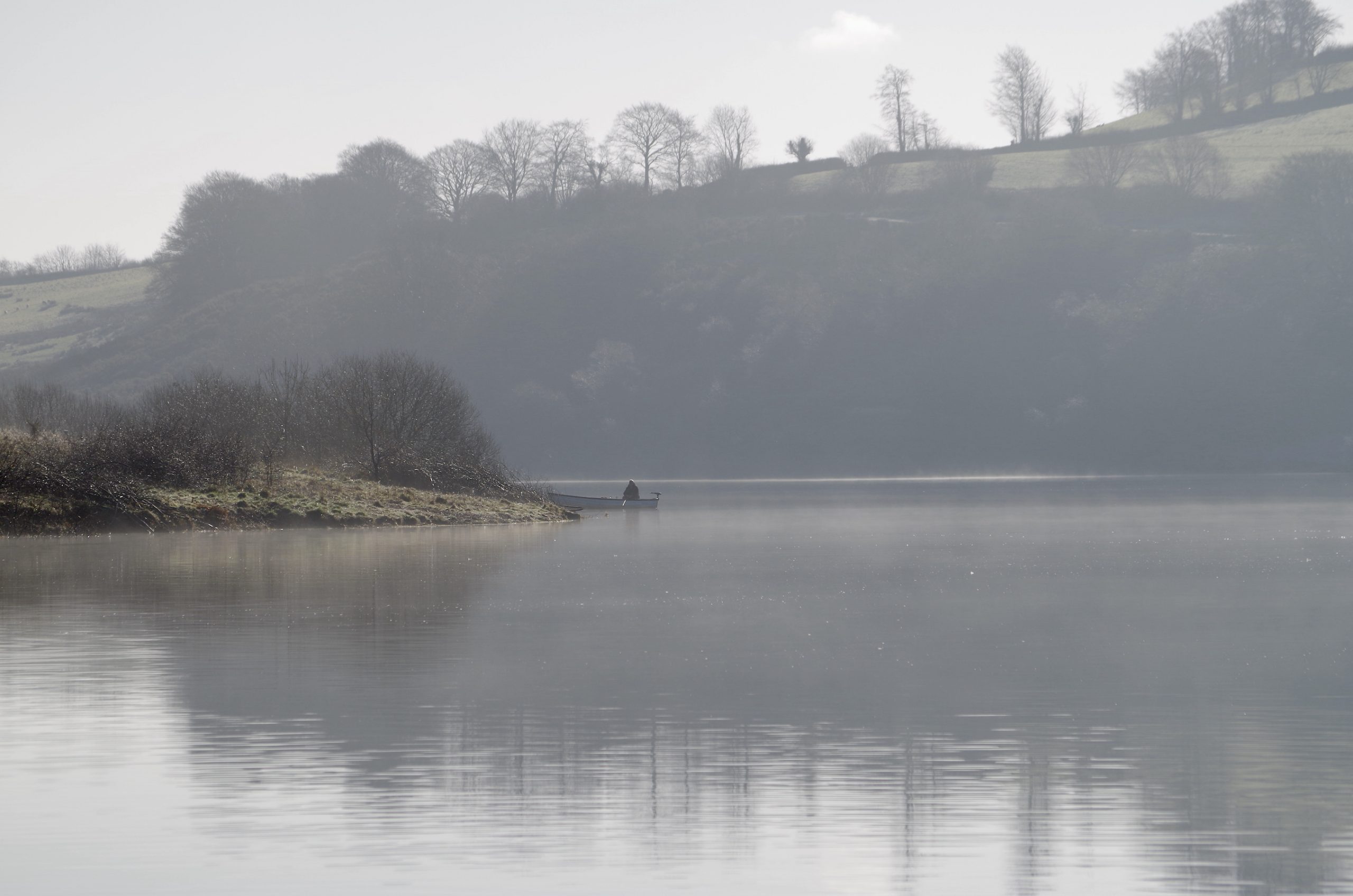
I had already set up my Snowbee Diamond 2 Fly Rod #7 4-Piece – 10′, in combination with a 7wt, Intermediate line with black lure on the point and small diawl bach on a dropper. This was my go to set up early season and I was to use this throughout the day. I had a few casts in the boat bay whilst Jeff continued to assist arriving anglers with the boats.
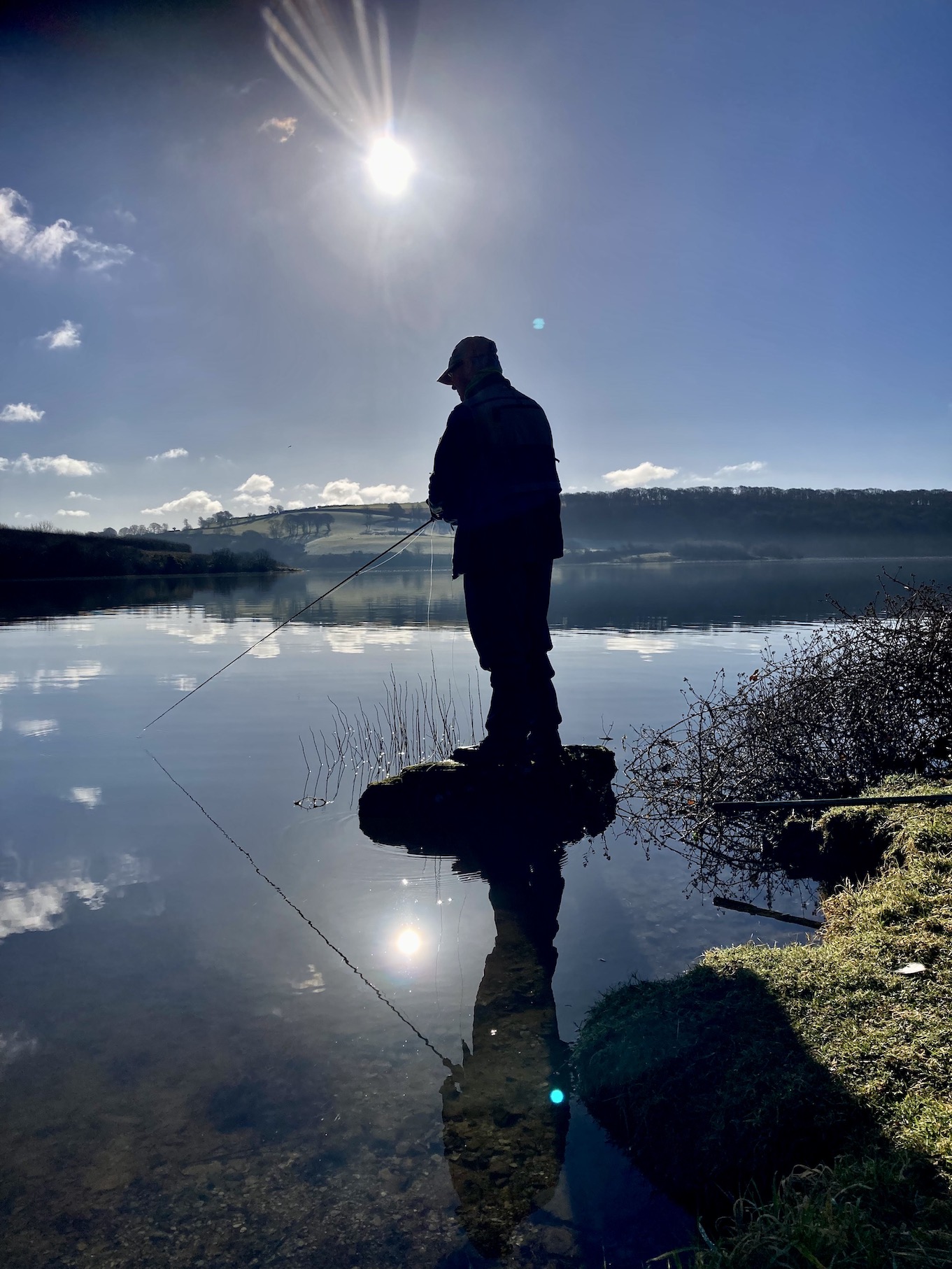
The mist was lifting quickly as late winter sunshine quickly warmed the air. The lake was mirror calm only the departing boats rippling the waters. I captured a few images of the scene and poured a coffee. It was good to be back at this jewel in the crown of West Country Fly Fishing.
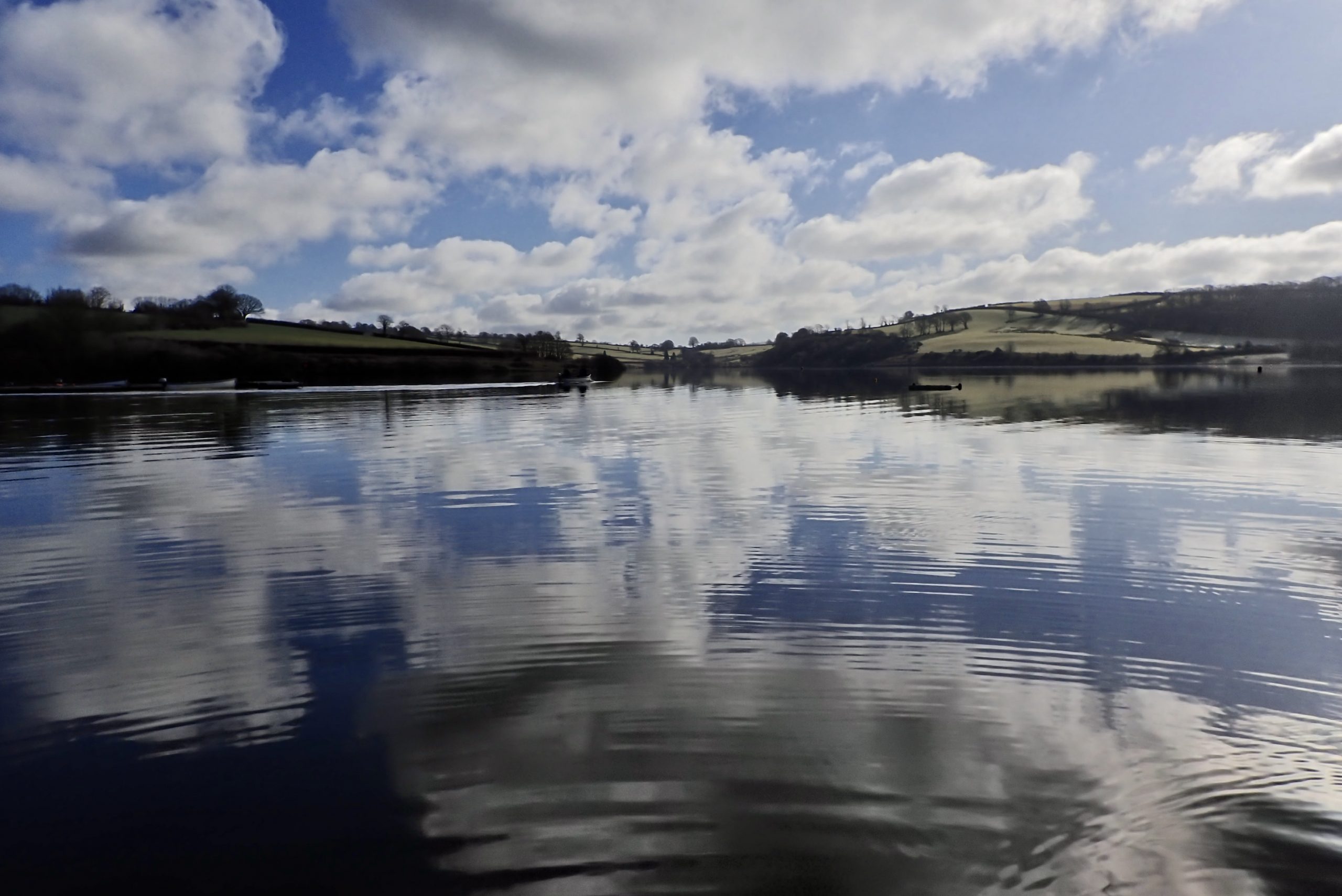
This was day two of a new season and anglers the previous day had enjoyed most success fishing from the bank. The most successful flies were undoubtedly black and green perpetuated by the fact that most anglers choose this pattern early season.
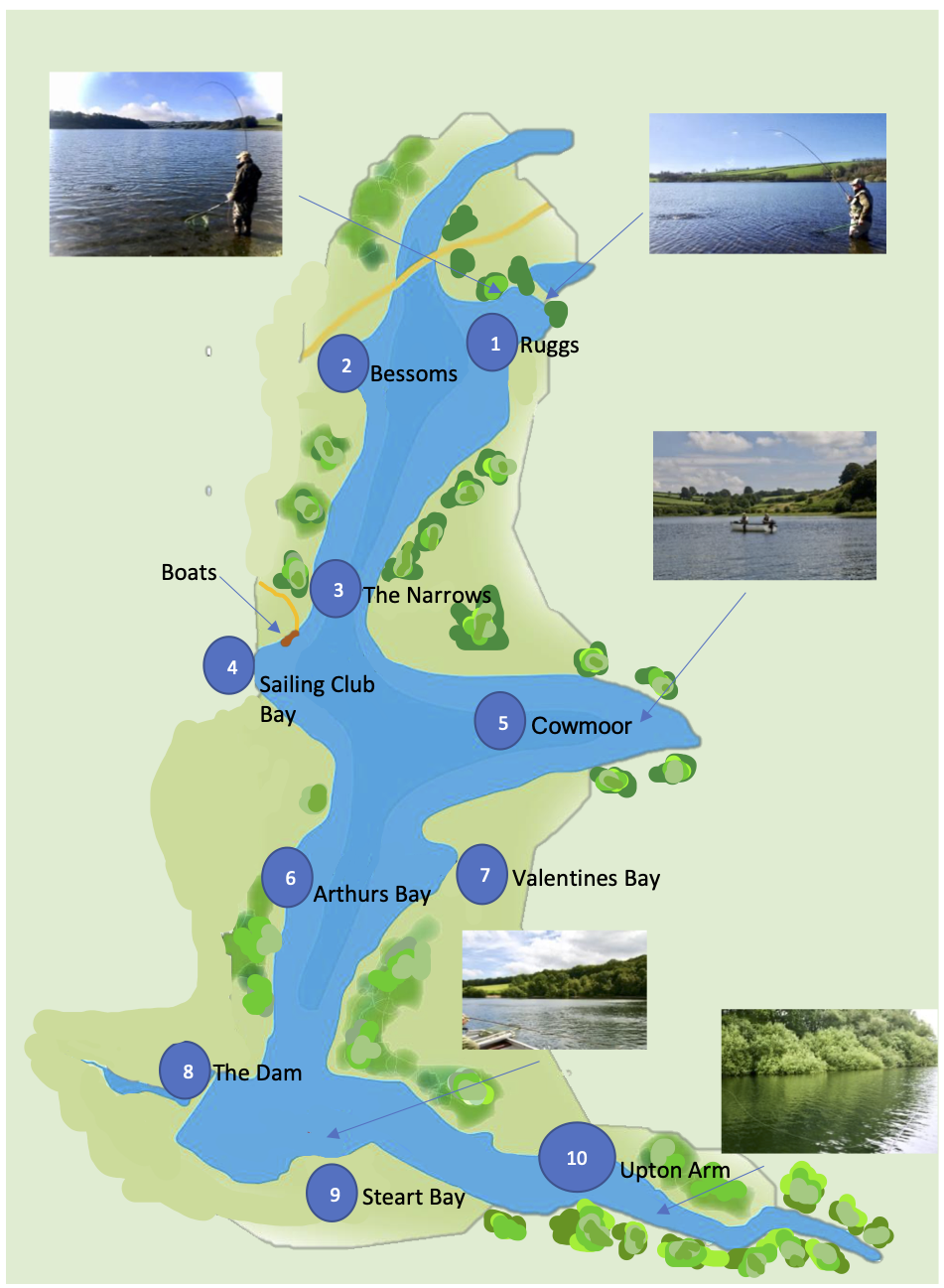
Jeff and I had a cunning plan to utilise our boat to move around beaching the boat at promising areas and fish from the bank. Our first point of call was Bessom’s an area that gives access to reasonably deep water. I was full of optimism and belief but the first hour passed without any connection to the lakes residents.
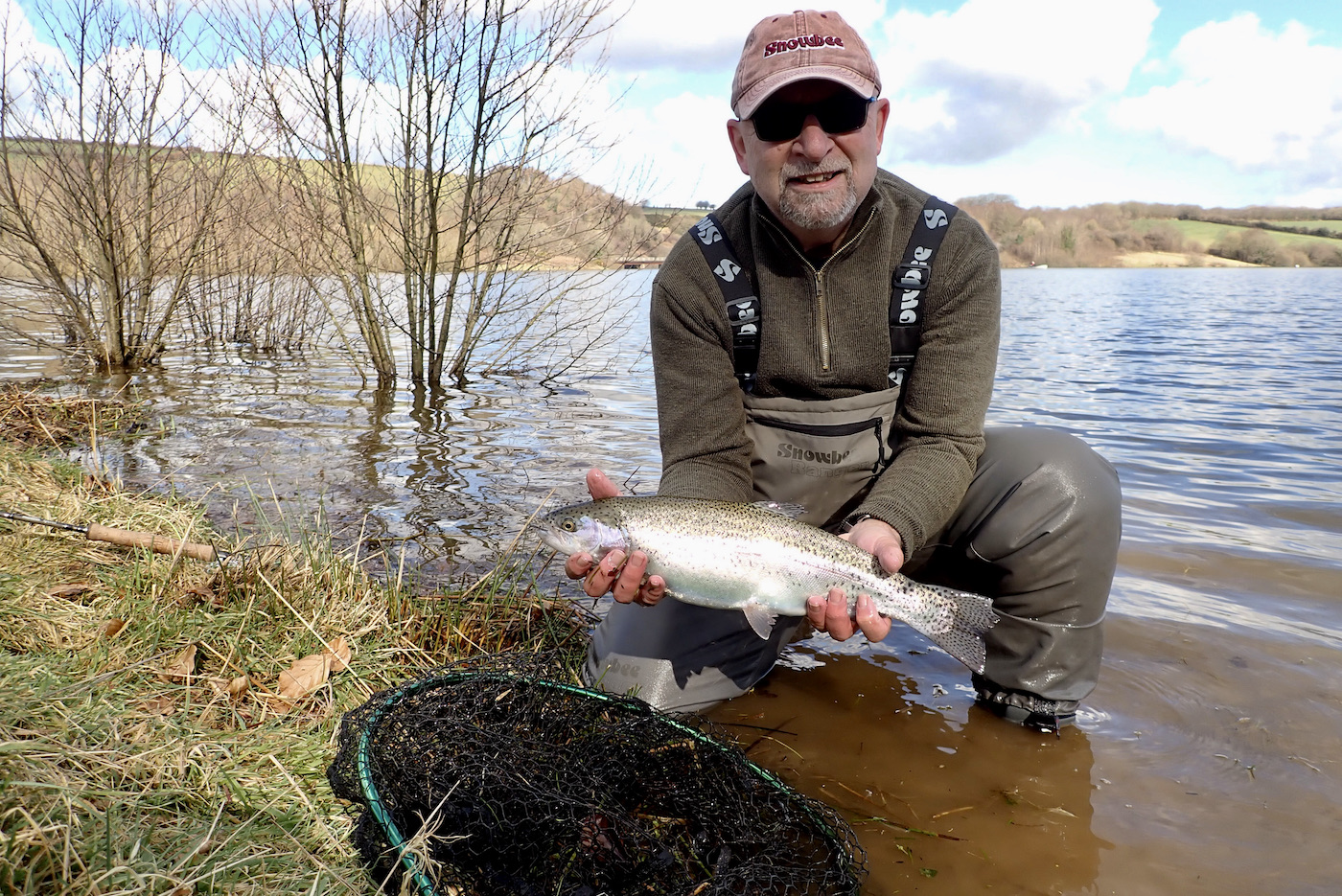
Jeff was first to connect tempting a typical hard fighting rainbow on a black booby fished deep and slow. Despite lack of success I persisted casting out and working my lure back slowly inch at a time with the occasional speedy twitch and pause.
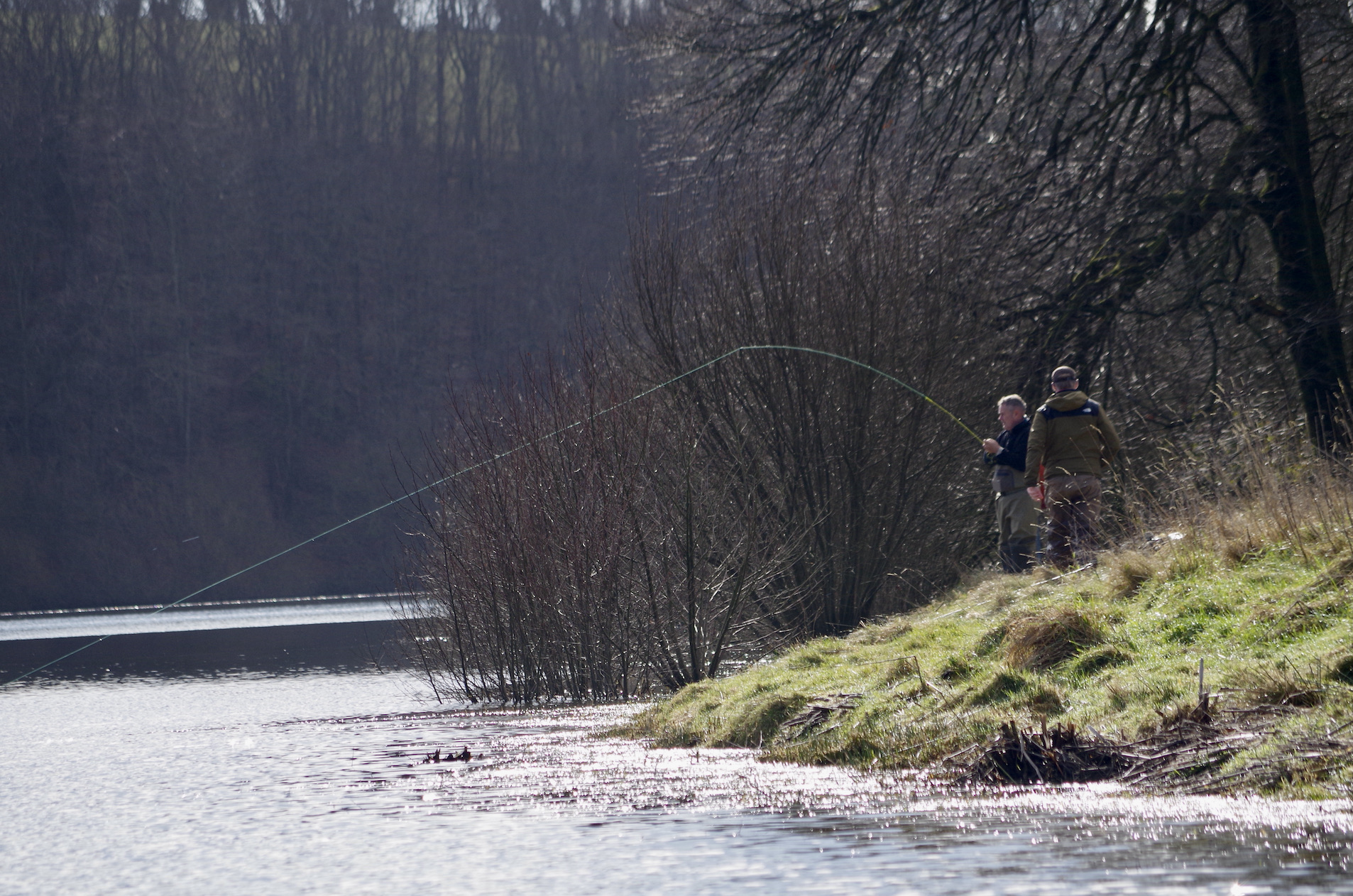
Persistence and belief generally pay off and suddenly the line zipped tight and I enjoyed the delectable throbbing of life transmitted through the line the rod absorbing the feisty rainbows attempts to shed the hook.
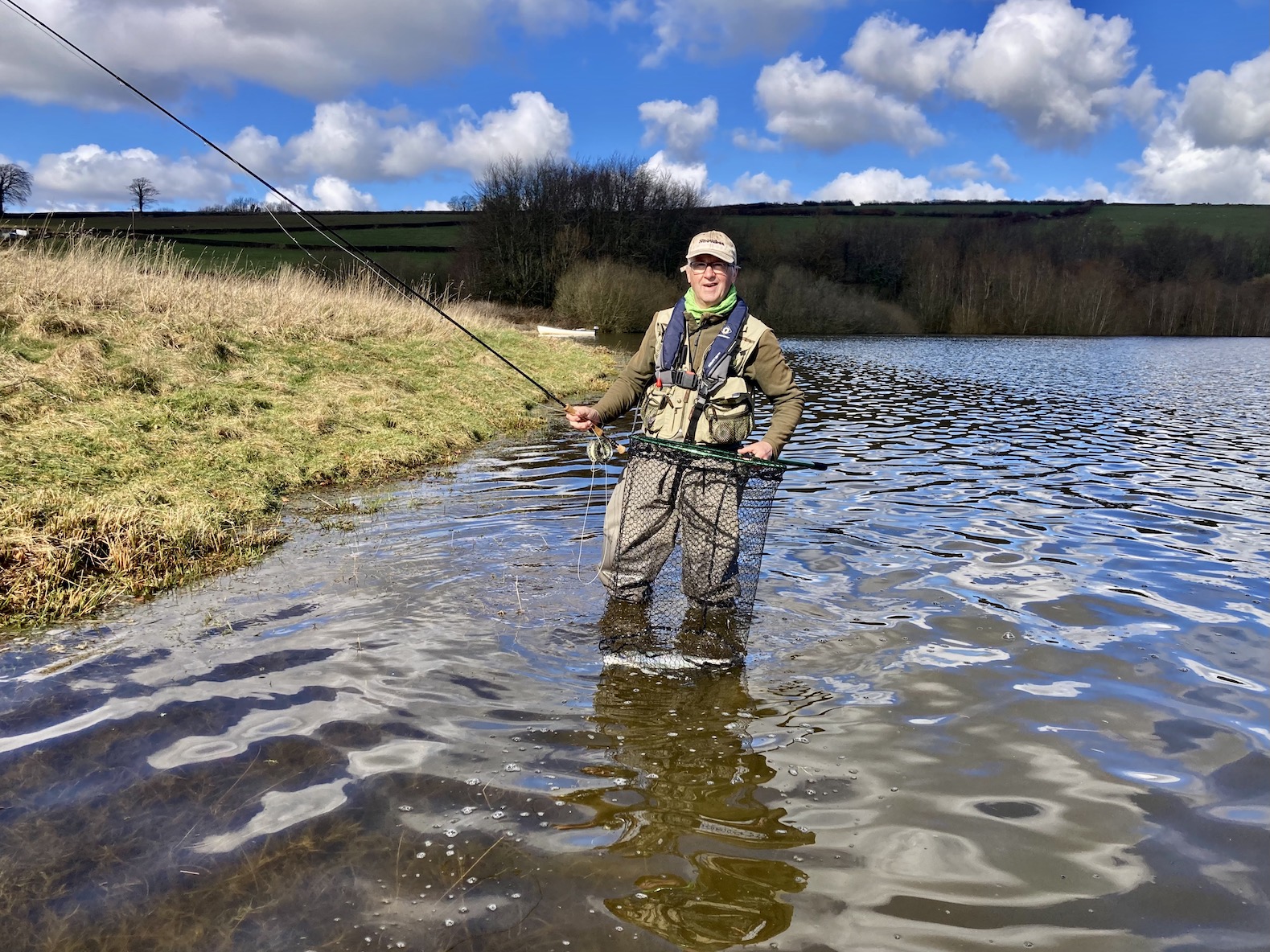
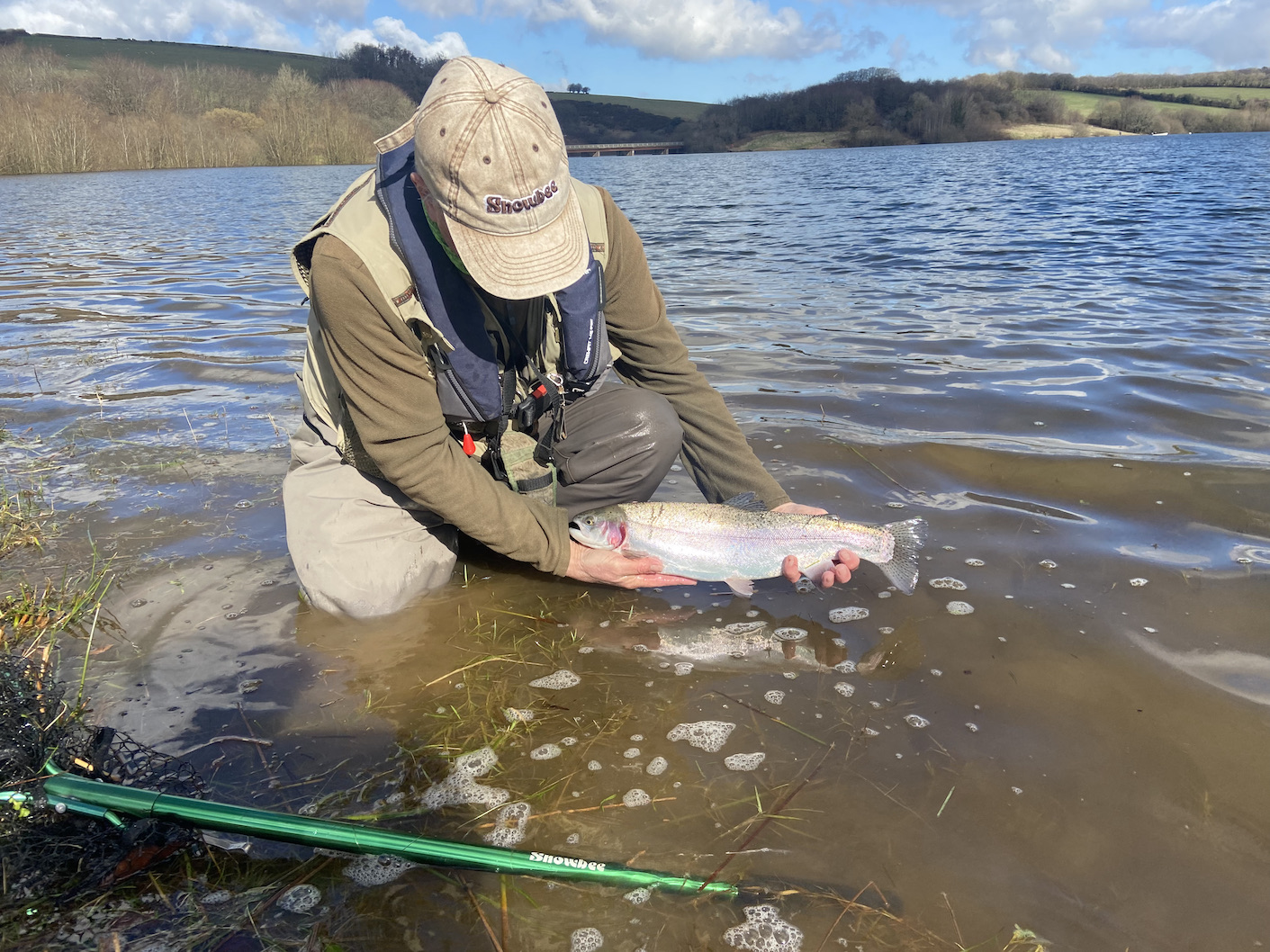
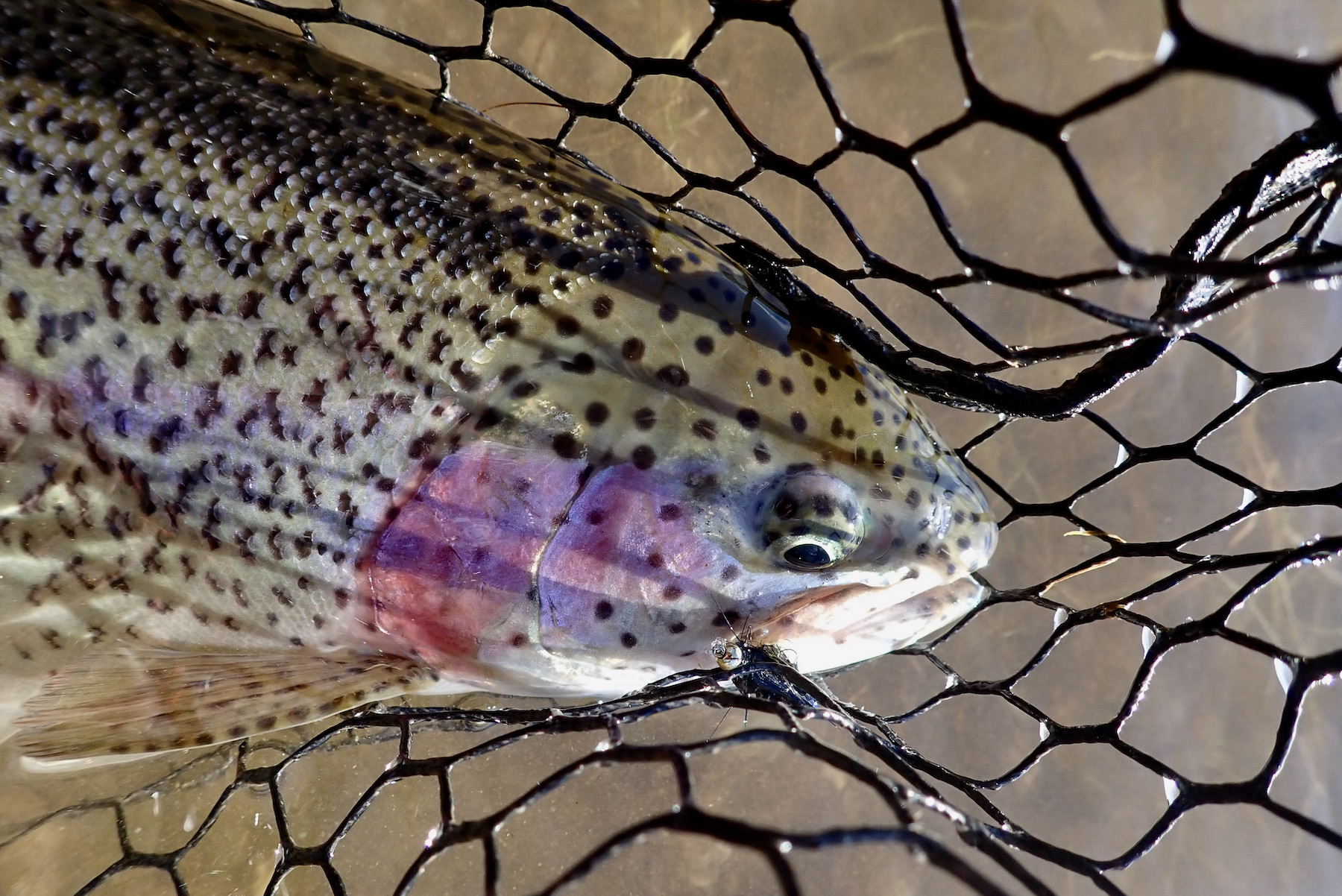
We spent another hour or so catching another six rainbows the best around 3lb 8oz. Whilst we could have stayed and caught steadily we decided upon a change of scenery moving to Cowmoor and an area of bank that has been cleared to allow easier access and plenty of room for the back cast.
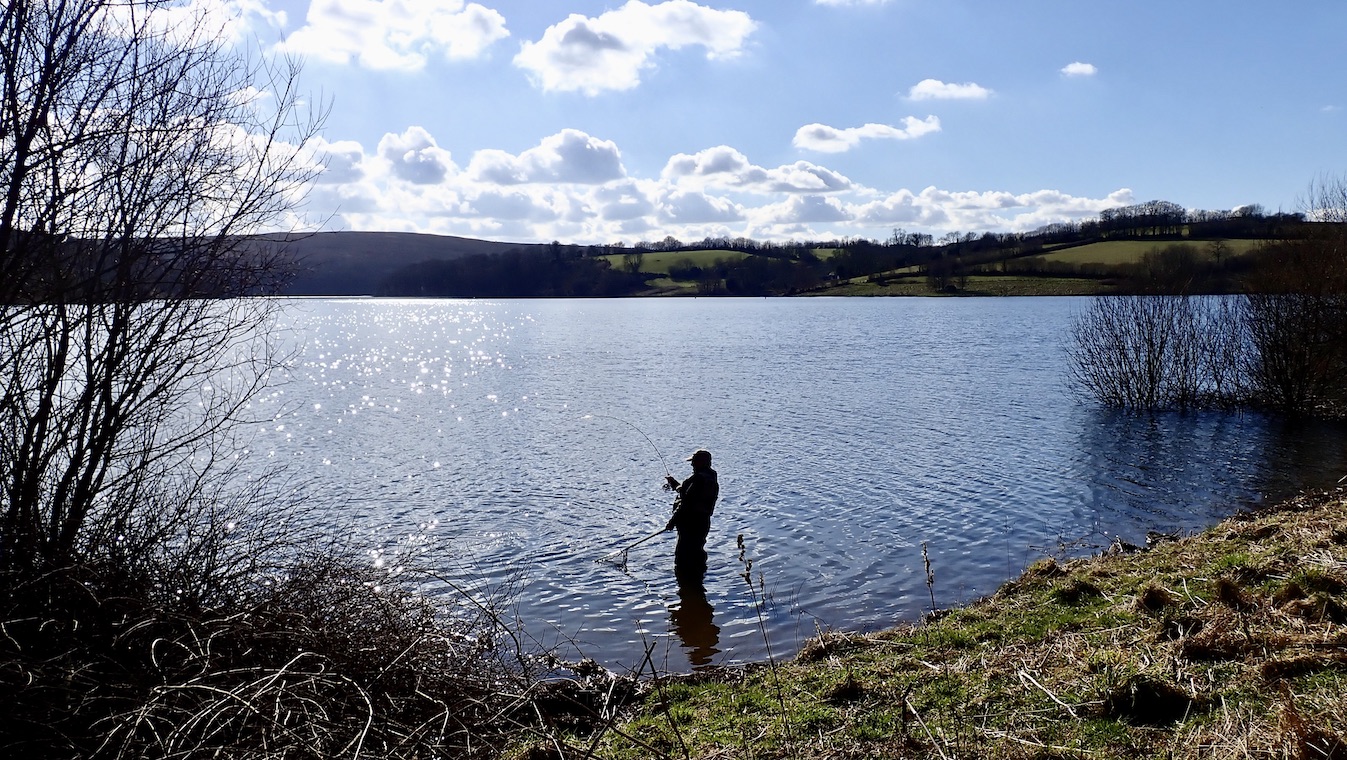
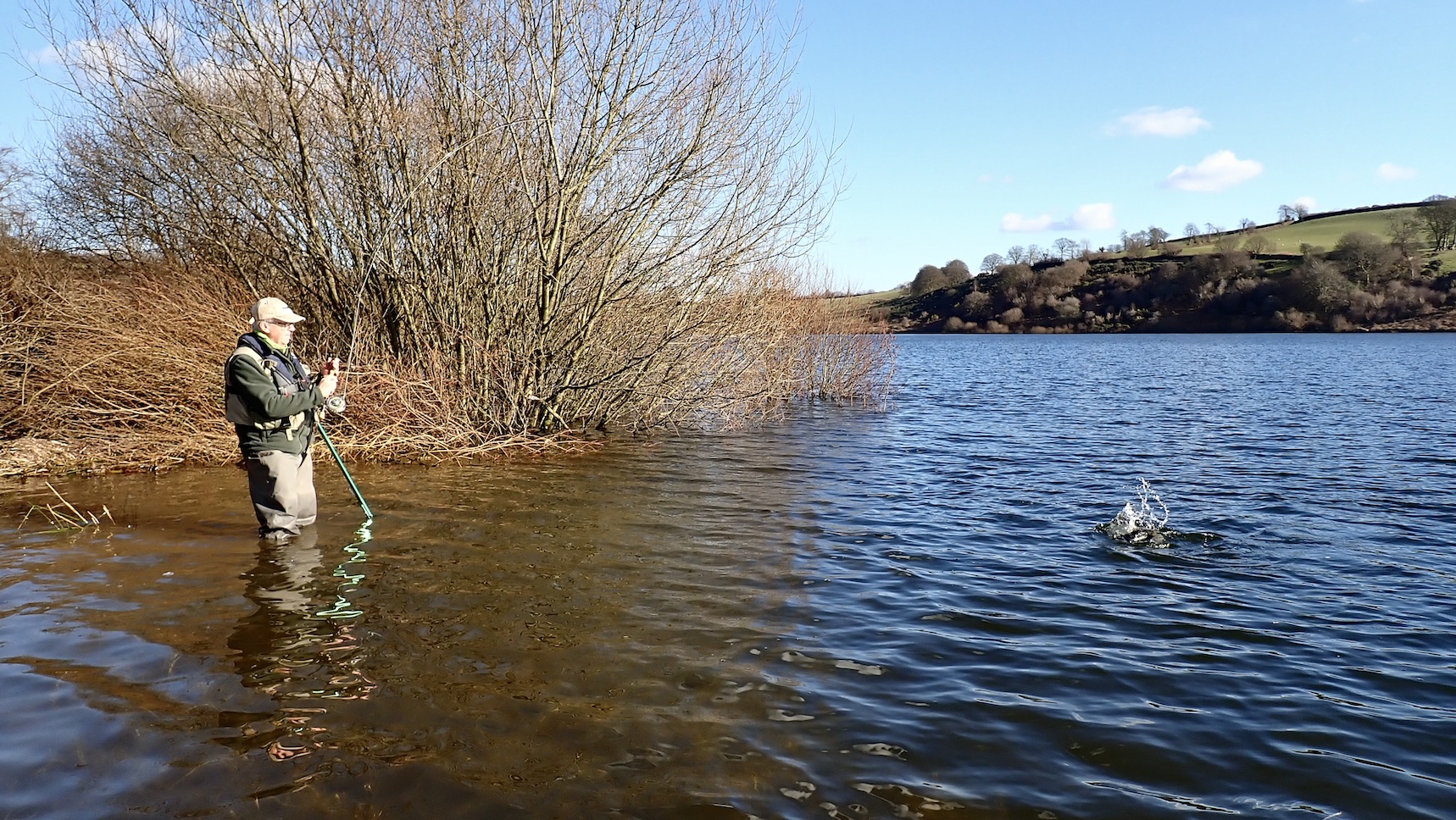
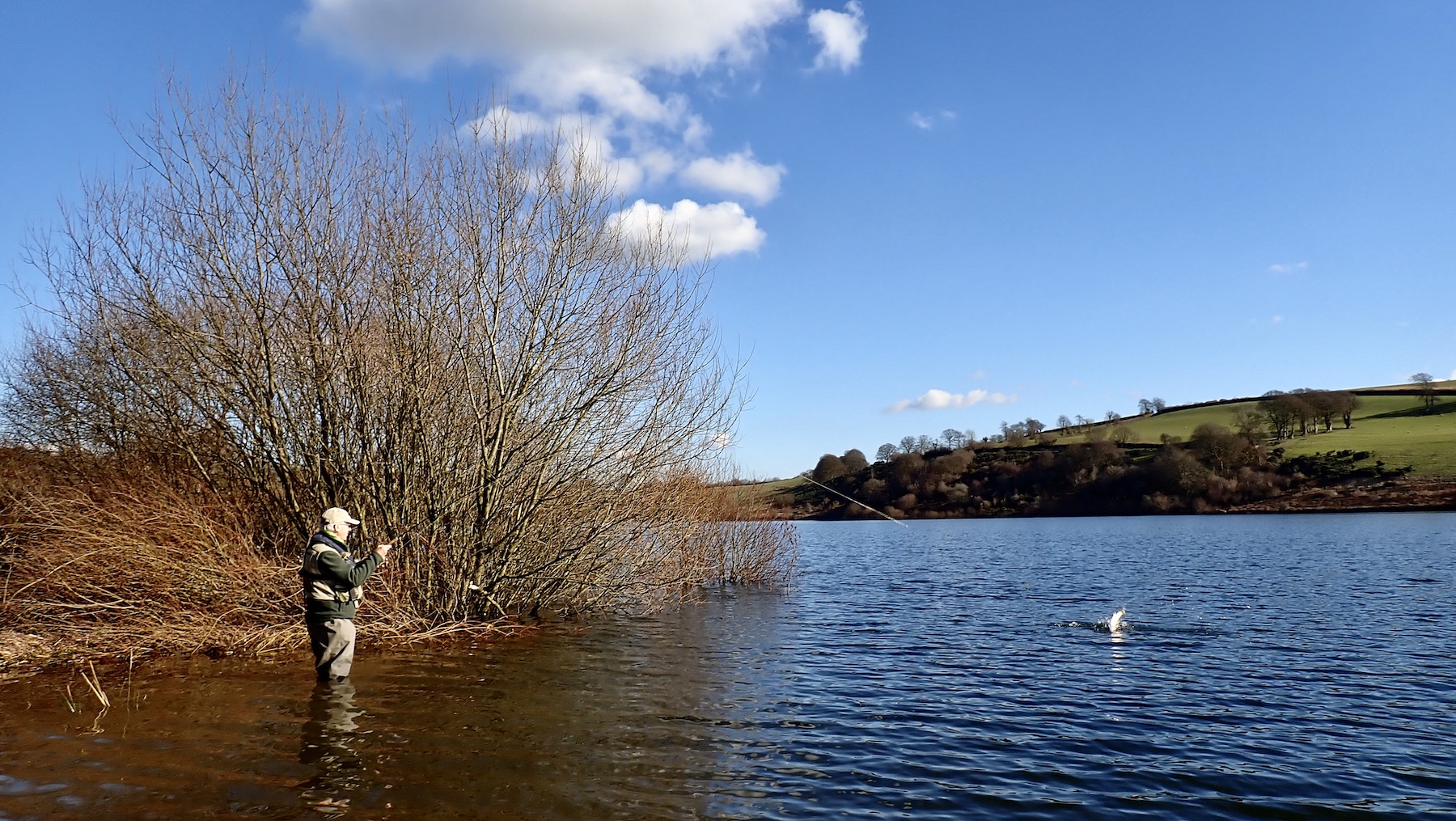
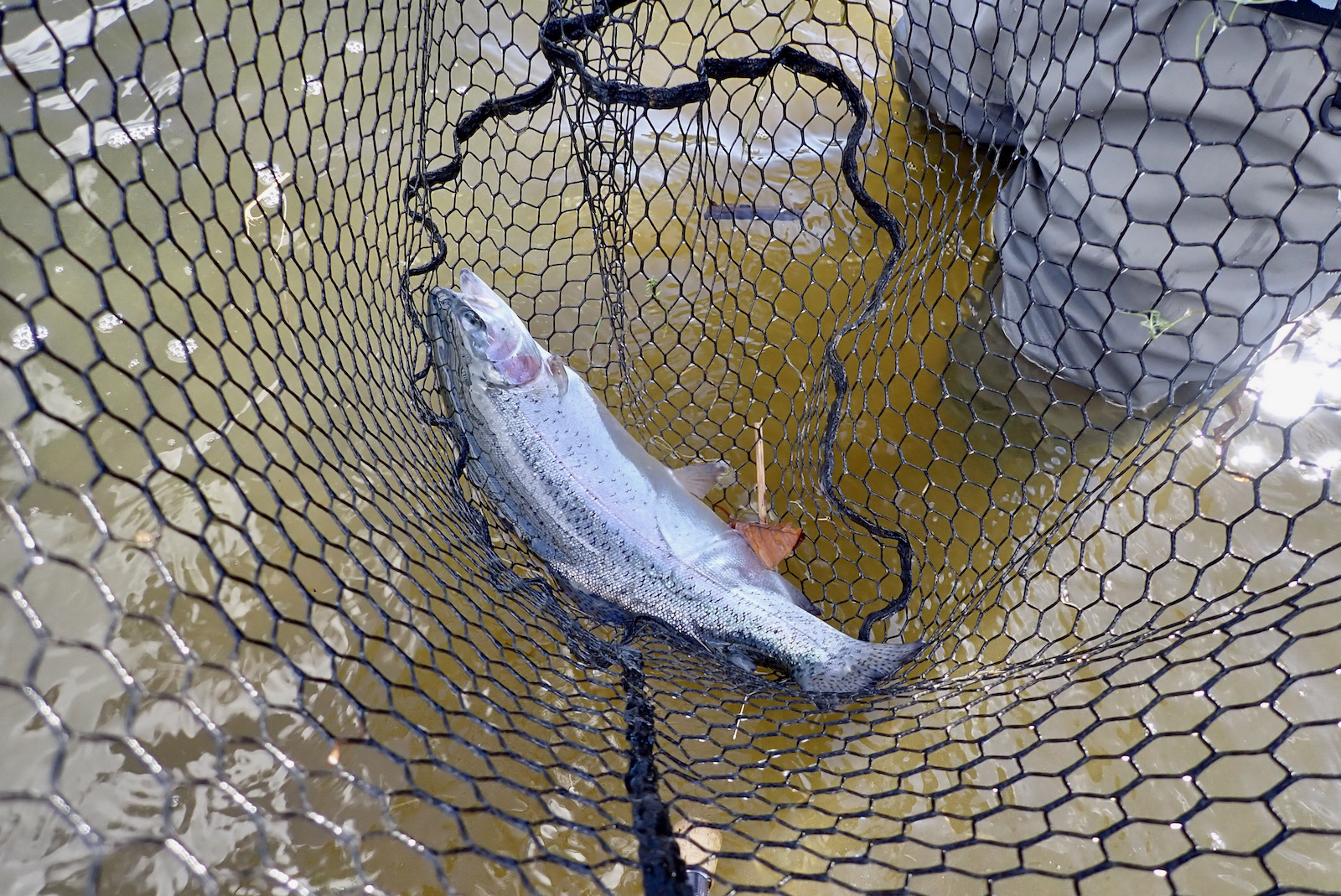
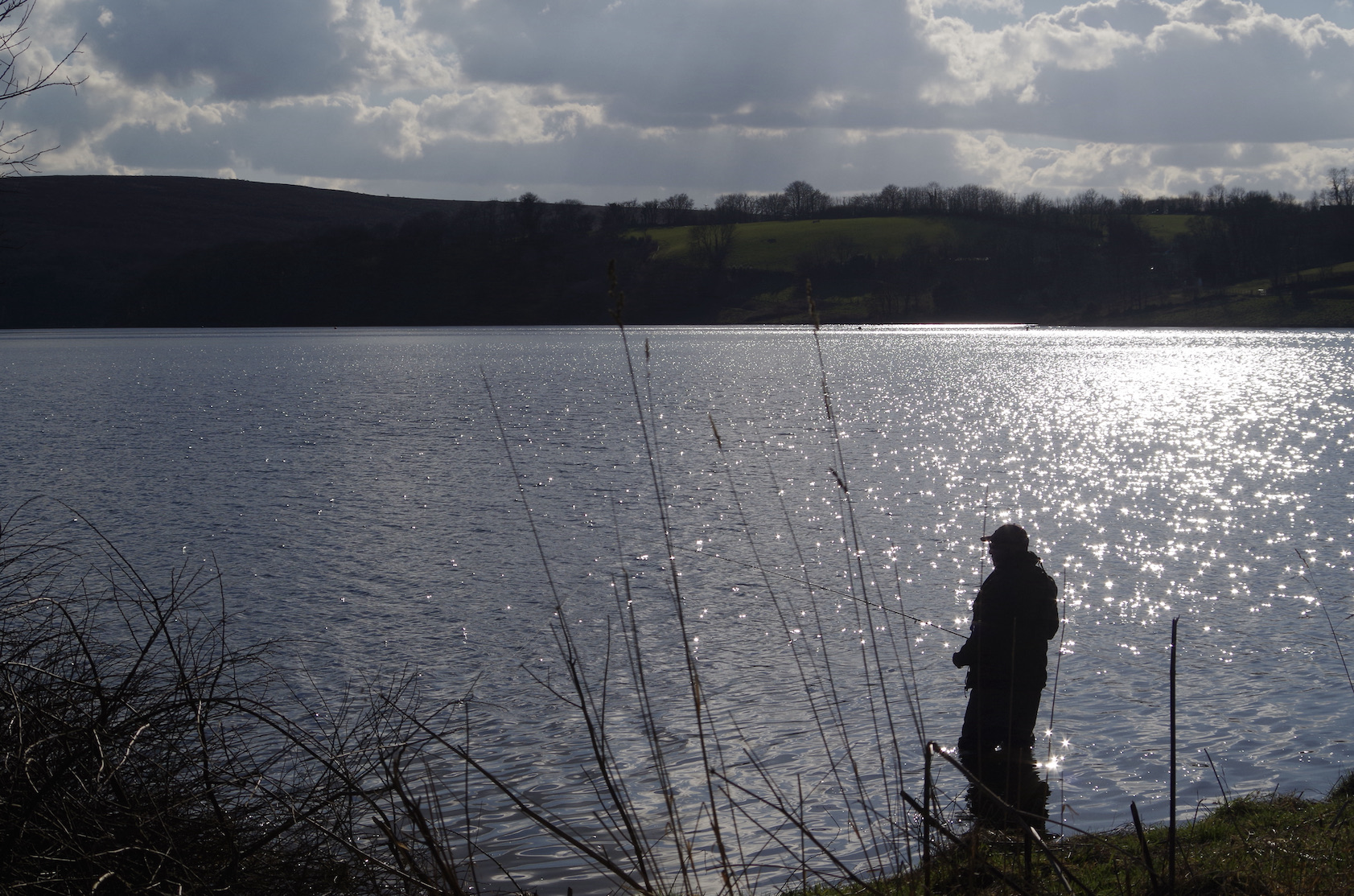
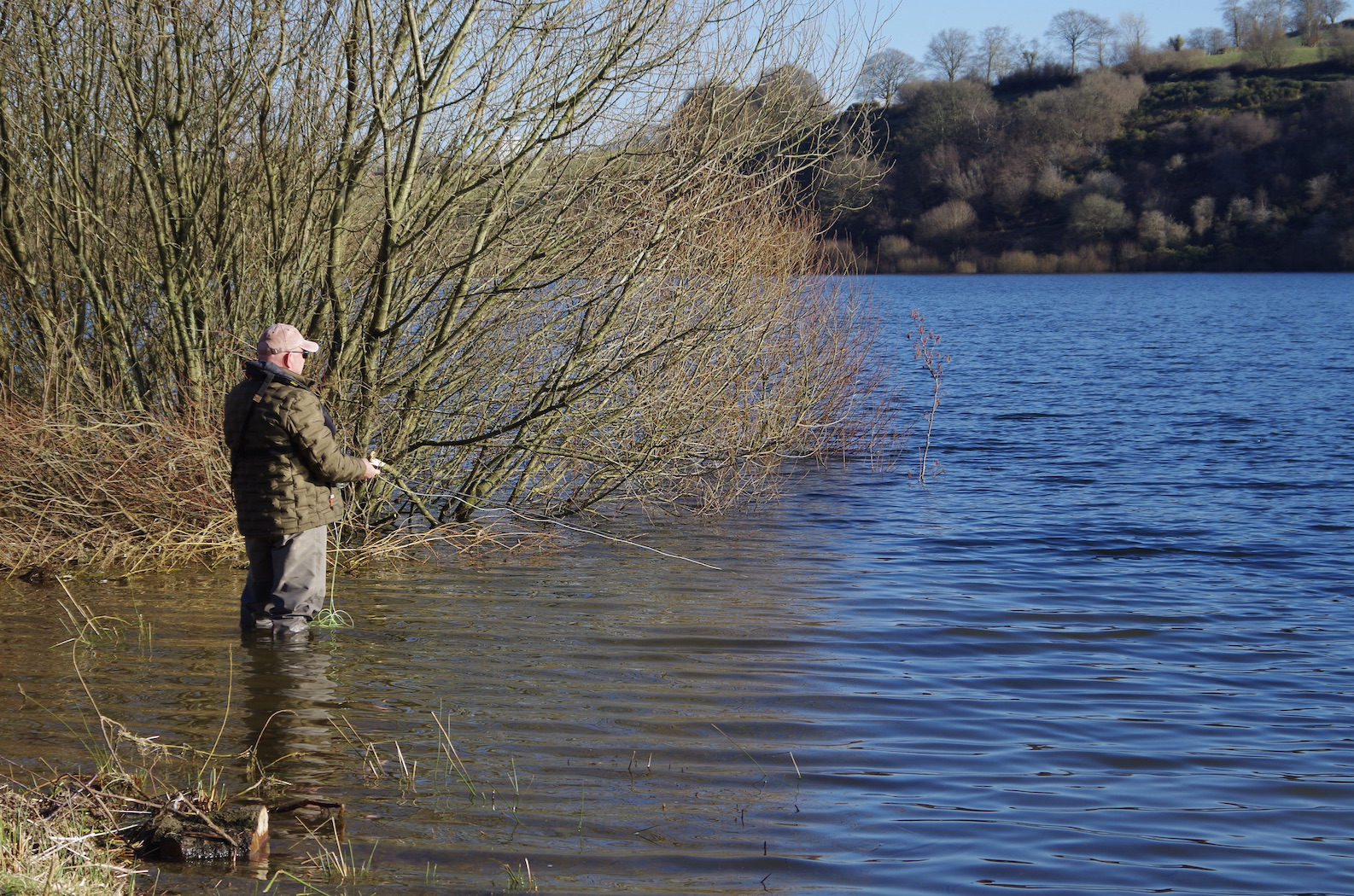
It didn’t take long before the rods were bending and reels singing as rainbows hit our lures treating us to acrobatic antics as the fish leapt cartwheeling on our lines end. Jeff had by now changed over to a similar set up to me and tempted fish on a regular basis. We ended the day on fourteen trout averaging 2lb 8oz the best probably 3lb 8oz. Jeff lost what felt like a big fish of which many have been stocked the best topping 10lb.
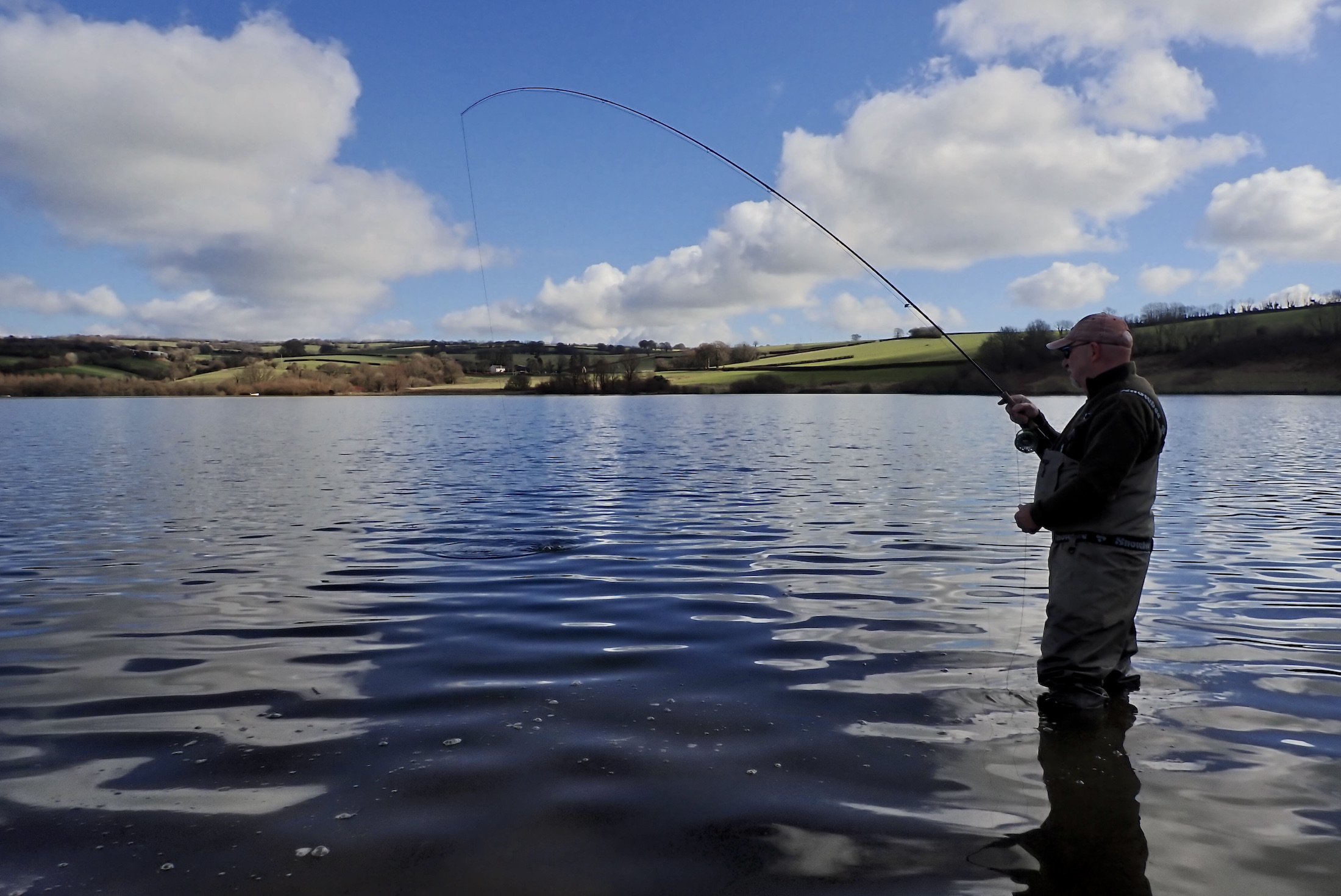
The day will be remembered for the warmth of the sun the beautiful scenery, good company and of course those hard fighting full tailed Wimbleball rainbows. In many ways it was another perfect day that ended all too soon.
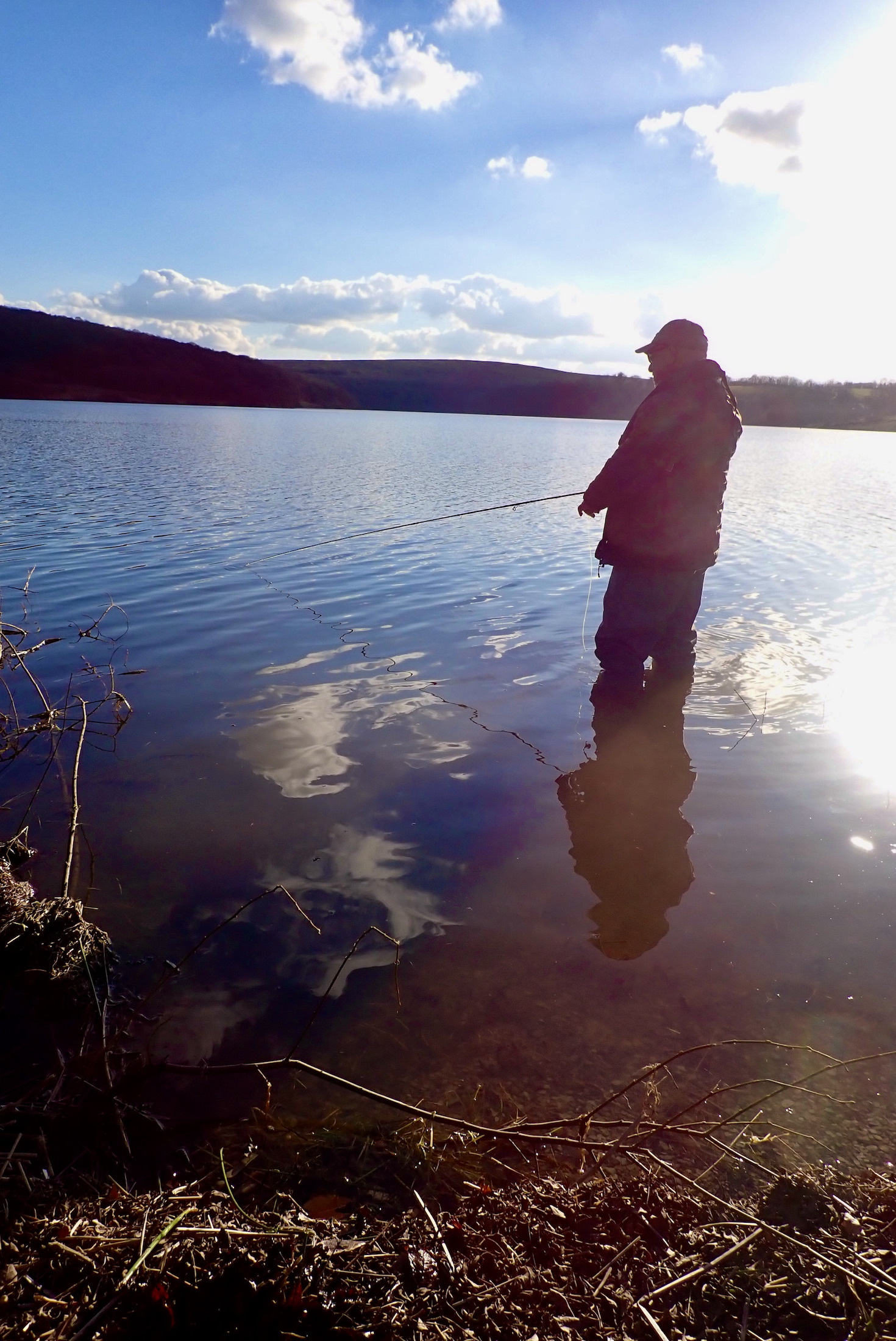
Opening Day Report from Wimbleball Fishery.
Seven boats and twenty-nine bank anglers attended opening day on Thursday. Some great catches were had, pictured was Simon Peters, from the bank at Cow Moor the fish were cruising the bank, you’d get 1 or 2 quick succession then it would go quiet for a while, ended up with 15 fish between two anglers, including pictured one around 5lb.
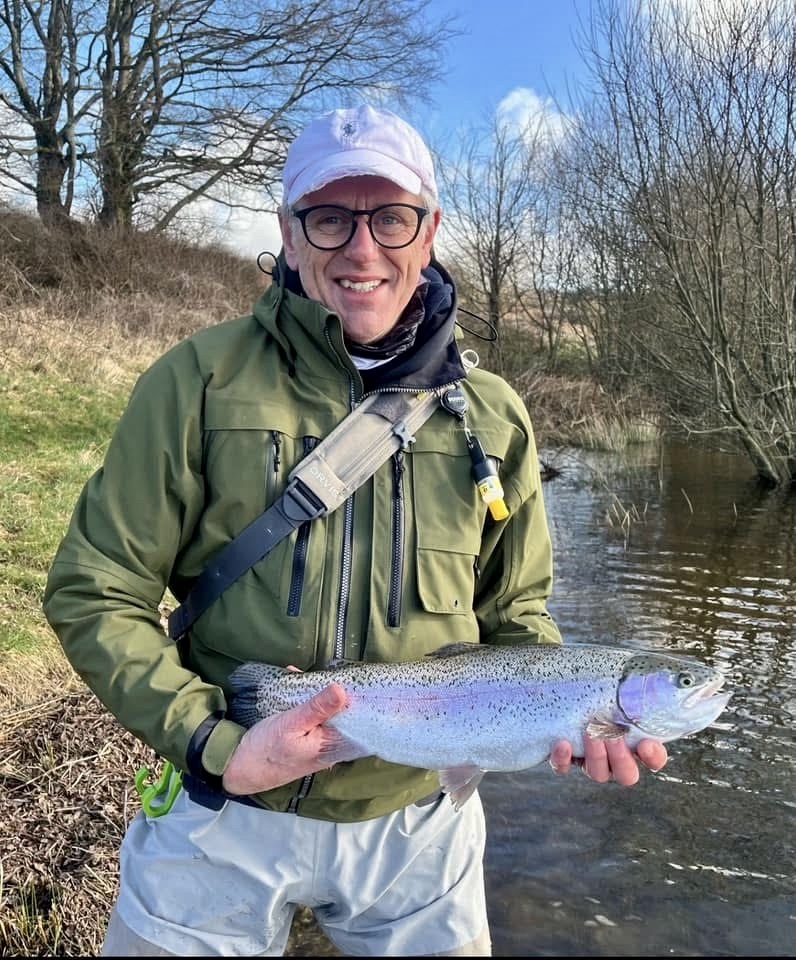
Peter Duckett had 3 right off from by the flagpole.
Anthony Cartwright had a great day on Friday fishing the bank from Ruggs, catching 16 fish on a mixture of floating lines with lures to shooting heads and boobies. Picture of decent fish in margin by rod, not far off 10lb.
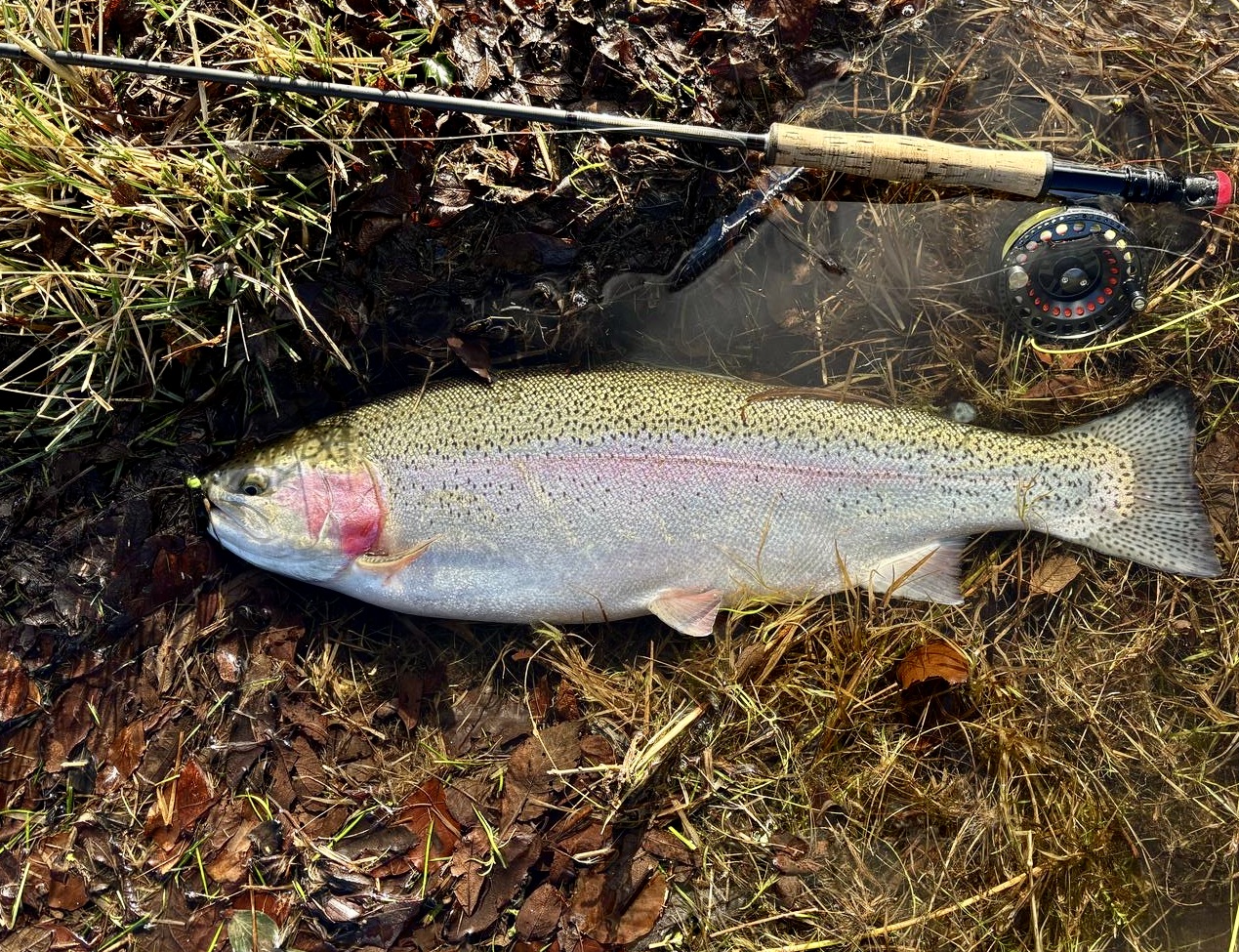
Kieron Jenkins with the best of a 21 fish total from the boat saturday, with most fish coming from Bessoms with some lovely overwintered fish from around the Pontoon.
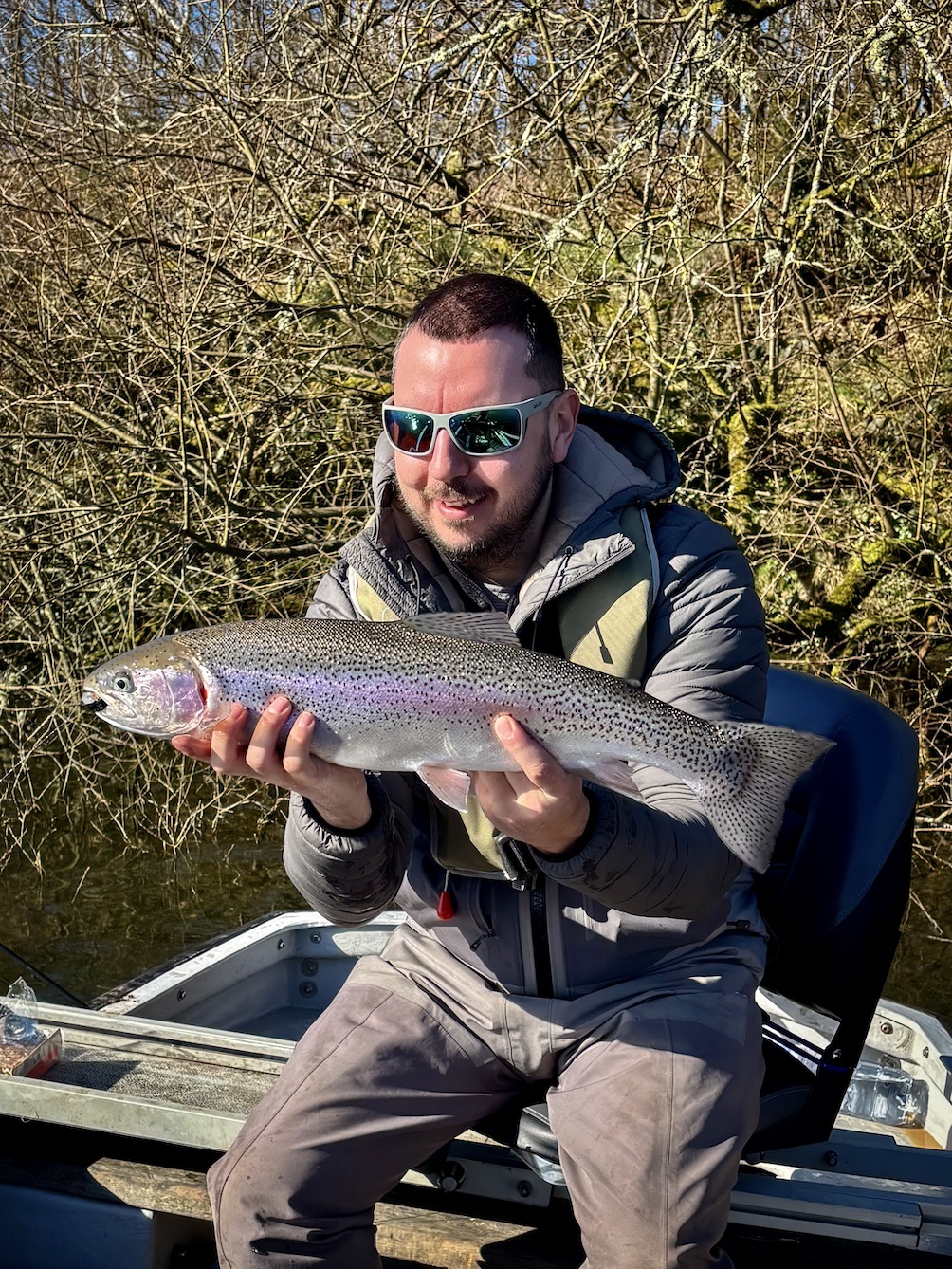
Best method was fishing di7 and two boobies (pink and black) slowly at depth. Plenty of positive vibes from anglers, bank seemed to outfish the boats weather was so different from previous seasons and the cold temperatures with bright sunshine put the fish down a bit but some still caught on floating lines and diawl bachs! Get those online returns in, as at the end of the month Wimbleball admin will pick a random catch return for a free take 2 fish then catch and release ticket.
POPULAR FLY FAIR SIGNALS EVE OF A NEW SEASON
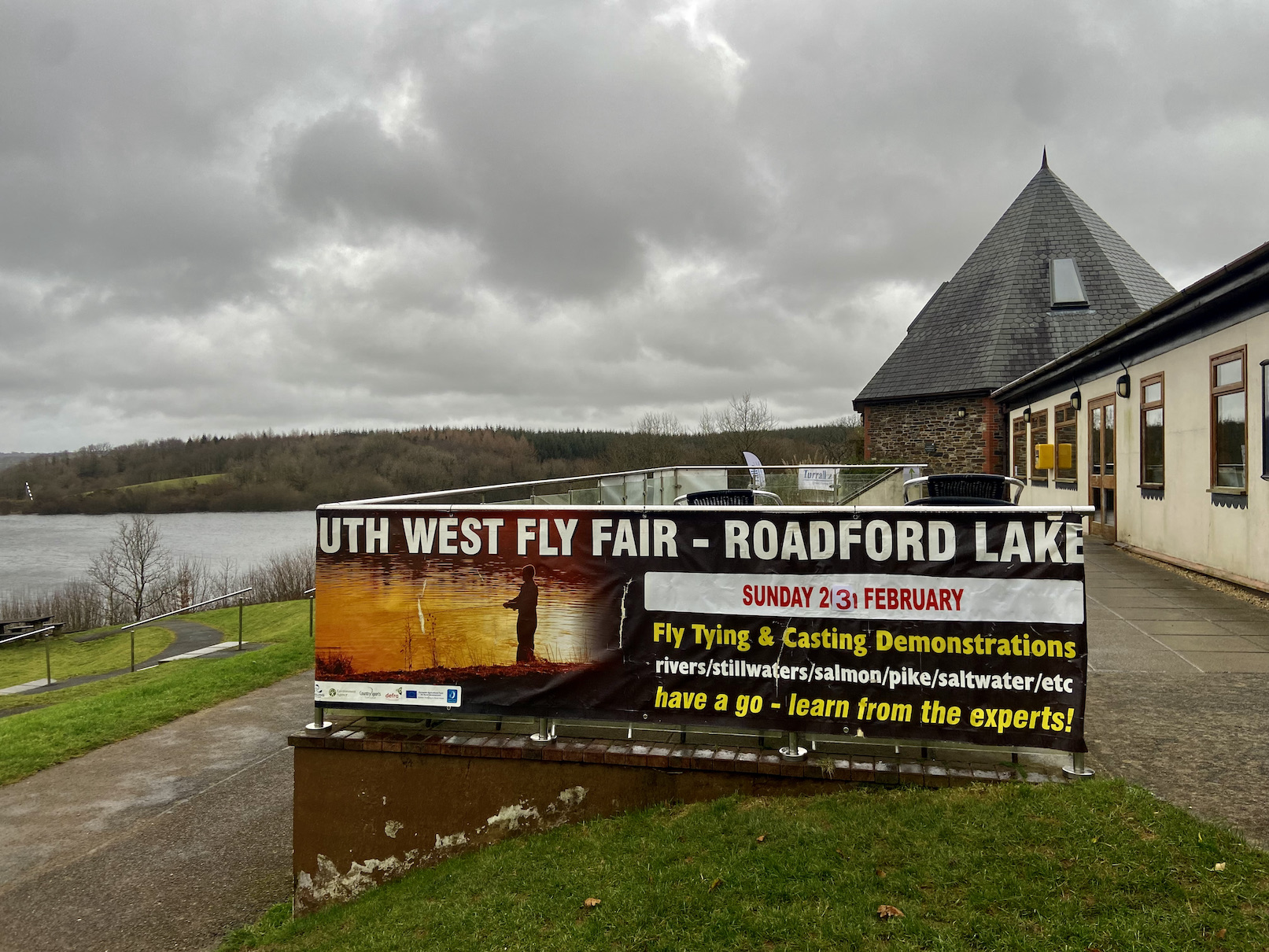
The South West Fly Fair hosted by South West Lakes Trust and held at Roadford Lake has become a popular fixture in the West Country angling calendar and is seen by many as the curtain raiser to the season ahead. I have been attending the event for many years and always enjoy the opportunity to catch up with familiar faces and forge further connections within the fly fishing community. The main sponsors for this year’s event were once again Turrall, Chevron Hackles and Snowbee.
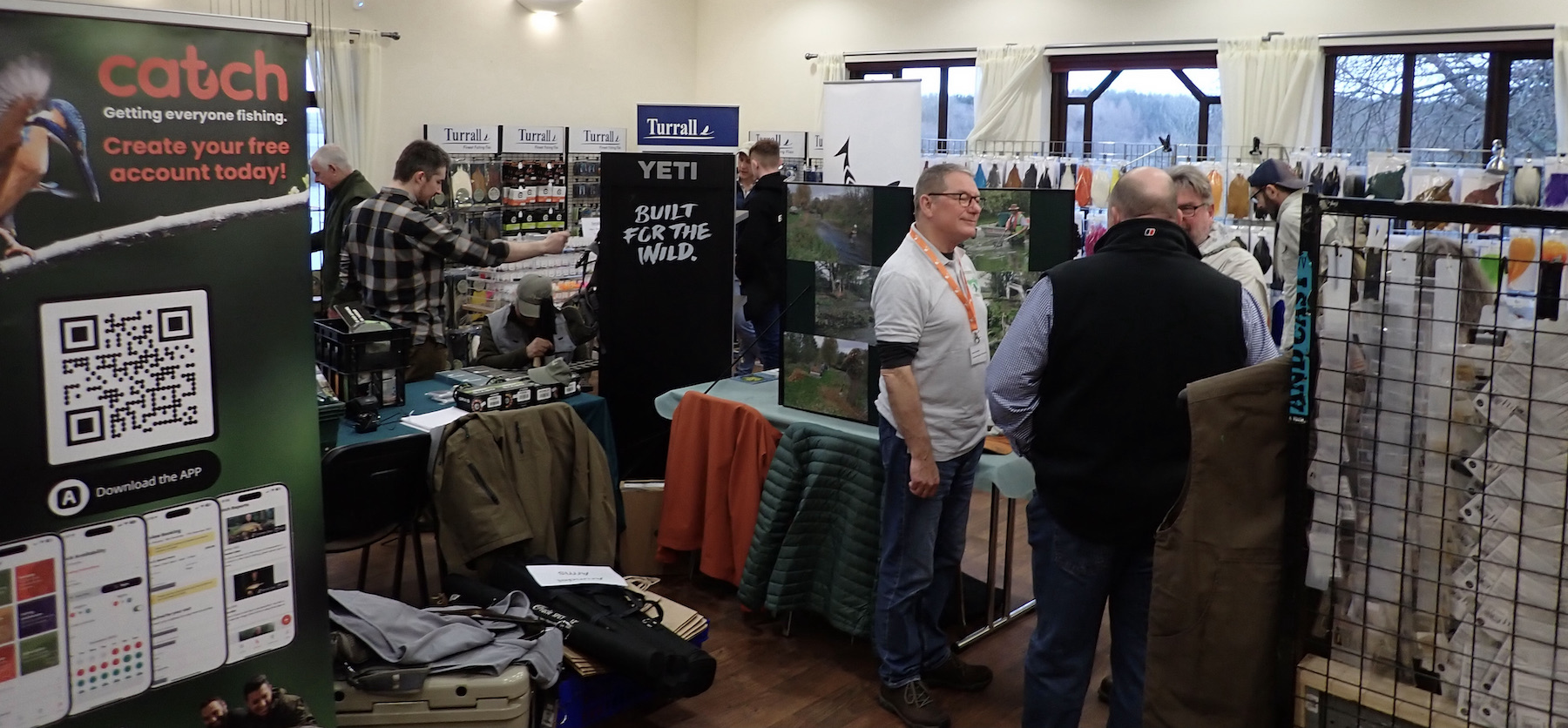
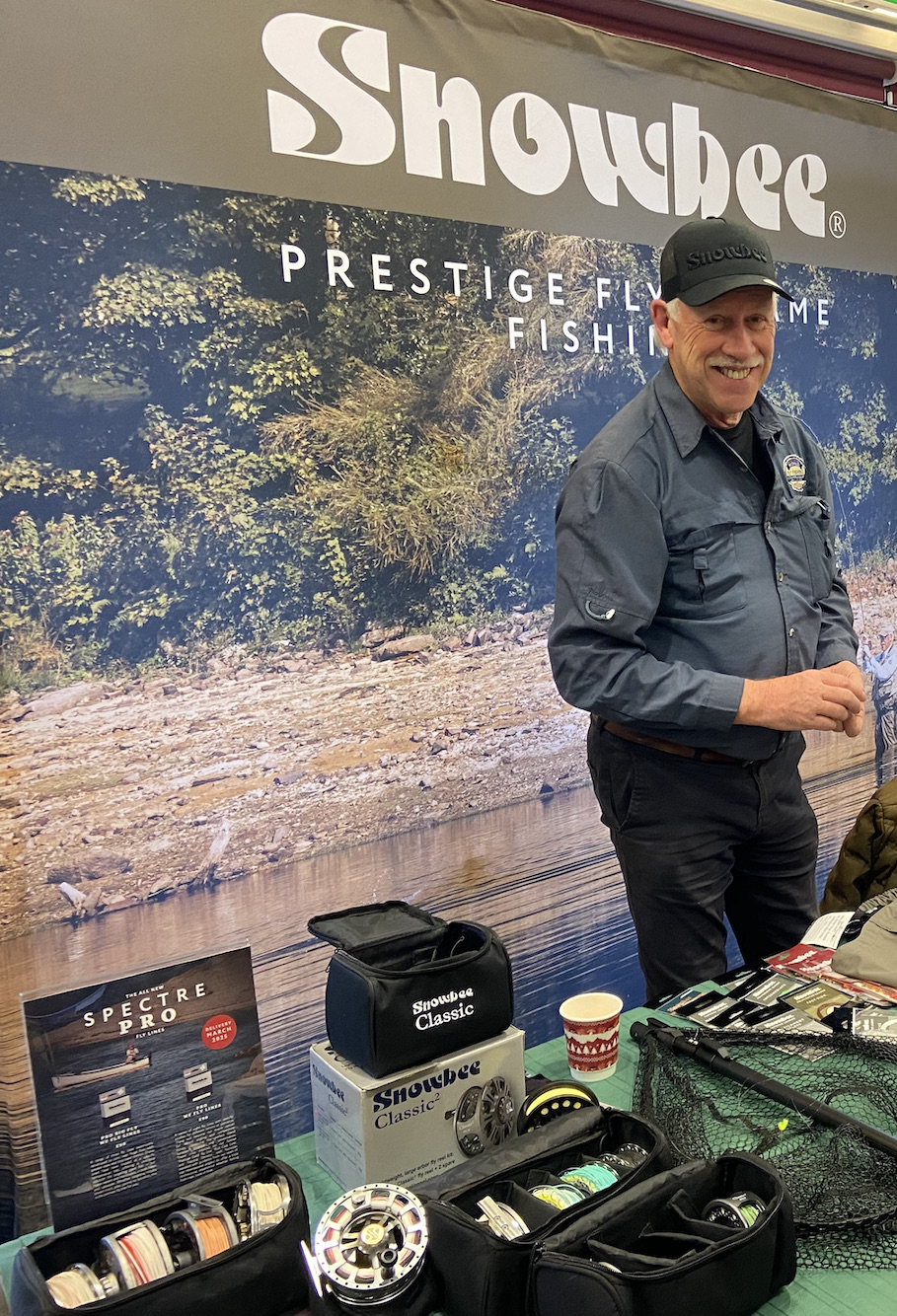
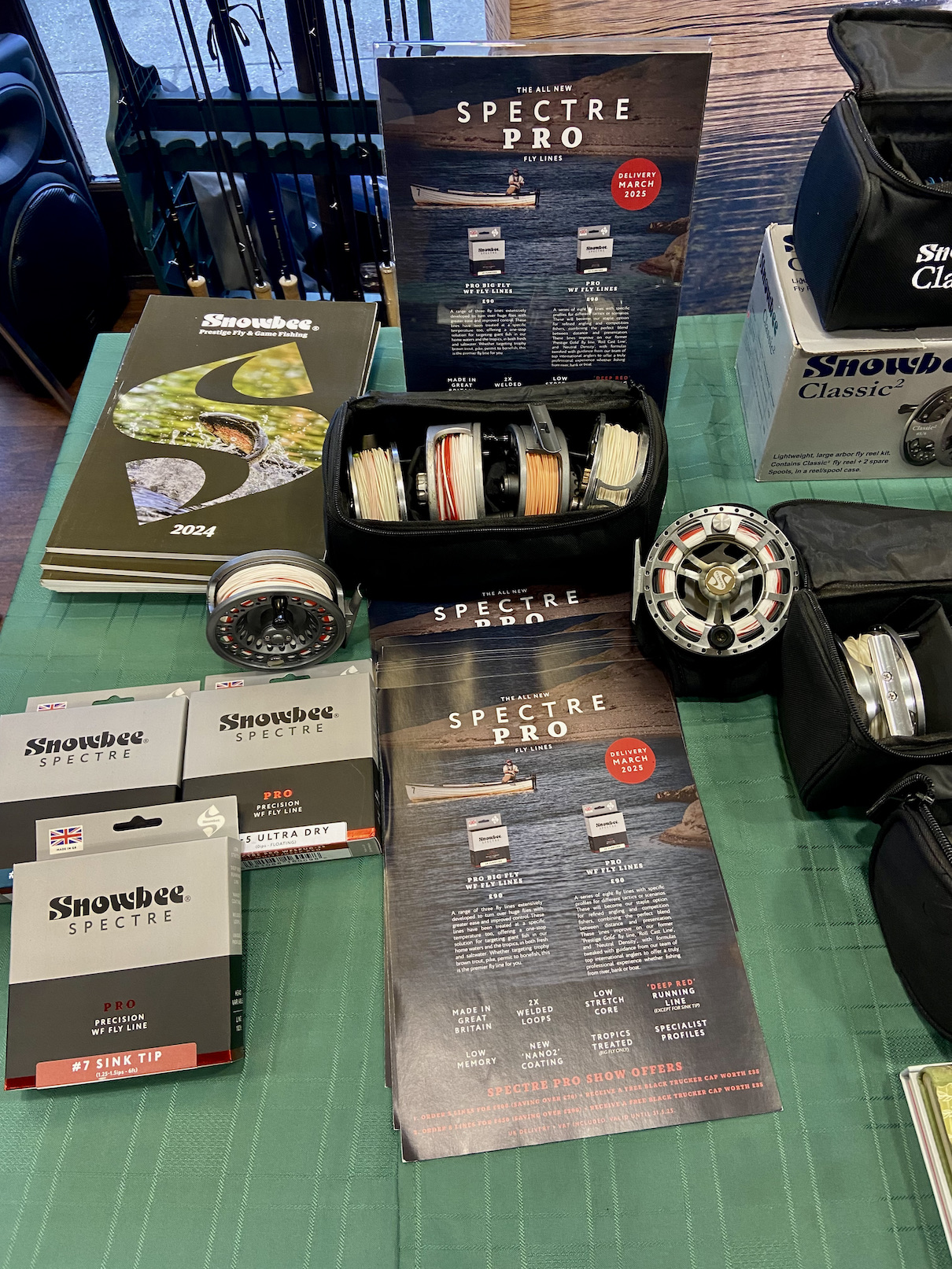

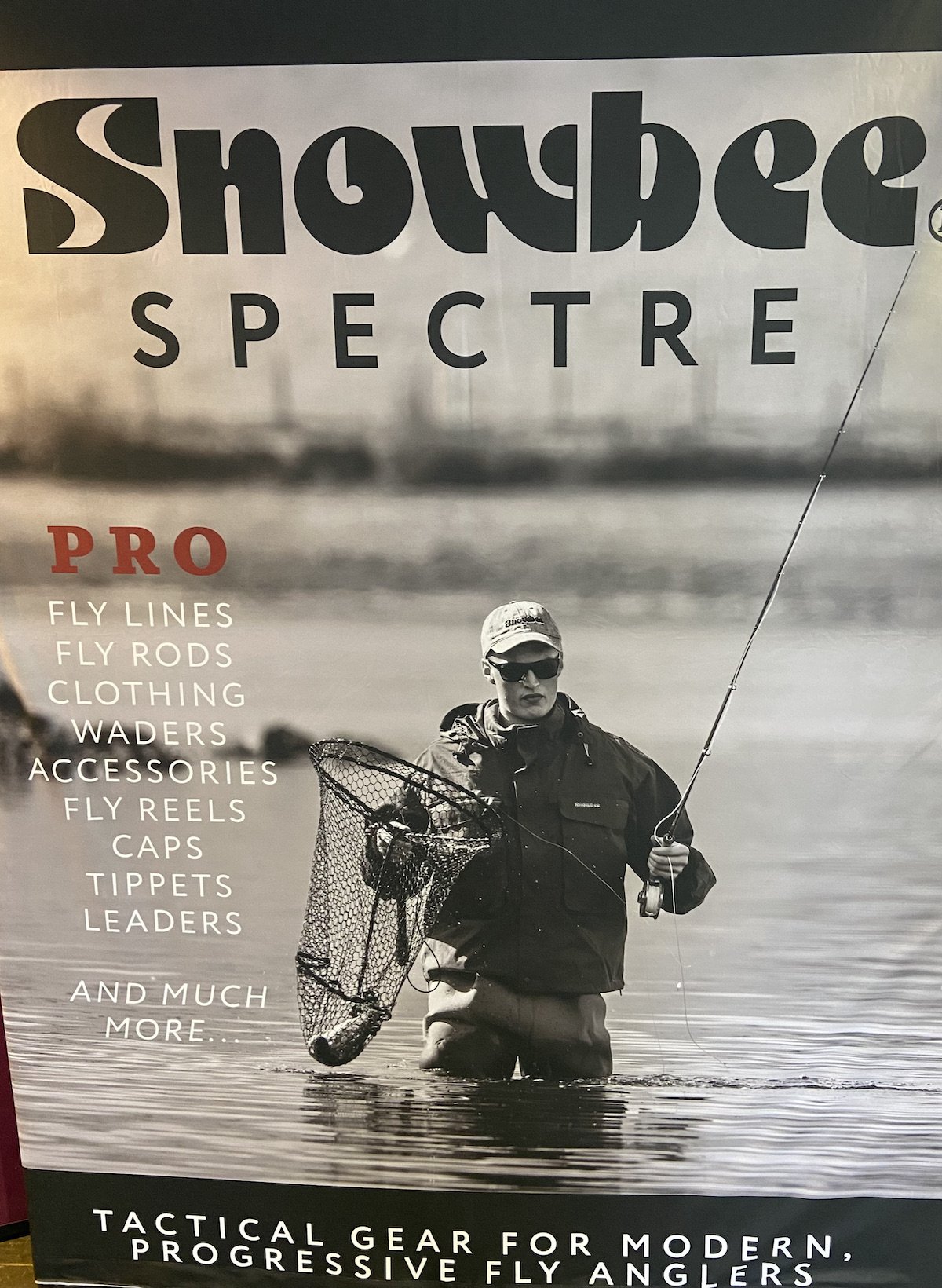
Gale force winds and heavy rain failed to dampen enthusiasm as keen fly fishers gathered around the many stalls within the spacious conference rooms. There was an impressive array of tackle, clothing and fly tying equipment on display along with representation from local angling clubs, associations and the hospitality sector. As always river conservation was high on the agenda with a real passion for the preservation of our rivers and wildlife within.
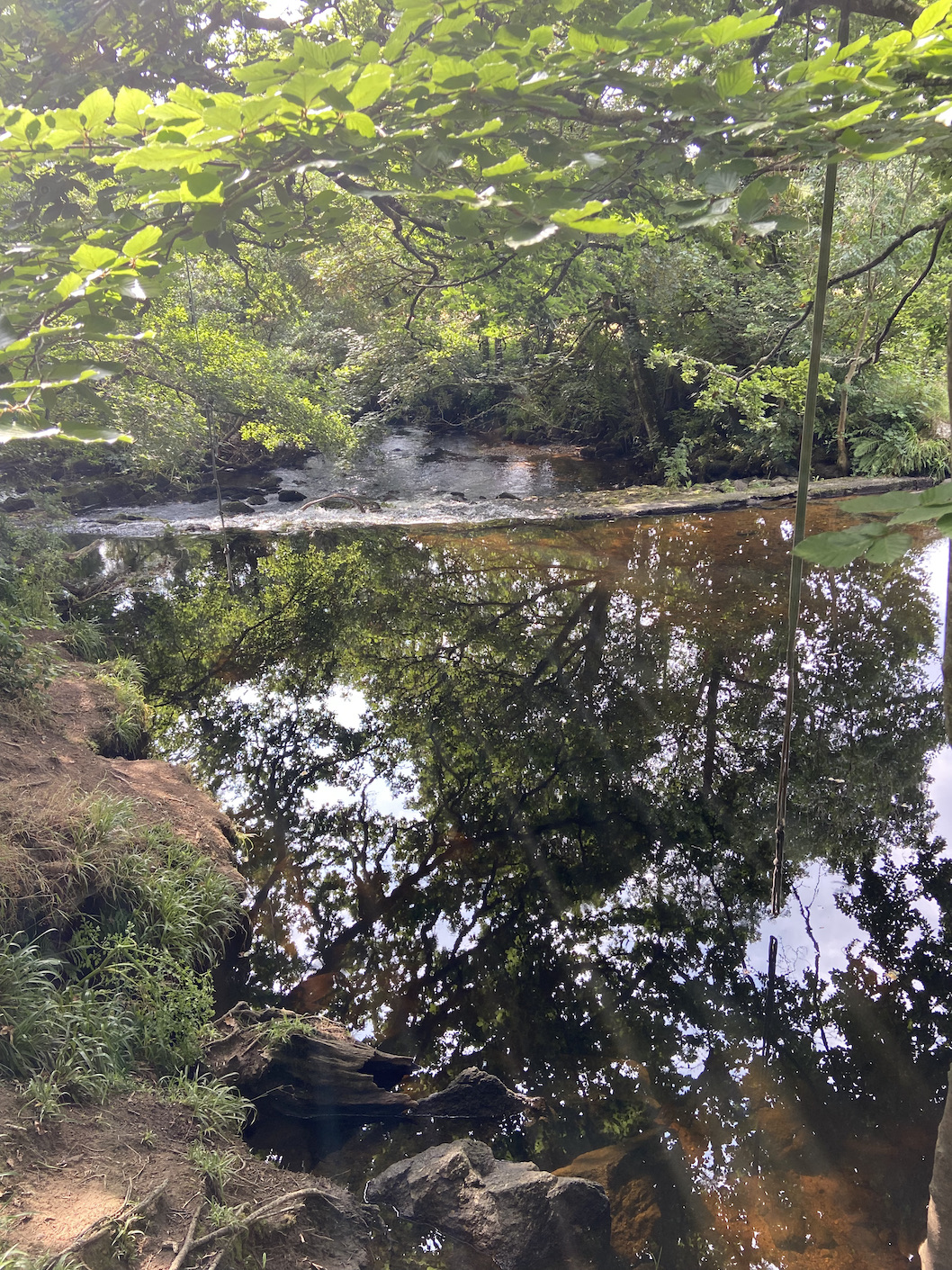
The River Teign Restoration Project that brings a story of salmon decline and the efforts to restore the river to its former glory was of particular interest to myself and I look forward to reading all about it in ‘The Teign Book’ written by local angler Neil Yeandle. The book now sits on my desk ready to read over the coming weeks. Glancing through its pages I can already see that it is an evocative story of catastrophic decline and sterling work to restore habitat that brings hope for the future.
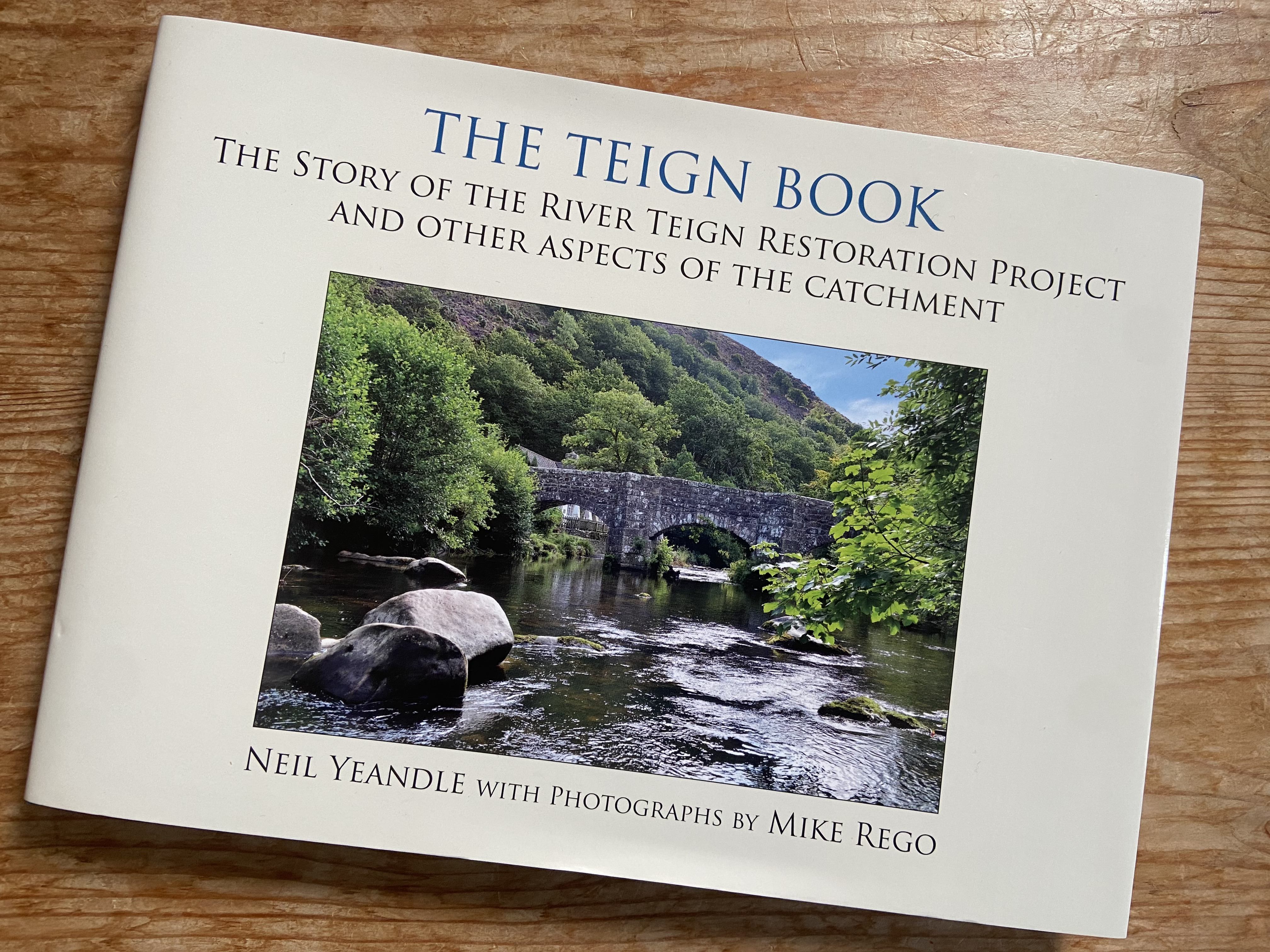
Former head of angling at South West lakes Trust Ashley Bunning was present with South West Waters Invasive species team highlighting the threats posed to our environment and native species. https://www.southwestwater.co.uk/about-us/latest-news/tackling-invasive-non-native-species-to-help-protect-our-wetlands
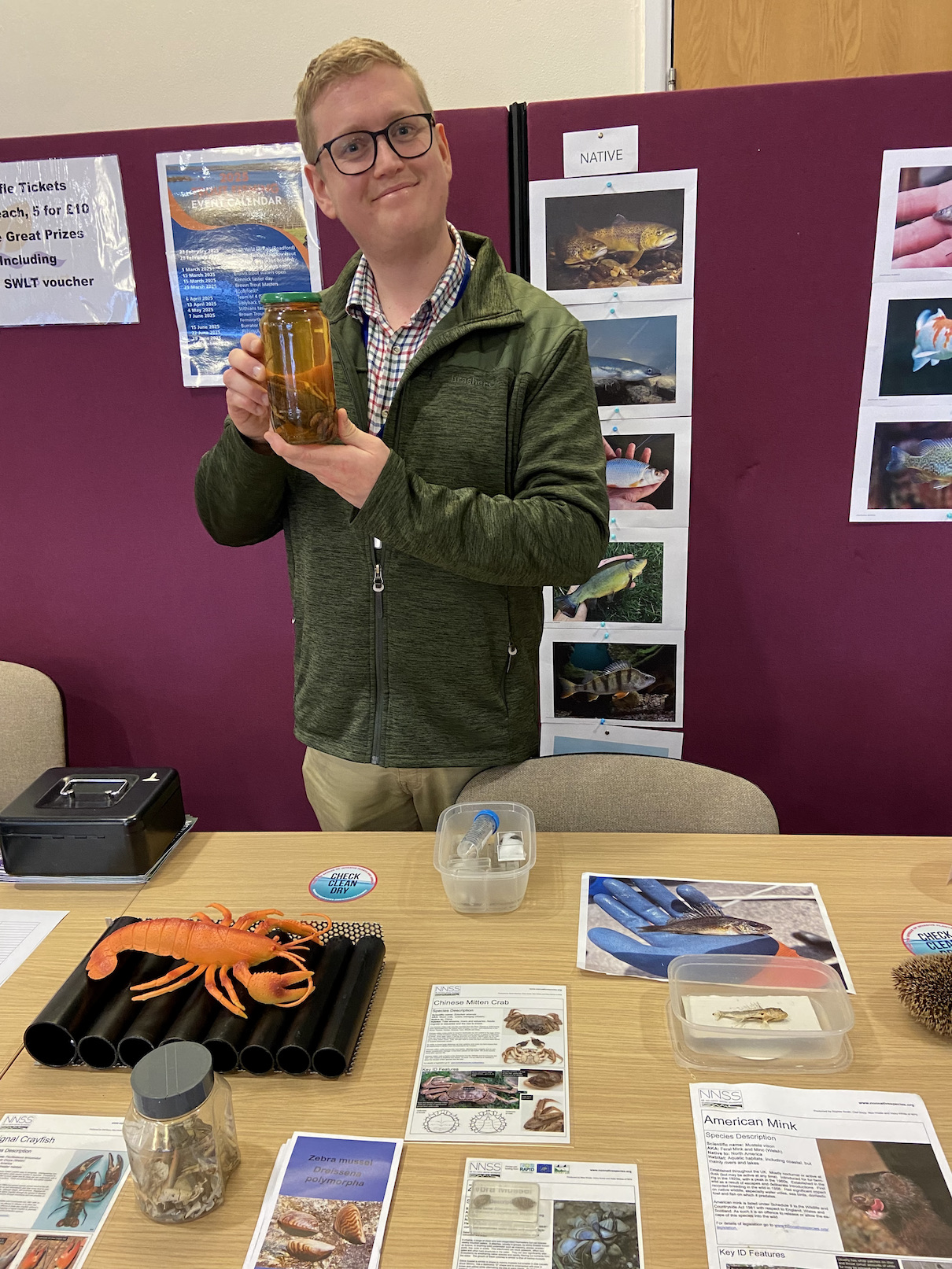
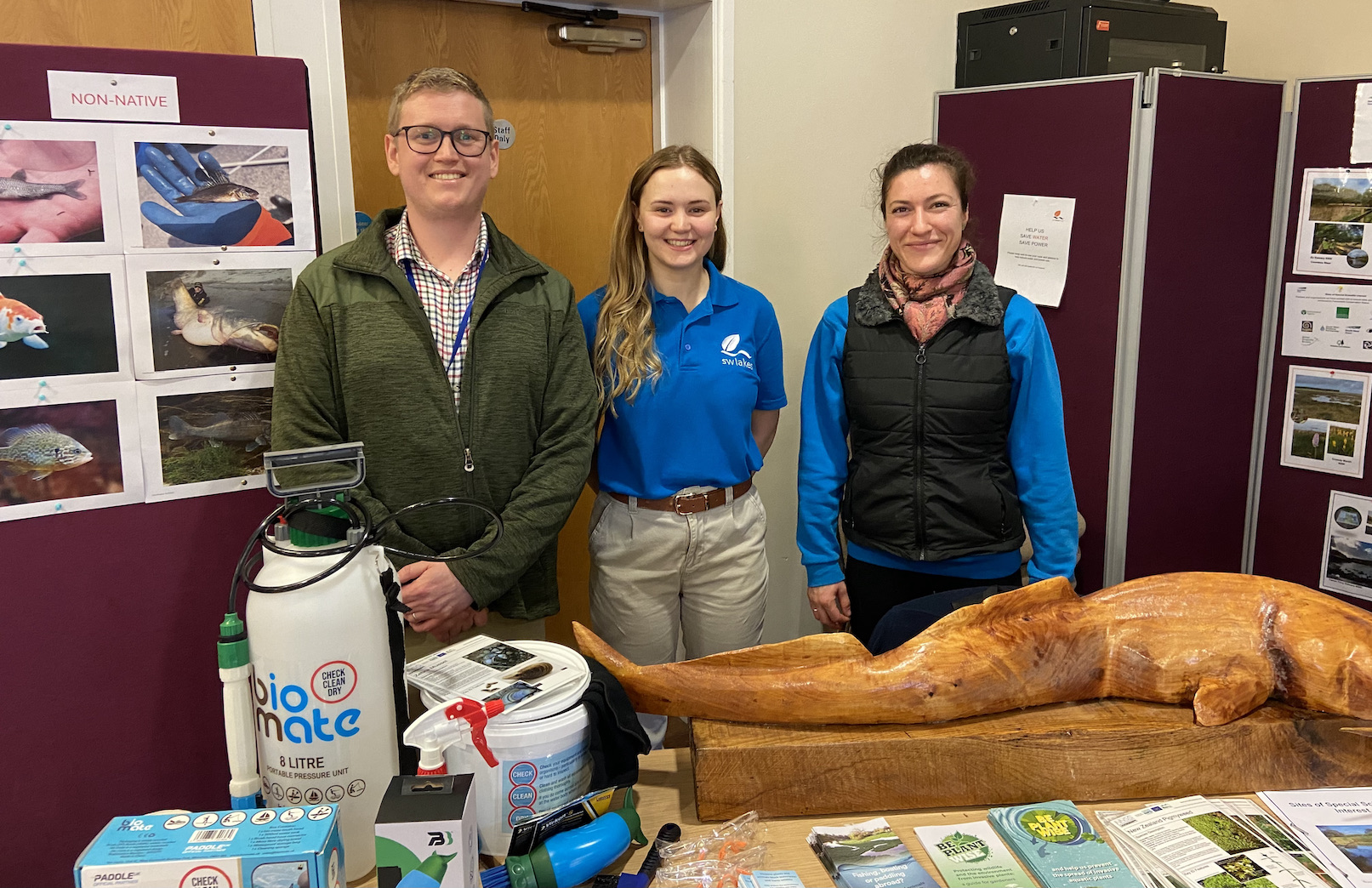
Talking with various organisations it would seem that 2025 is set to be a busy year for the regions anglers with plenty of events planned.

The Arundell Arms is set to host several events over the coming months starting on March 5th with a grayling day and showing of Jack Perks acclaimed film ‘Britain’s Hidden Fishes’. This Country Hotel steeped in angling history since 1932 has a sound future with the vastly experienced David Pilkington working with new fishing guide James Christoforou.

Leon Fisher is the new head of fishing at South West Lakes Trust and welcomed well respected angler and long-time supporter of the show Charles Jardine to open proceedings. Shortly after Charles took to the wet and windy outdoors to demonstrate the art of fly casting. Charles as always wielded his fly rod with deceptive ease to propel the fly line into the gale force gusts whilst casting valuable advice to the anglers sheltering in the porch area.
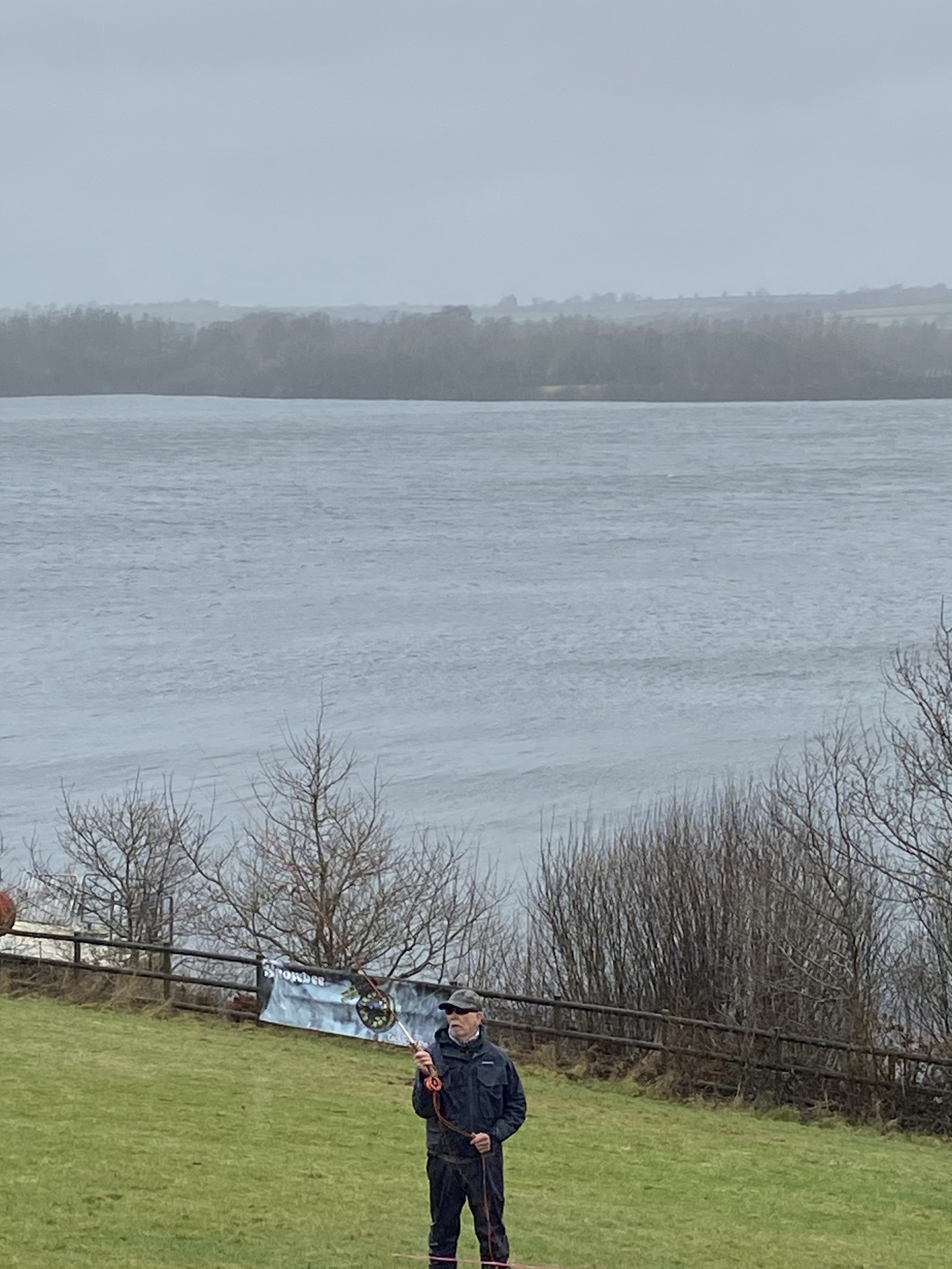
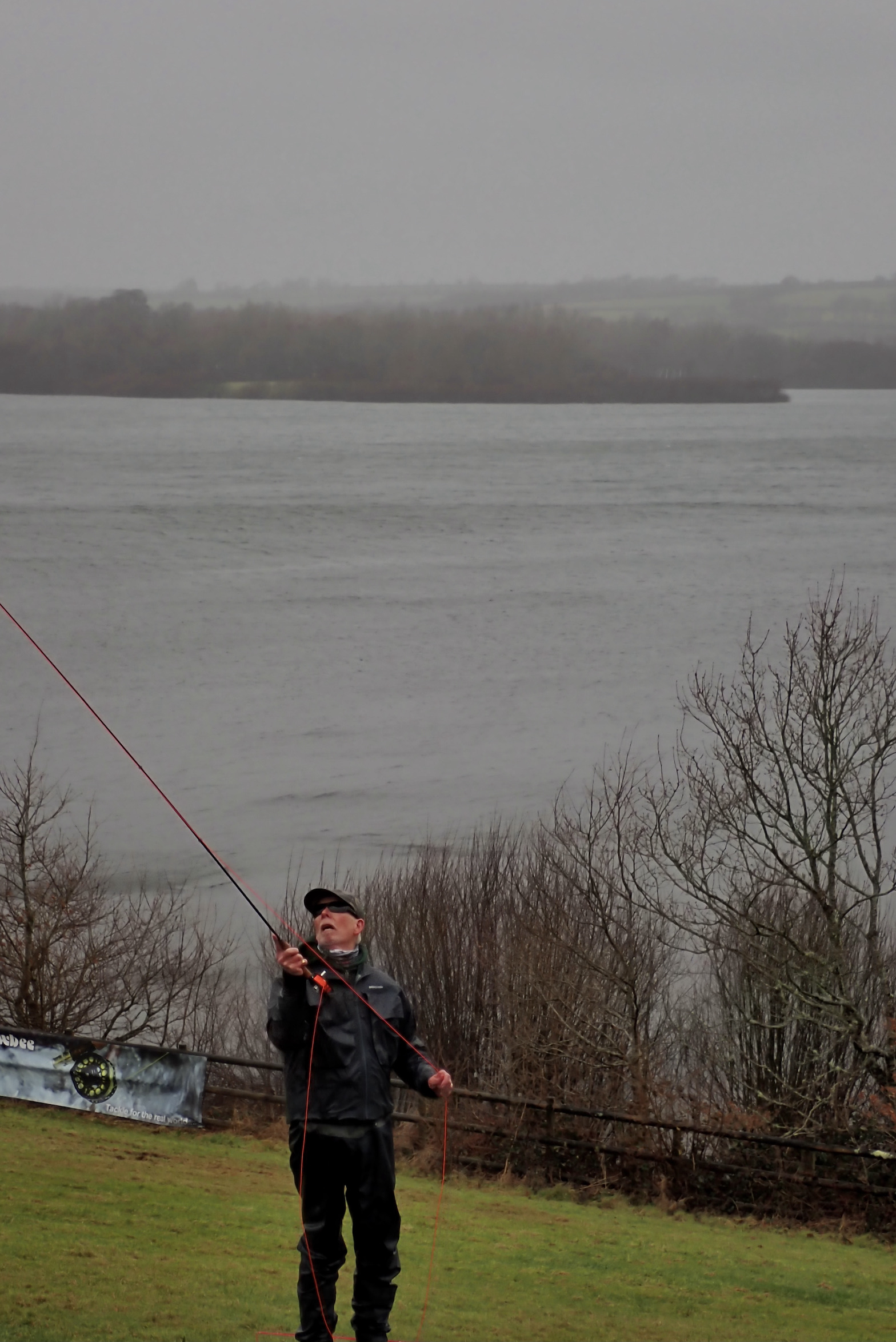
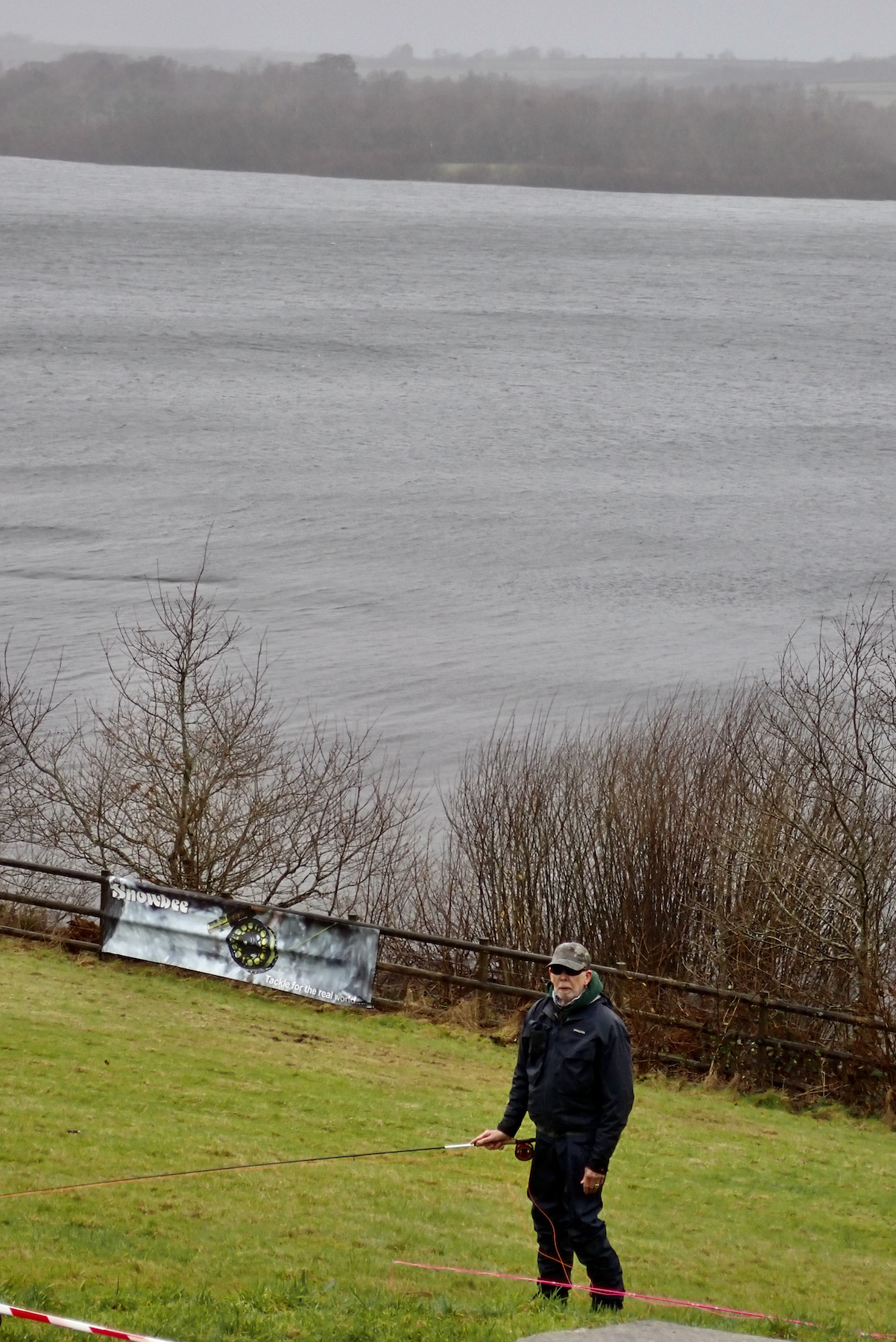
Charles stressed the importance of stance and how to hold the rod pointing out that these basic foundations are the key to consistent delivery of the fly to the target. A very important point is that protective glasses should be worn at all times. It was refreshing to hear Charles reflect upon the design of rods and their price tags. Whilst top of the range rods are a joy to use the actual performance is largely in the hands of the angler.
https://www.hanak.eu/en/about-us/company-hanak

I chatted with Local angling guide Lewis Hendrie who was on the Hanak stand with their team of dedicated fly anglers. Lewis has his routes on Exmoor having grown up in the village of Exford learning his art on the wonderful rivers and streams that cascade to Devon’s North and South Coasts. Chatting with Lewis he pointed out that he had featured as a rising star in the Fly Fishing world in my North Devon Journal Angling column twenty five years ago. It is the mixing and mingling with fellow anglers that is at the heart of this event. Whilst fishing is the vital link conversations often flow far wider contributing to a healthy community.
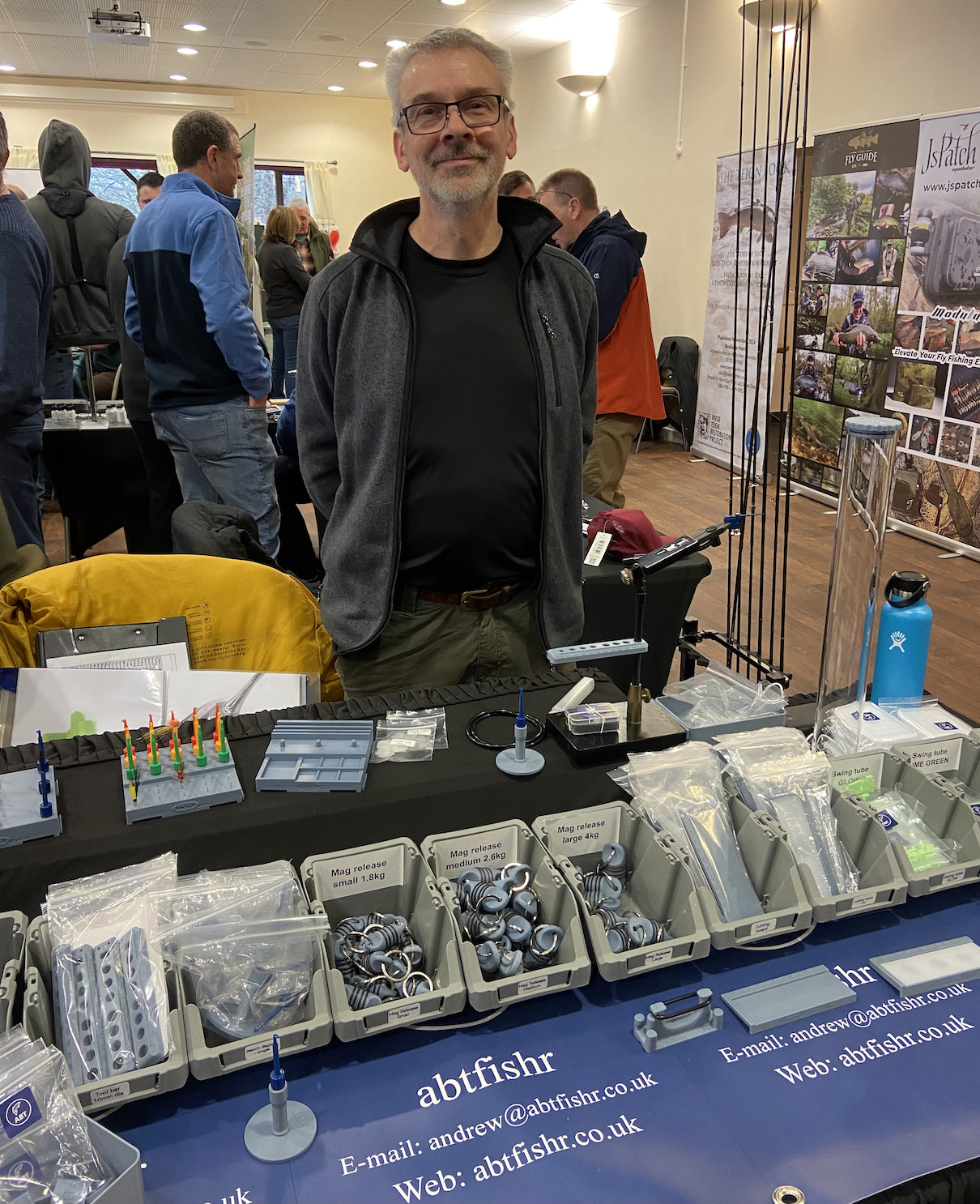
Andrew Beattie of https://abtfishr.co.uk
Always interesting to see new and Innovative products ABT have a range of robust products for fly fishing and other disciplines designed by Andrew. The LRF Critter cradle with disgorger caught my eye as a useful tool for the growing band of sea anglers exploring the fascinating miniture world of species hunting.
- Primary objective is fish care during for LRF angling
- Provides a clean fish friendly surface for unhooking
- Photography – a neutral grey compatible with camera exposure meters for good image exposure
- Competition card slot 68mm wide
- Integral knot tightener (on the measure extension)
- Measure & measure extension up to 300mm
- Small hook disgorger
- Light weight/ compact size for carrying
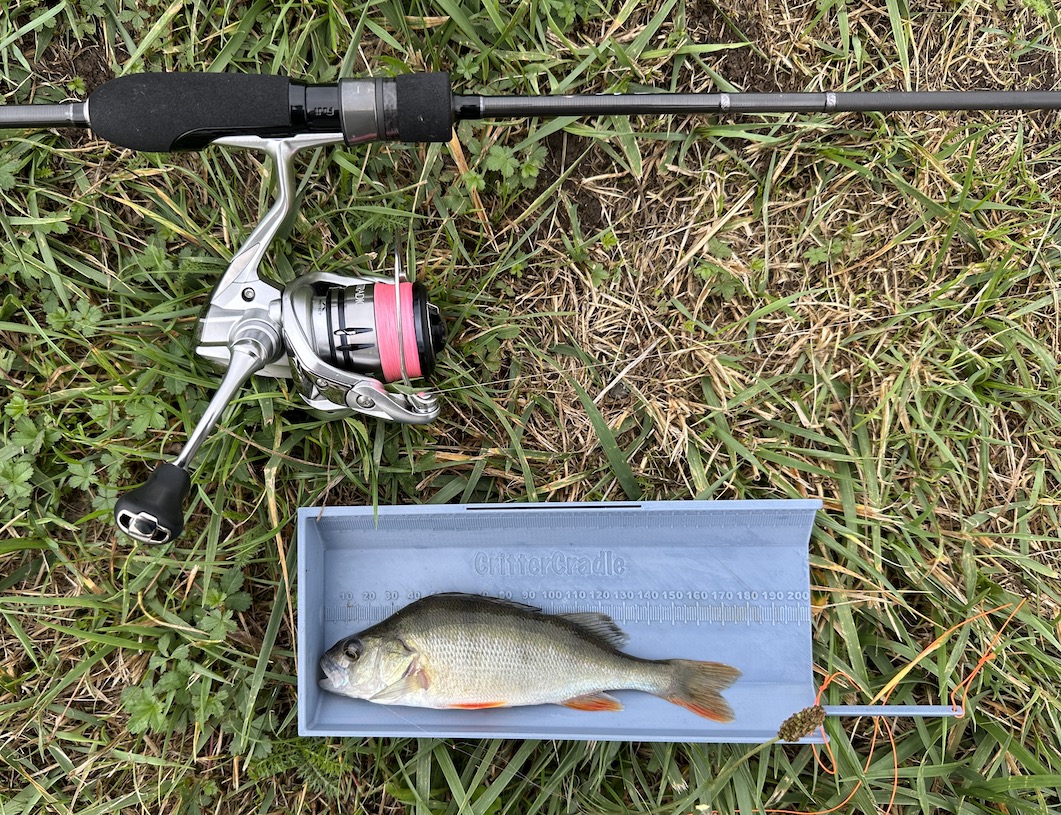
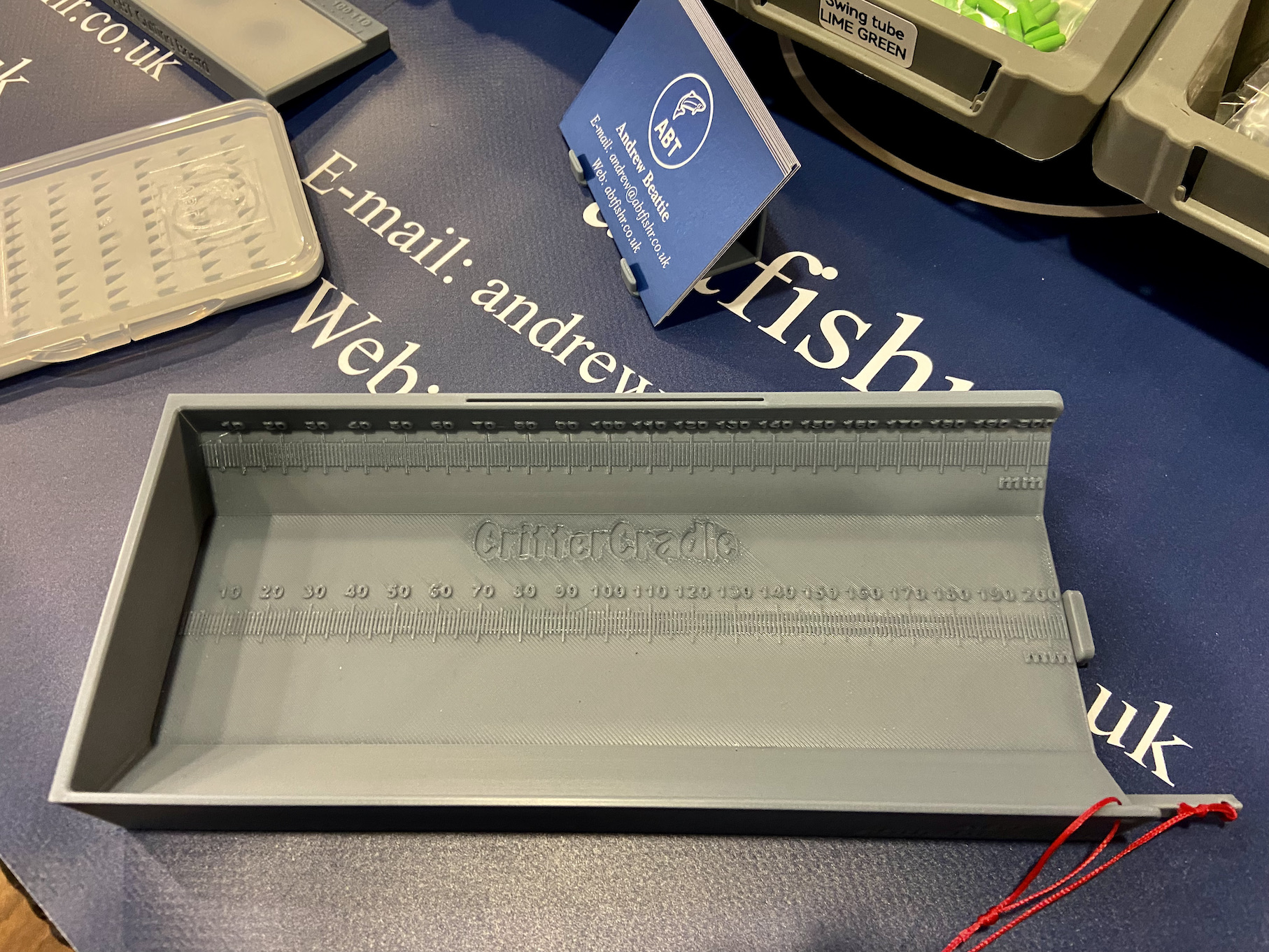
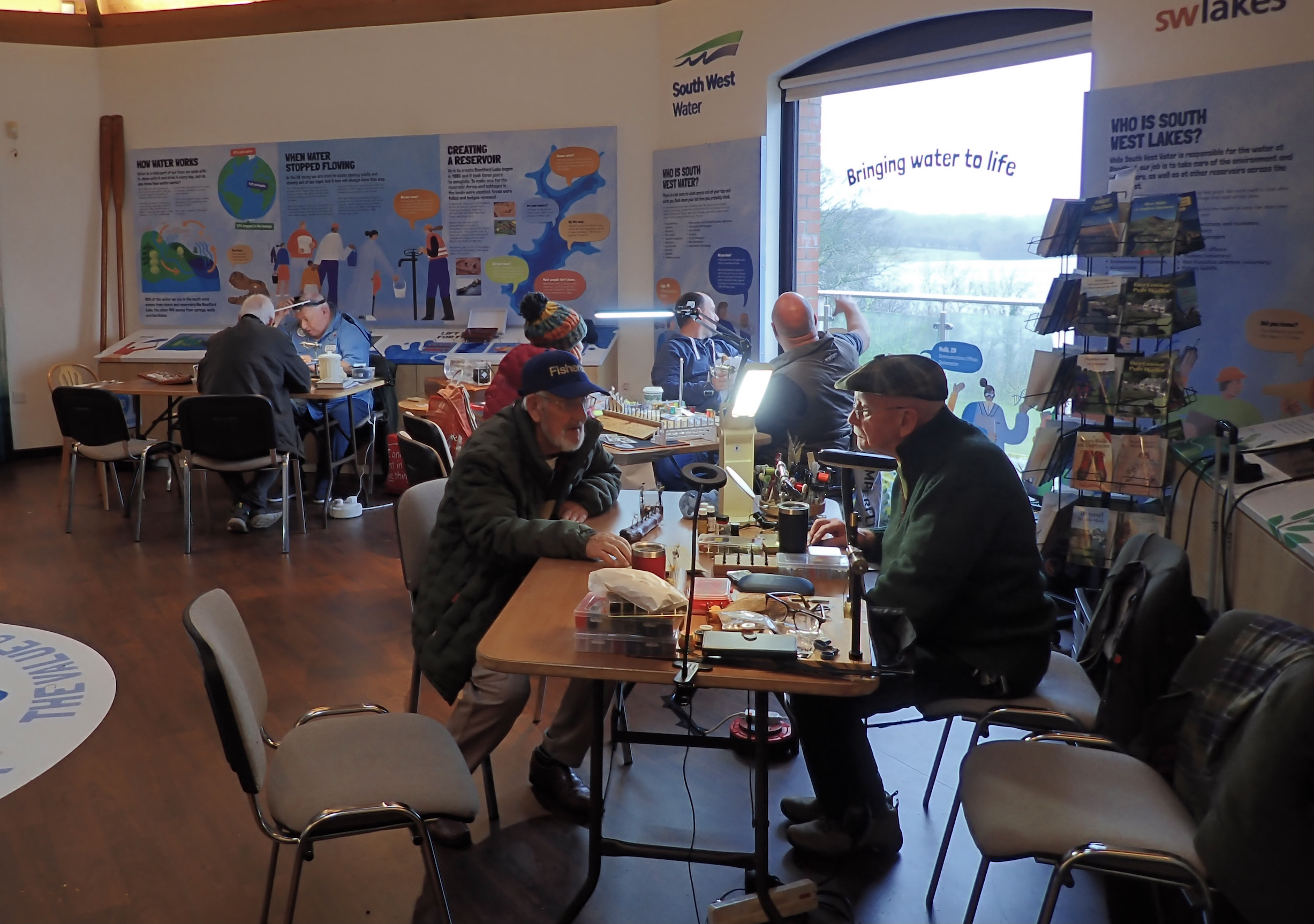
Fly tying features extensively at the fair those present creating a wonderful range of flies, lures and nymphs to tempt a wide range of species in many waters. Tiny dry flies and nymphs to temp wily wild brown trout and grayling. Gaudy lures for freshly stocked rainbows and those big mouthfuls for ferocious pike. Fly tying can be a hobby itself filling those long winter nights spent dreaming of those warmer brighter days ahead.
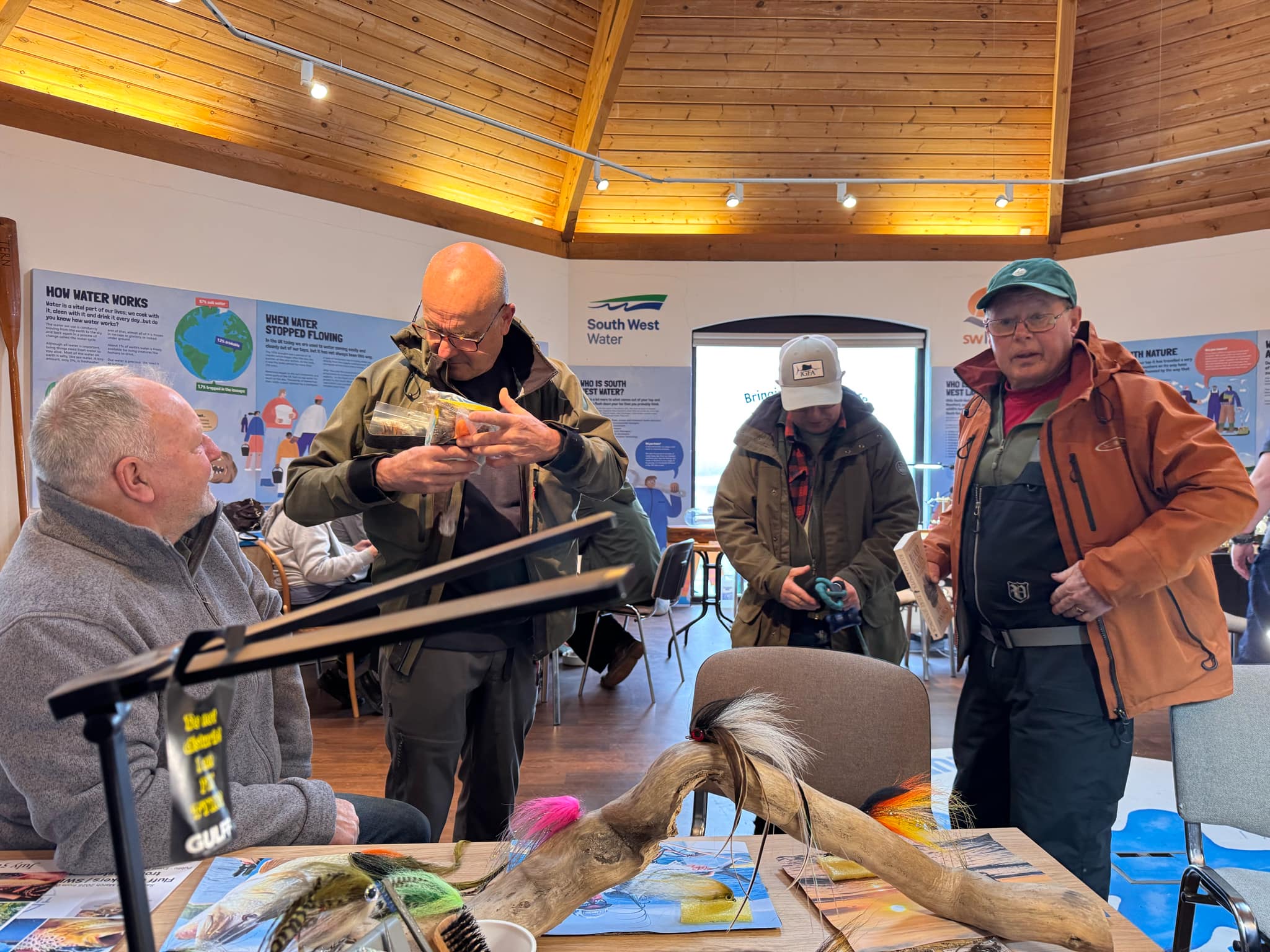
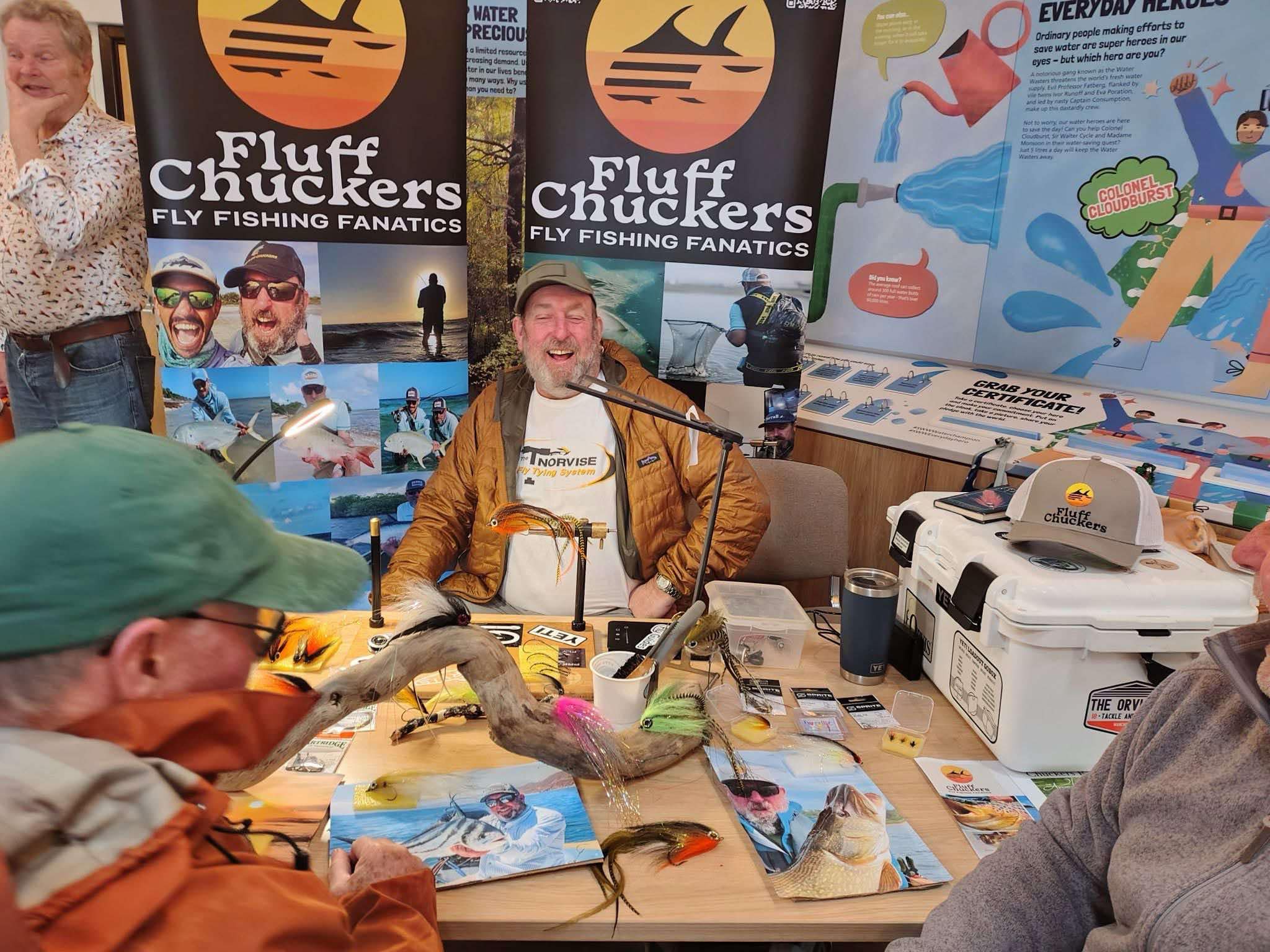
We are very fortunate in the West Country to have a vast range of waters to explore. One of the discussions at the expert forum between Charles Jardine, Rodney Wevill and Gary Champion was the wonderful places that fly fishing takes anglers to across the world. With a vital connection to nature highlighted by the speakers.

I returned home from the fair with my mind buzzing and full of inspiration for the coming season. The value of life and savouring each day and moment emersed in angling and the natural world is always highlighted at these events.
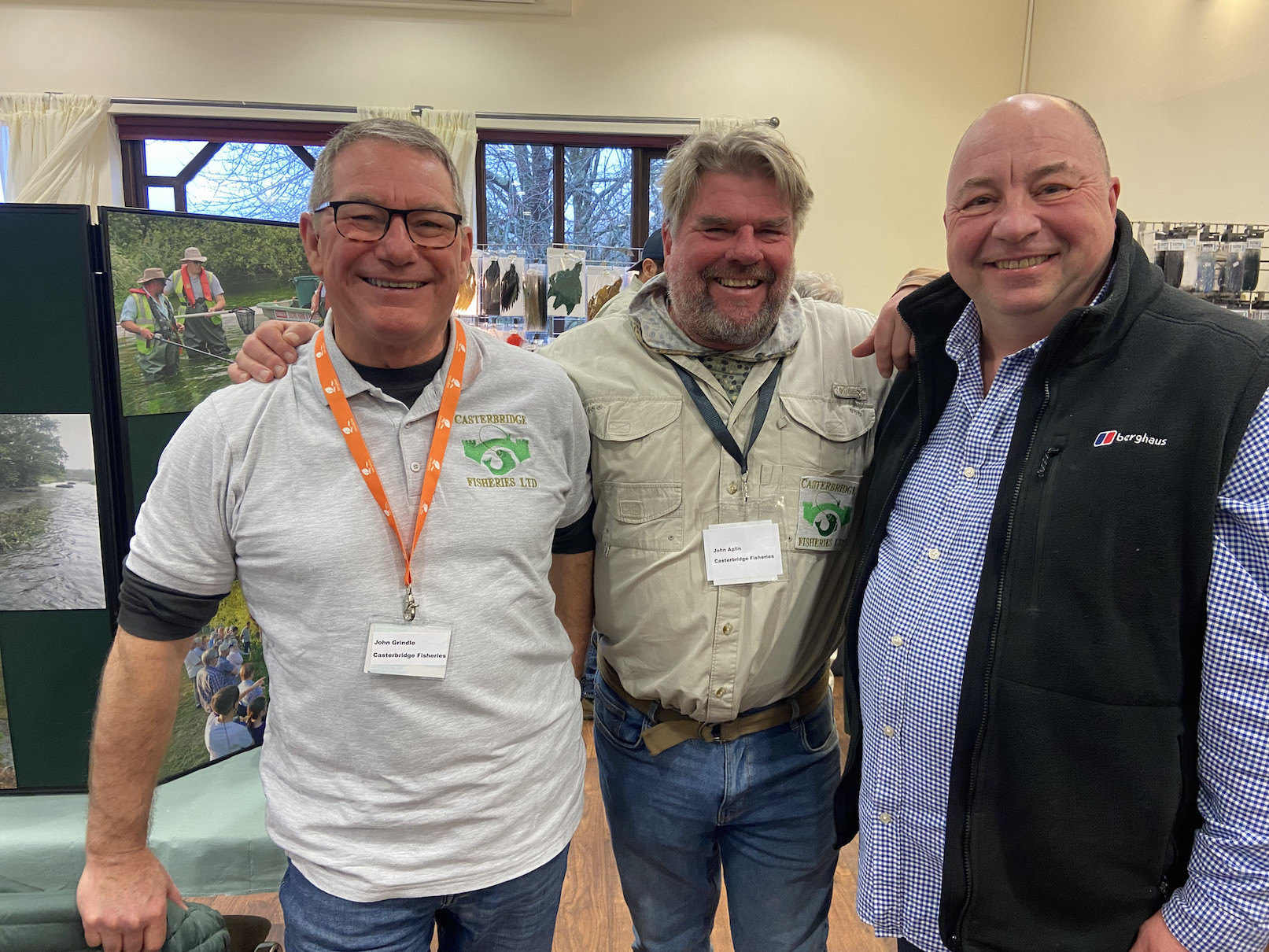
John Aplin (Centre) from Casterbridge Fisheries Ltd
Grayling in a timeless Valley
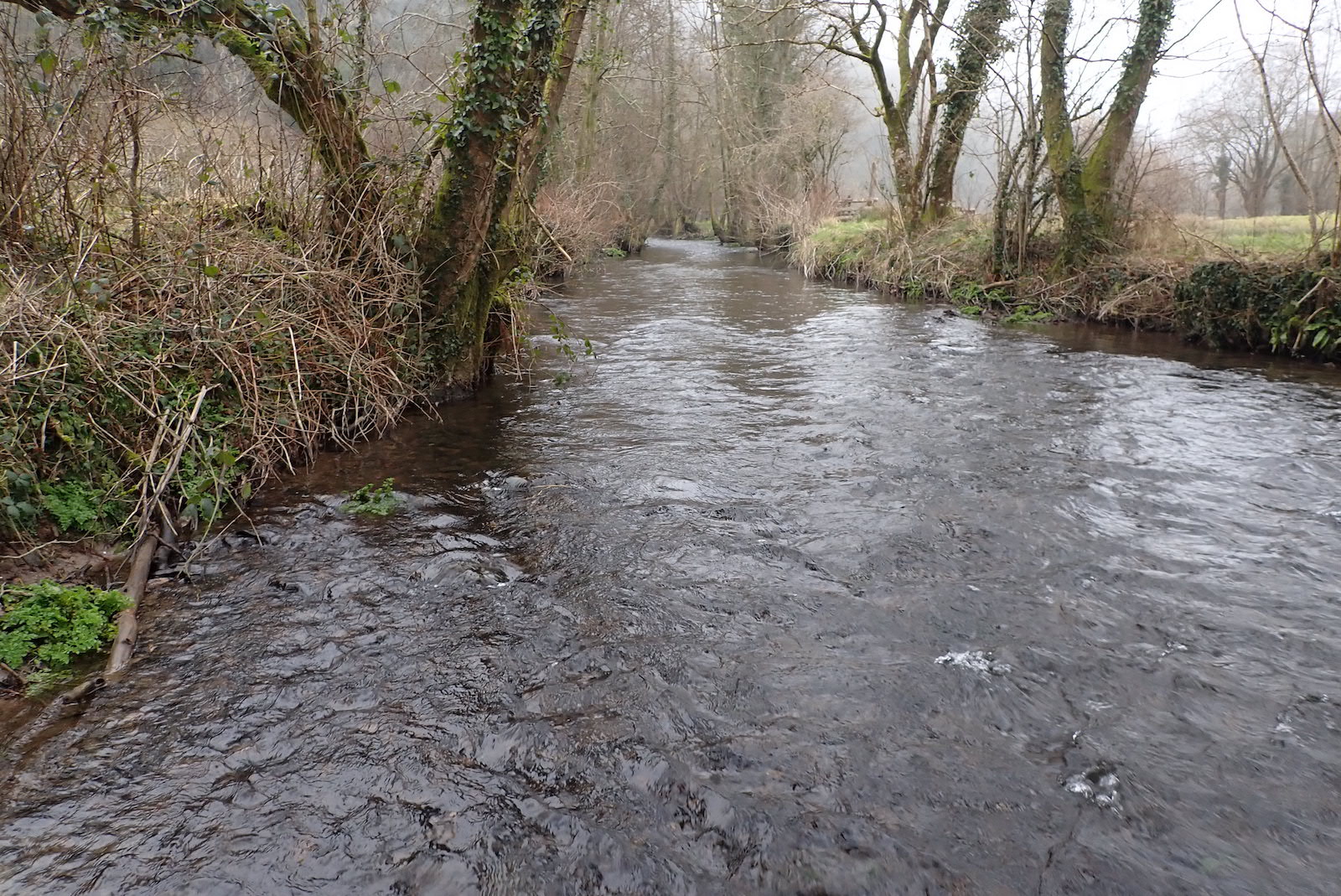
Trout Fishing for Beginners – with Directions for Dressing Flies for Trout and Grayling and useful Recipes
By Devonshire Fisherman ( Rev A Hughes)
The month of January is, unfortunately for the fisherman Artic in its conditions to tempt him to leave the fireside and pursue the gentle art: but February though it has well-earned itself the cognomen of “fill Dyke.” Is not always a wet month. There are many of its twenty eight days which possess a charm as fascinating to the piscator as the more genial breath of spring: when the fish are alert, and rise to the fly with exceptional readiness.
“About the year 1896 grayling were first introduced into the River Exe”. Five hundred yearlings.
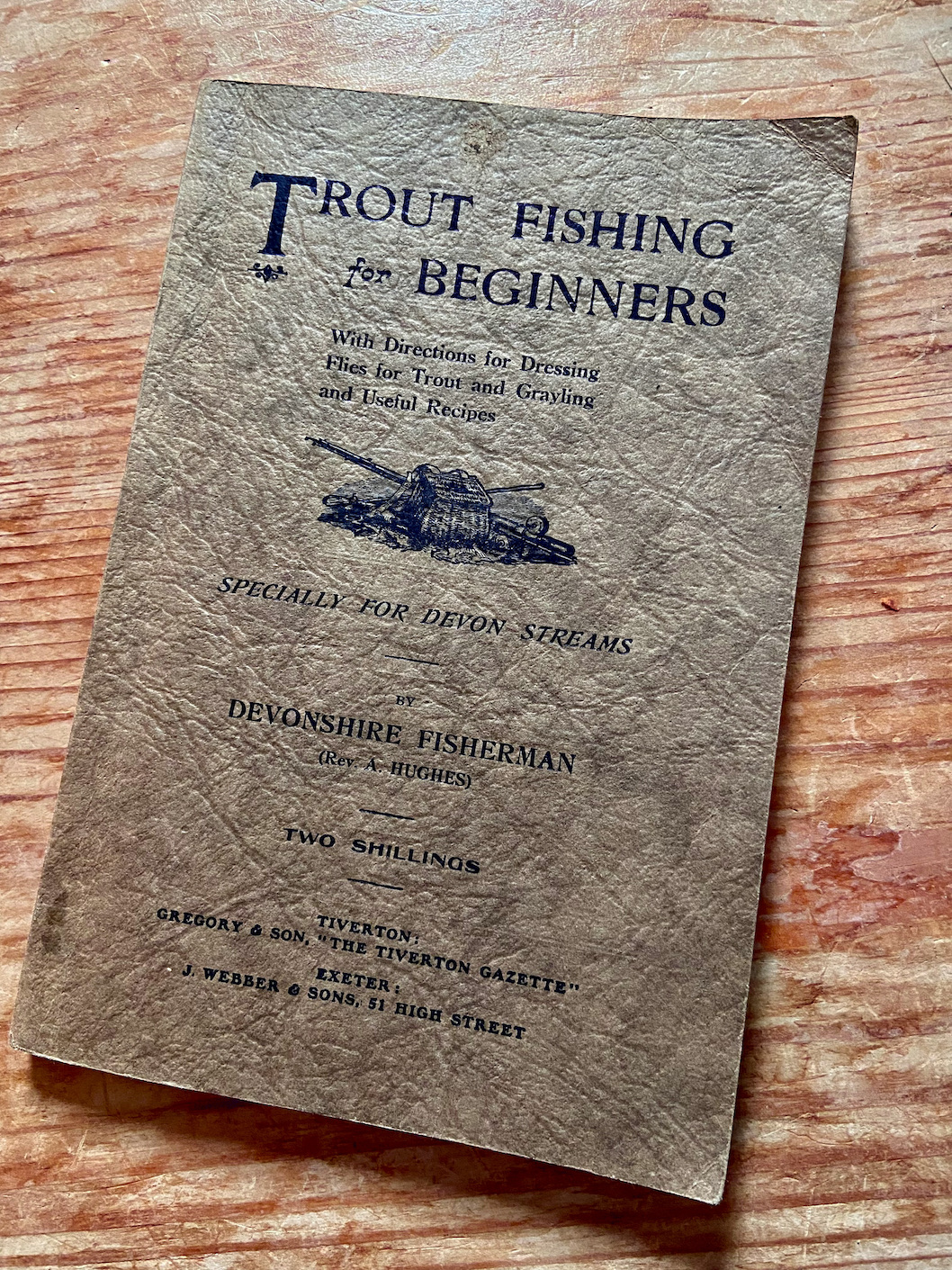
The River Haddeo joins the River Exe a couple of miles downstream of Dulverton and has a character all of its own. This is probably in partly due to the influence of Wimbleball reservoir that has impacted upon flows reducing flooding as the dam takes the sting out of any heavy rainfall events.
The Dulverton AA beat runs for about a mile upstream of the junction with the Exe and has a wealth of interesting features to explore. Grayling are a fish I have a fondness for part in due to the fact that they give an excuse to fish the river during the winter months when the landscape has a unique and beguiling atmosphere.
I waded beneath the old stone bridge that carries the A396 to enter the peaceful Haddeo valley. Working upstream the left of the River consists of woodland and pheasant pens used by the local shoot. High above on the hill are the remains of Bury Castle believed to have been built by William de Say before his death in 1144. A google search for William de say brings little reward so the history just adds a bit of mystery to the valley. To the right is farmland with sheep grazing and young lambs already in evidence.
The river is running clear and at a good height as I start to explore its pools and runs with a pair of heavy nymphs. Evidence of winter storms are all about with plenty of fallen trees and woody debris some of which will add to the rivers health and biodiversity even if it renders a few swims unfishable in the short term.
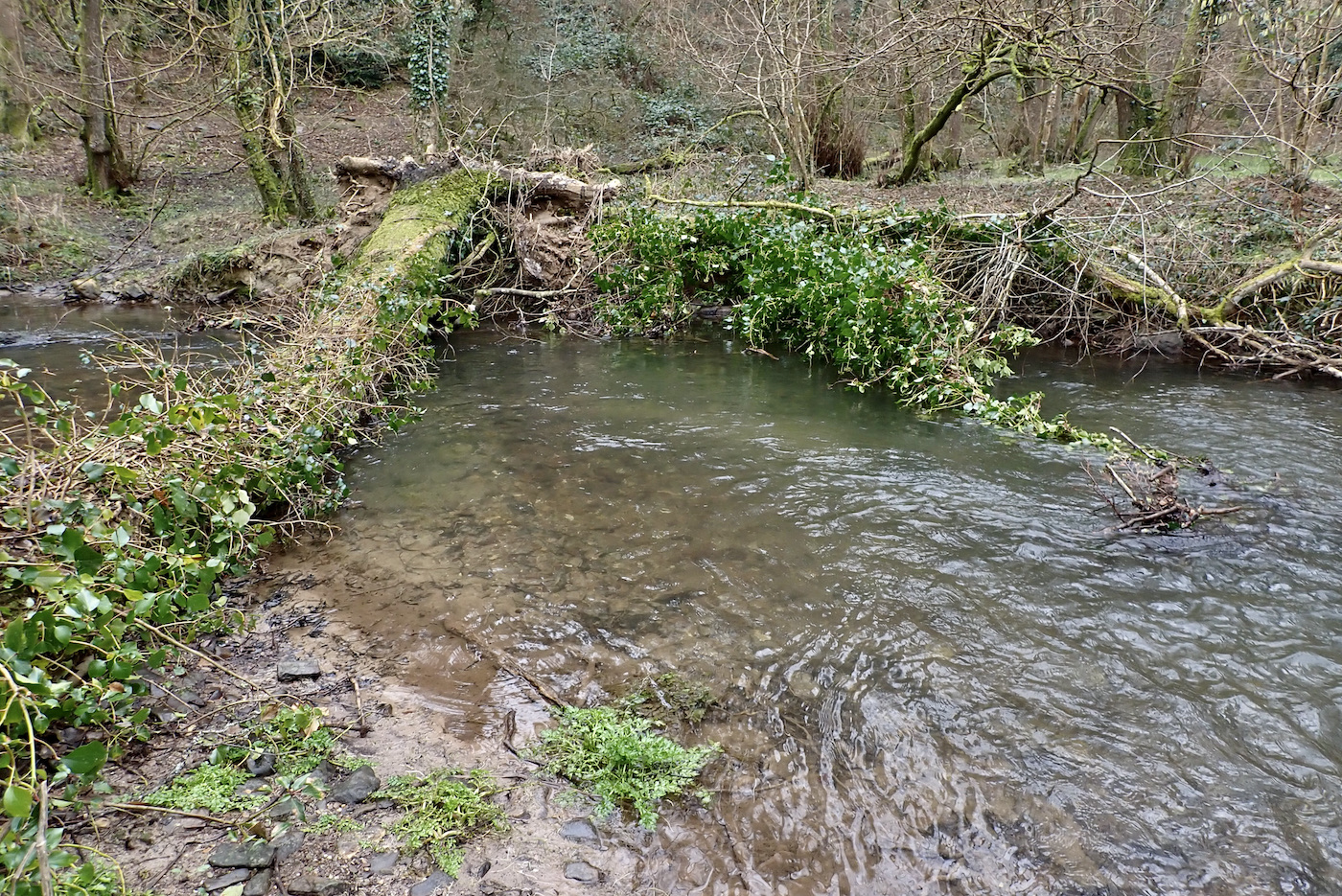
I fished this beat in January of 2024 over twelve months previous so I already have an inkling on the best areas for grayling. It is remarkable how the river often seems devoid of fish during the winter months. During the late spring and summer wild brown trout are abundant darting for cover in the clear waters and rising for flies. I catch a couple of out of season browns during the day but I often wonder where the majority retreat to in winter.
It’s an overcast misty day, cock pheasants, survivors of the shooting season strut arrogantly on the far bank eyeing me with suspicion. Snow drops add a welcome brightness to the gloomy day and foretell of the Spring days to come. A shallow pool is full of frogspawn a sight I have relished since a young boy fascinated with ponds and the life within.
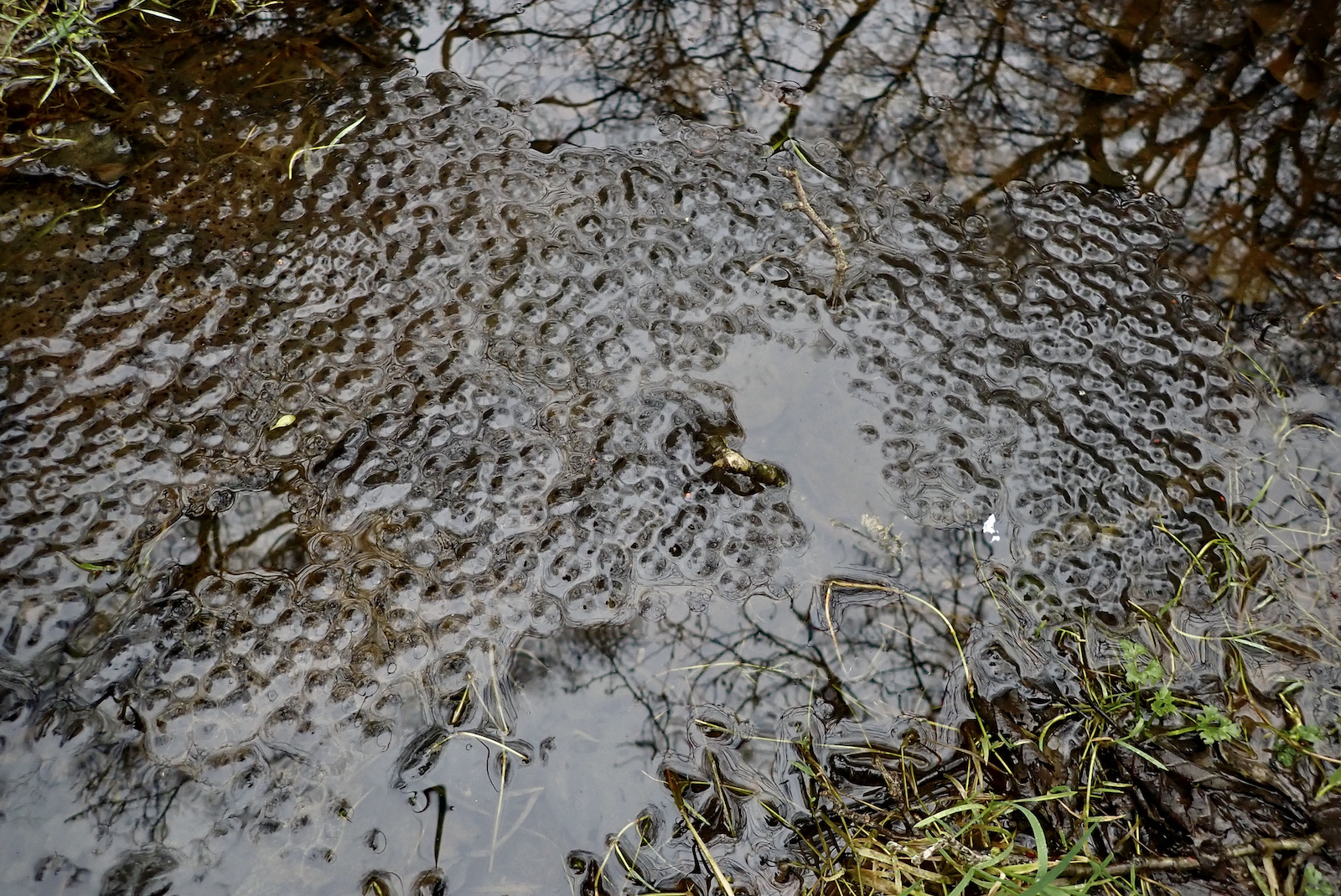
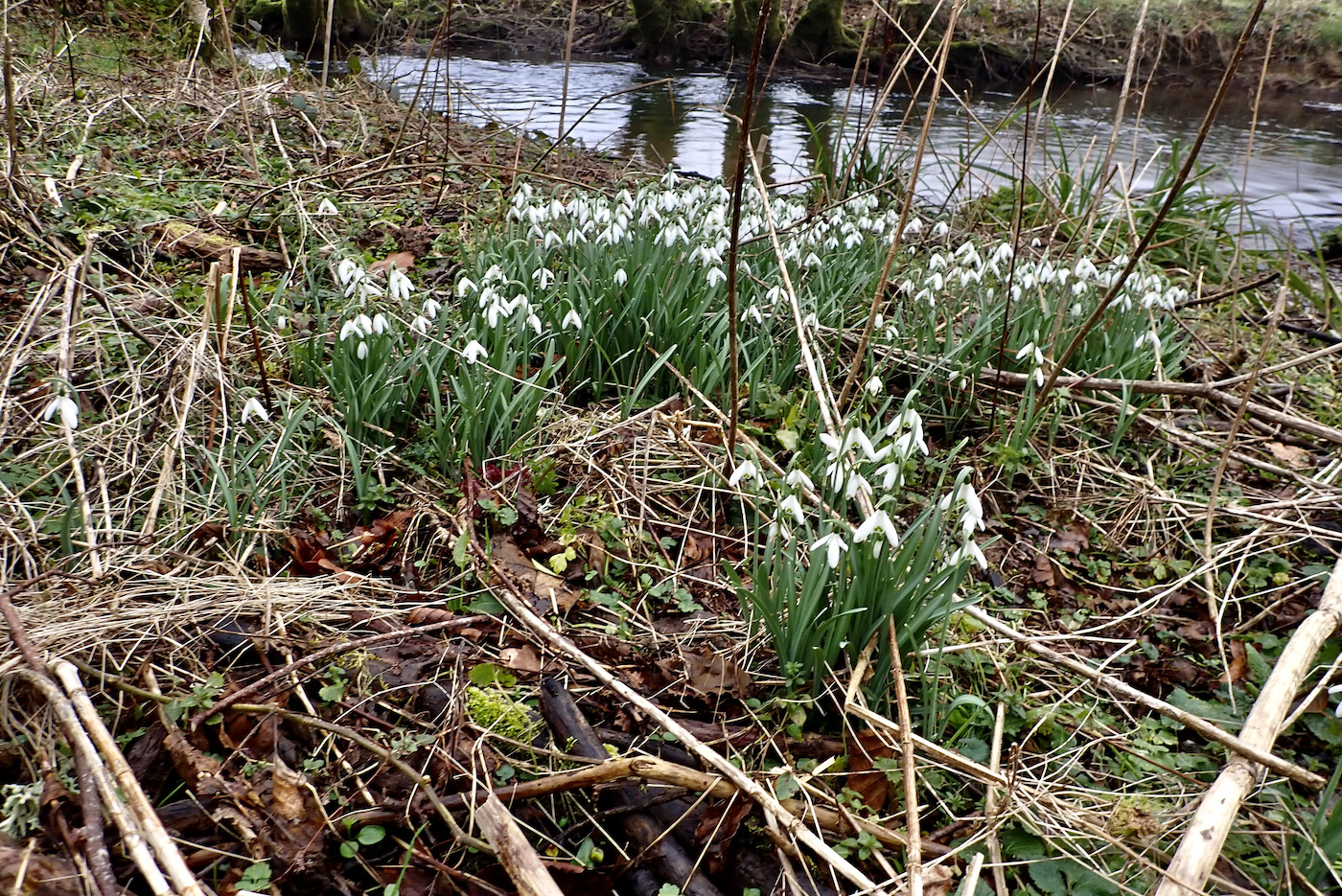
It is a joy to work my way slowly upriver allowing the nymphs to trundle close to the river bed. I watch the bright tip of my nymphing line intently lifting the rod each time it pauses feeling for a fish. After half an hour or so in a small pool I lift the rod and feel that wonderful life throbbing at the end of the line. The 3 weight rod bends pleasingly as I glimpse the silver flanks of a grayling its crimson sail like dorsal fin adding momentum as it holds in the fast flow. A pleasing fish of perhaps 8oz is soon safely in the net and slipped carefully back into the river.
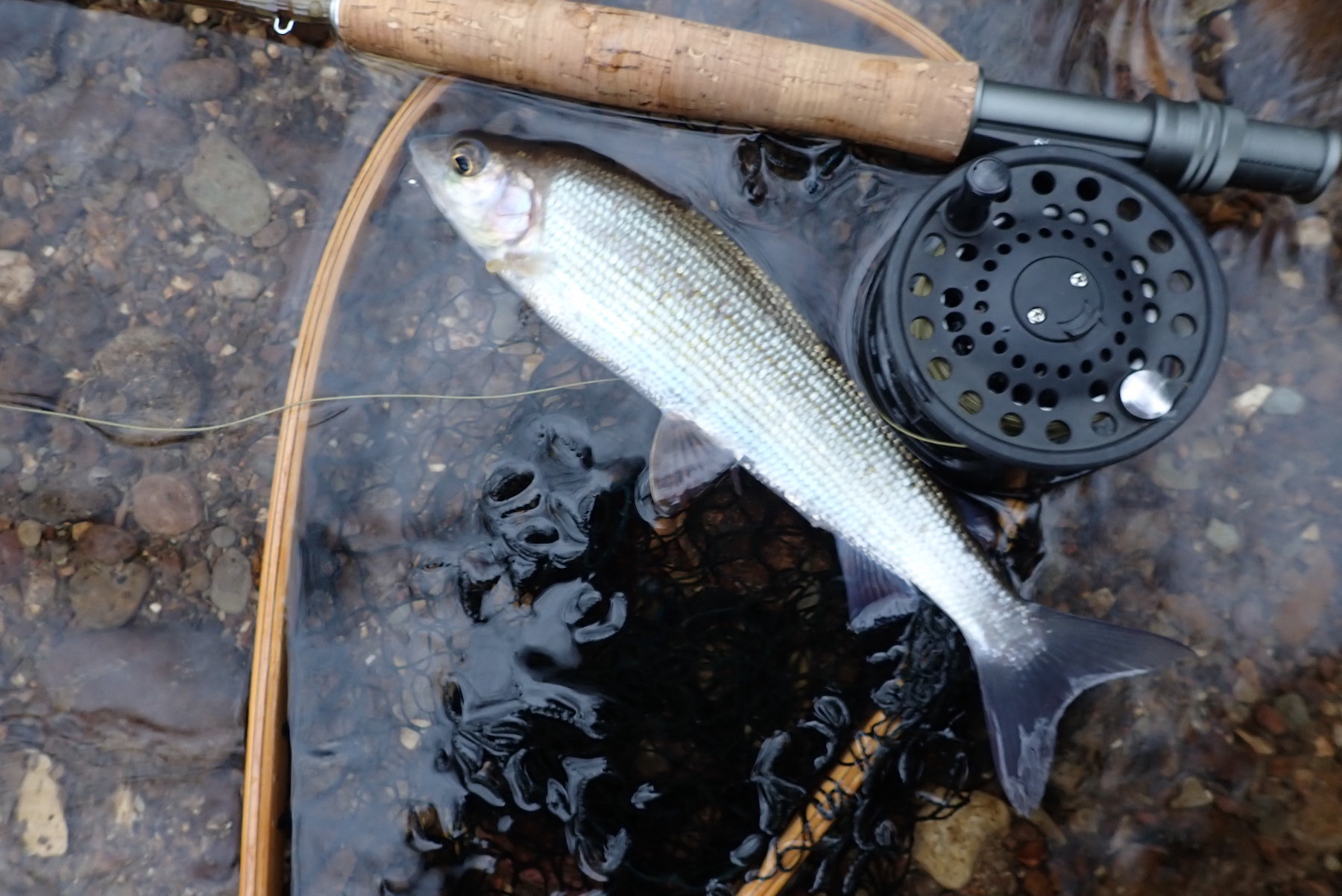
Catching that first fish of the day always brings a certain contentment for whilst it doesn’t really matter in the grand scheme of things it does bring satisfaction for when asked later about the day you can at least report upon a degree of success.
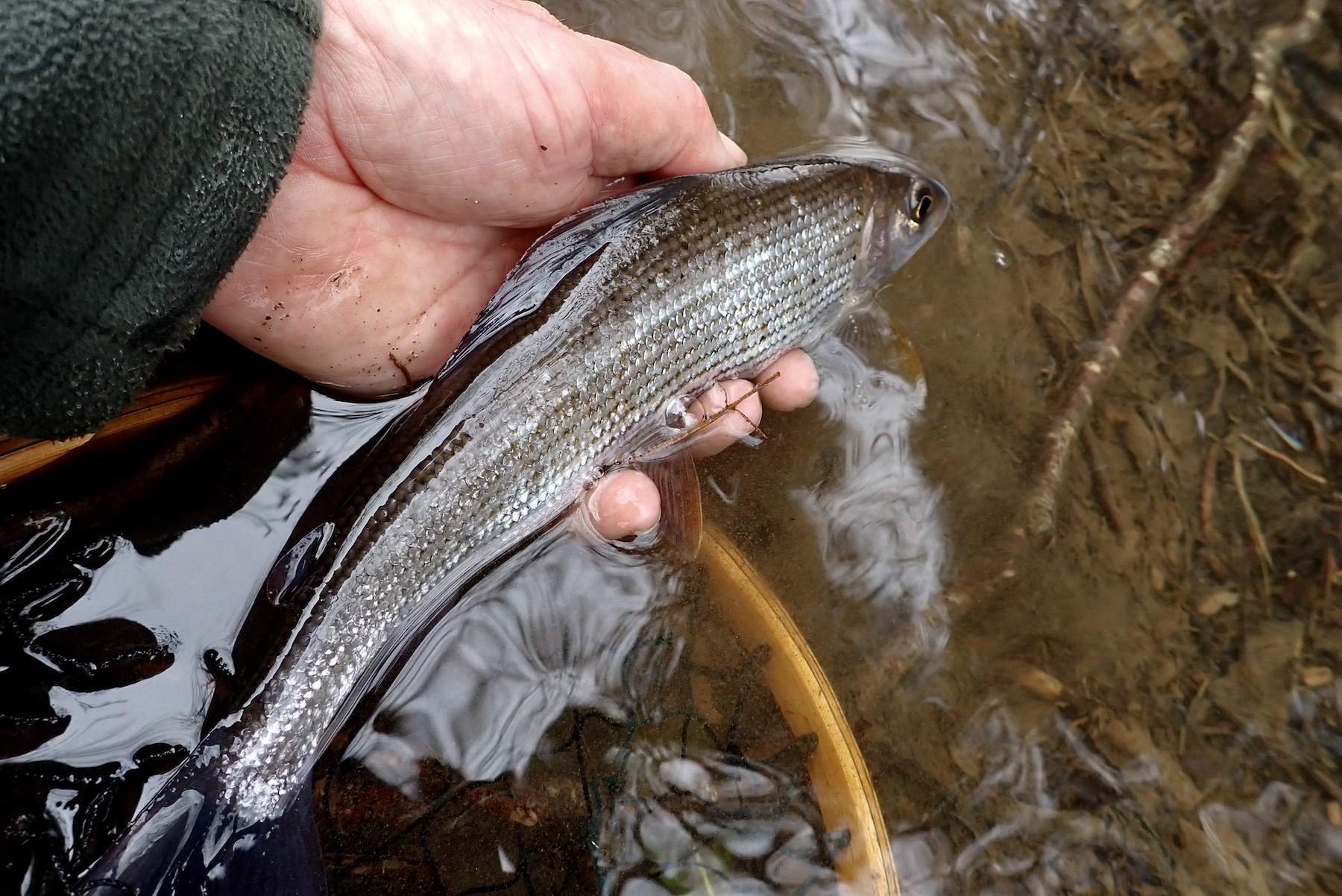
I fish on upriver and eventually come to a deep lie from which I extracted a grayling on my visit last year. To some extent success always encourages that little extra perseverance next time you fish. A fact that often leads to the belief that you have located a hotspot when you may perhaps have just had an extra drift or two because you believe. Anyway the line twitch’s just where I expect it to and the second grayling of the day is soon netted.
A few yards upriver there is a tempting deep looking pit where I prospect carefully. The line again pulls tight and there is another pleasing tussle with a lovely plump grayling of 12oz or more. Whilst these Devon grayling seldom reach the weights of their fellows in Dorset or Hampshire they can only be judged on the rivers they dwell in and on light tackle they offer superb and challenging sport.
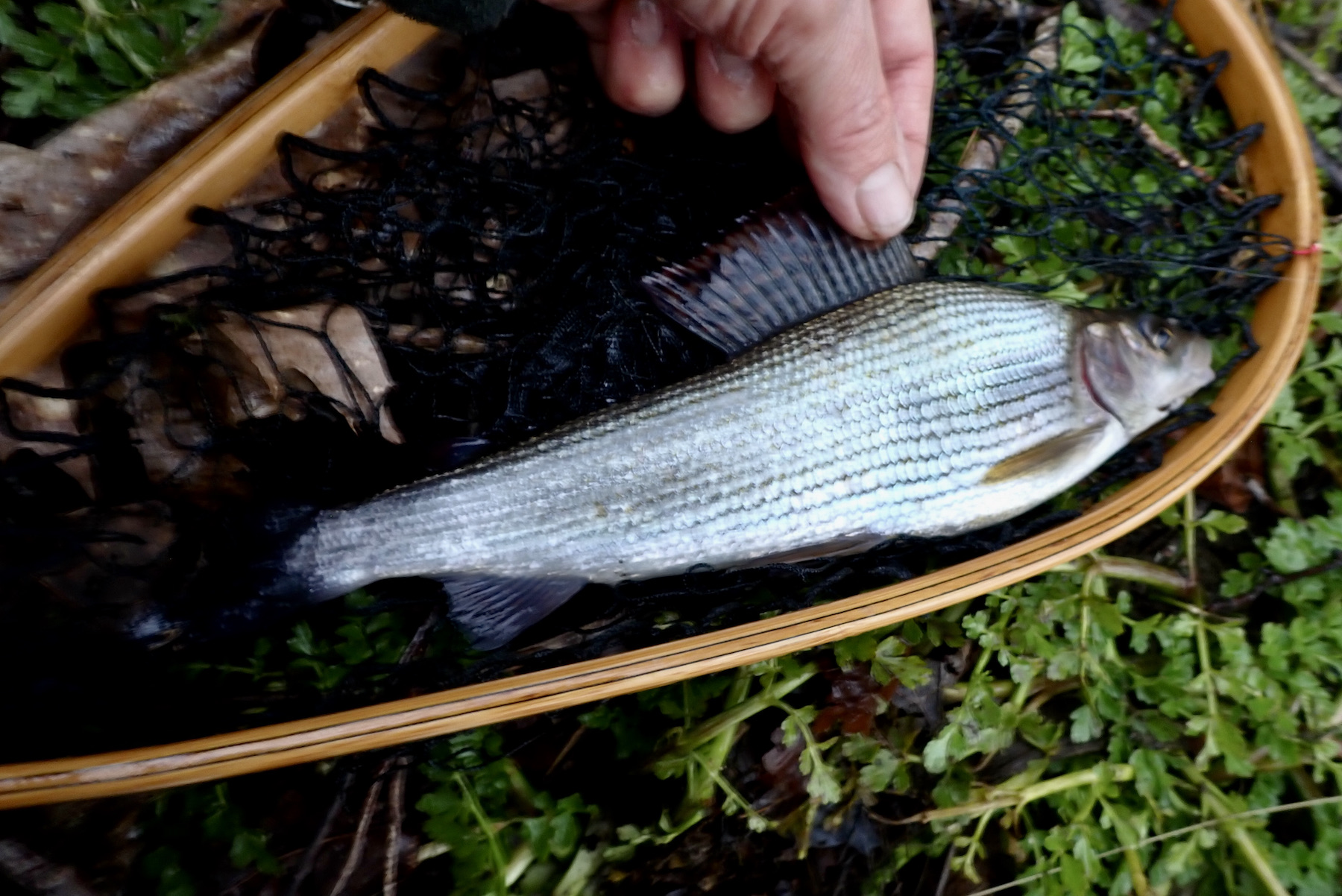
Before starting to work my way back down river I pause to savour the scene. Country cottages across the valley woodsmoke drifting into the still cool air. An ancient oak tree stands beside the river its immense worn and weathered trunk testament to its age. It is fascinating to ponder for a moment or two on the history of this tree and what has transpired through its long life. Generations of anglers have fished this stream. Children from the village have undoubtedly caught trout here in days gone by drifting worms perhaps ignored and tolerated by the river keeper of the day. Poachers would undoubtedly have taken salmon from these waters during the late autumn and winter. Both types of poacher are seldom seen these days for children sadly seem to have lost the freedom and inclination to connect with rivers whilst the salmon are no longer there to poach in any number.
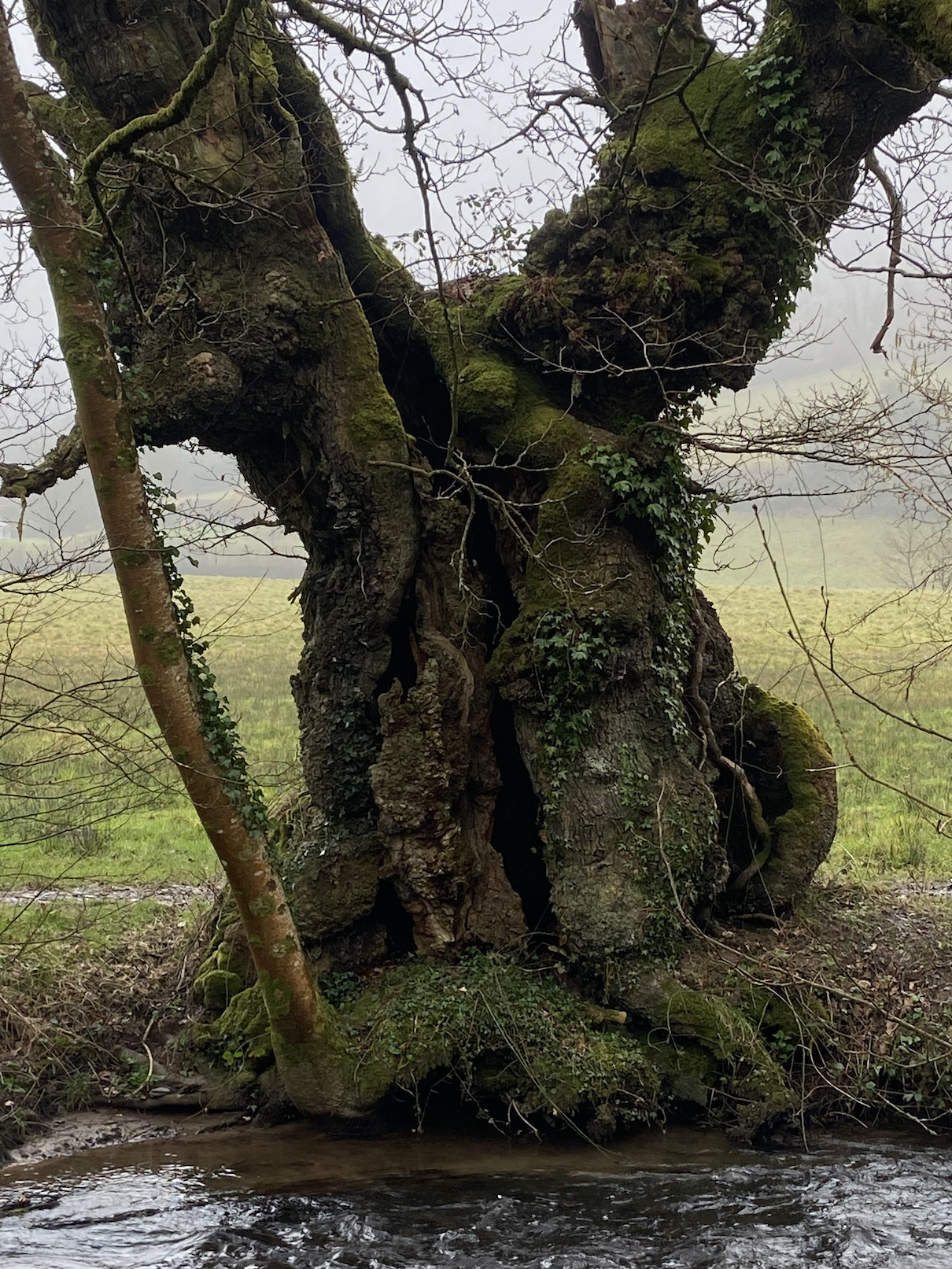
These observations only relate to the past fifty or so years. The old oak could be four hundred years or more old dating from before the Industrial revolution and witness to the many wars and tribulations of mankind. I guess the reassuring ever rolling stream and majestic oak bring a certain grounding to ones soul as we fish these pleasing rivers of life. In his new book due to be released this spring Robert MacFarlane askes the question. “ Is a River alive?” .
https://www.sevenfables.co.uk/product-page/book-is-a-river-alive-robert-macfarlane-1
Standing within these cool, enchanting waters the answer is surely yes and that its life is long, unlike our own lives in the words of the rock group Jethro Tull,
“Life’s a long songBut the tune ends too soon for us all”.
I retrace my steps back down river as the afternoon light begins to slowly fade. Ancient trees towering in the misty landscape. I look forward to returning in a month or so when those crimson spotted brown trout will rise, spring flowers will decorate the river bank and birdsong will reverberate through this peaceful timeless valley.




